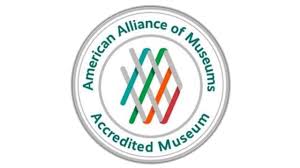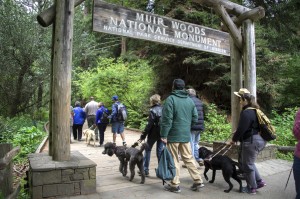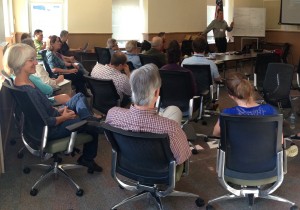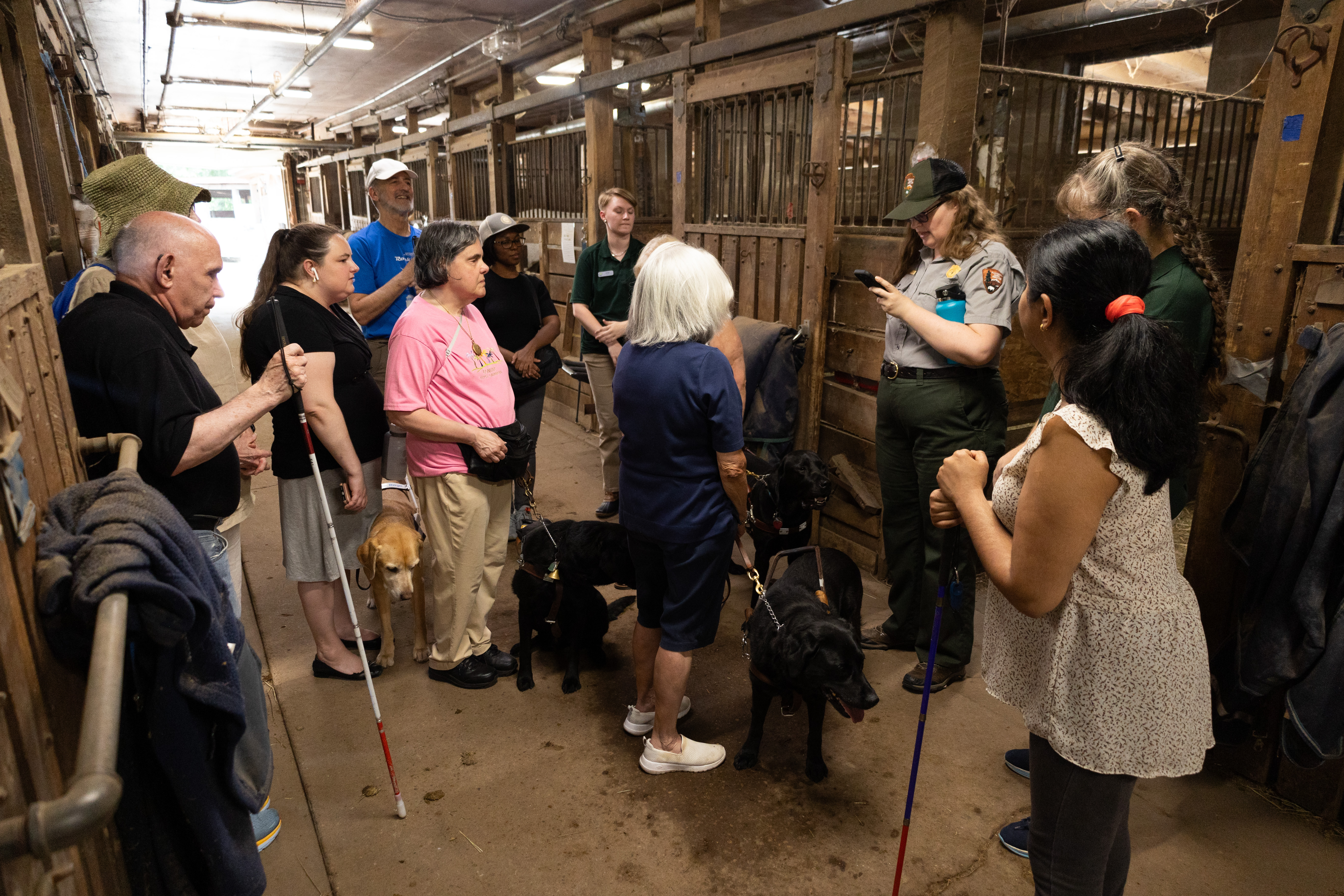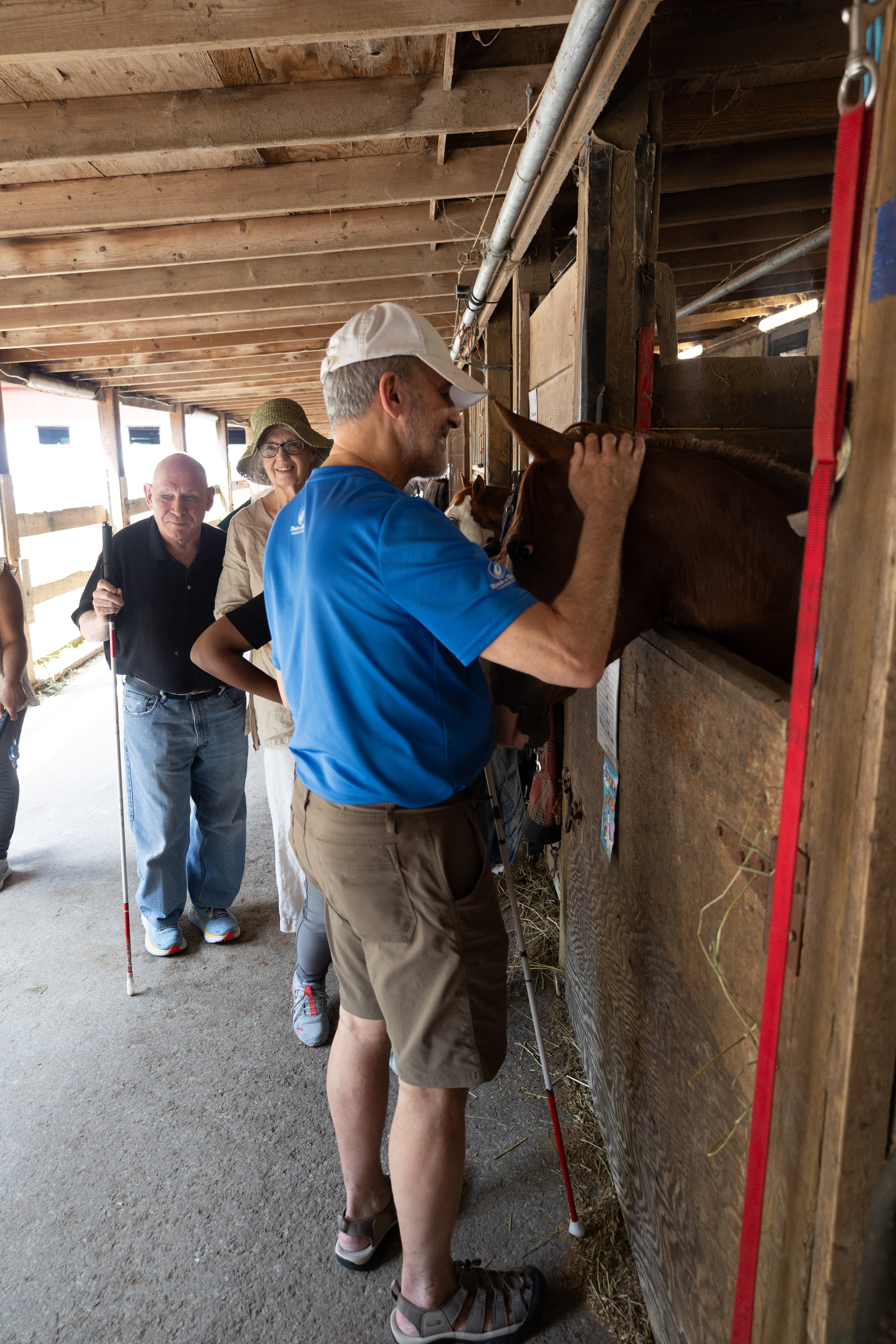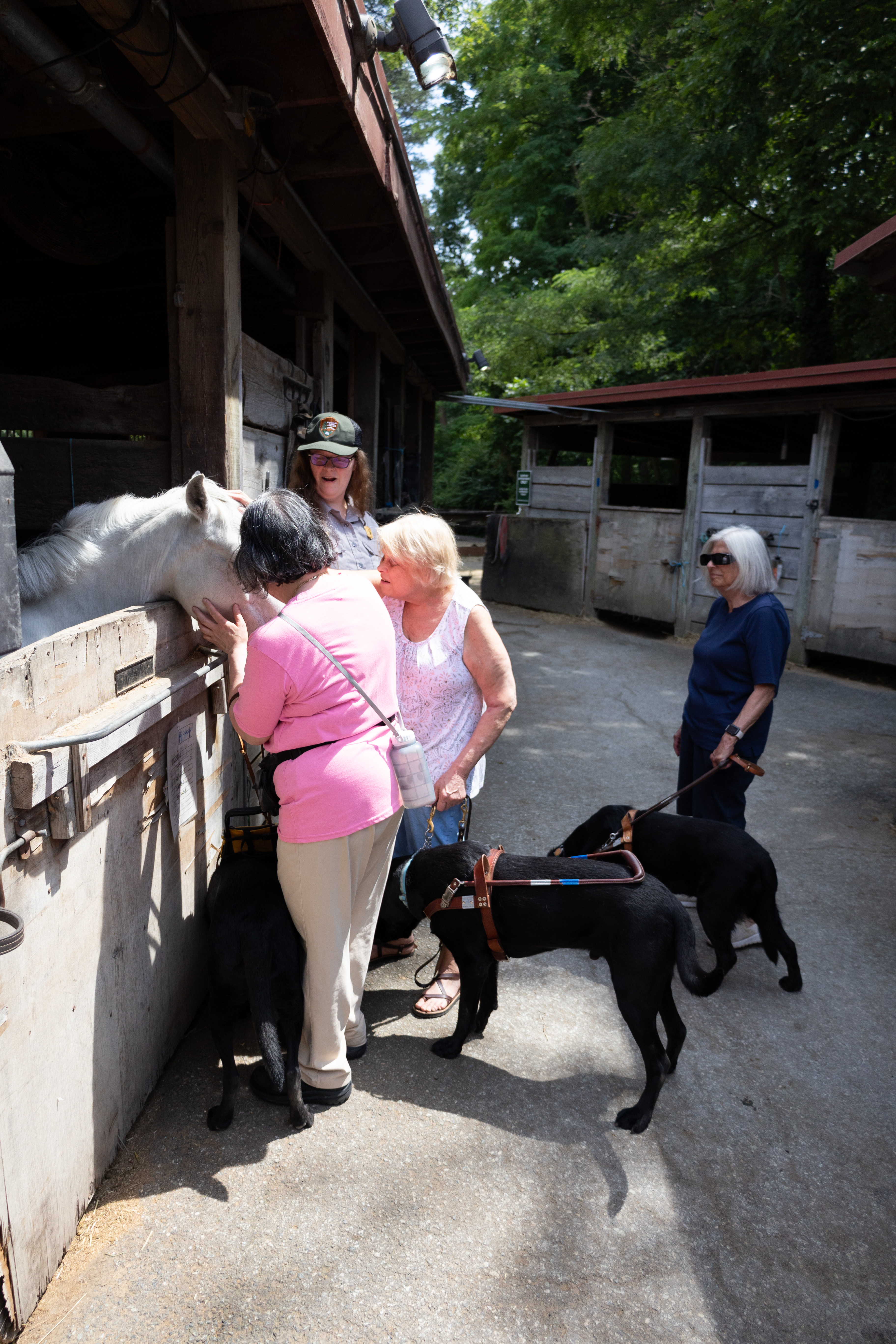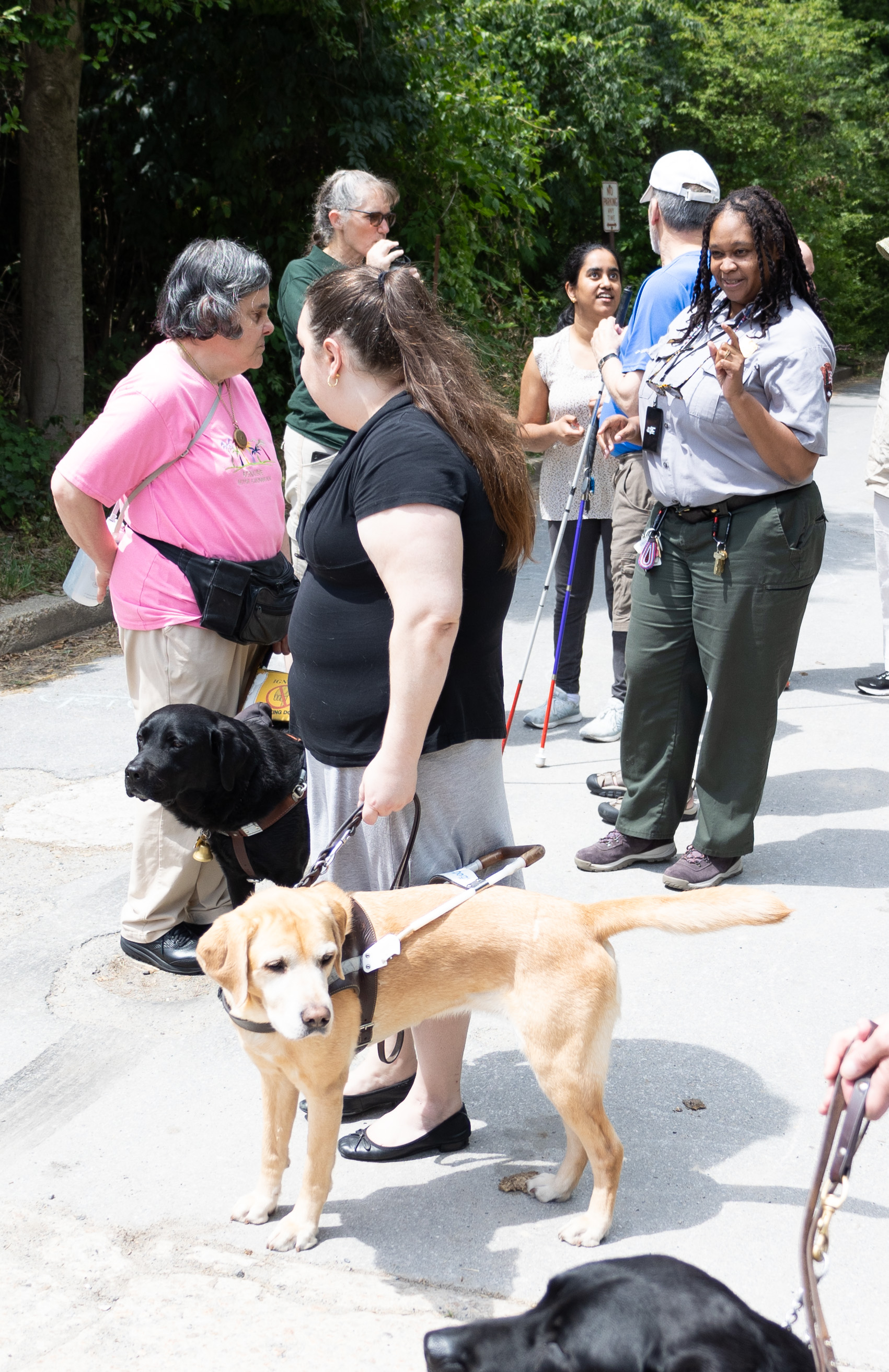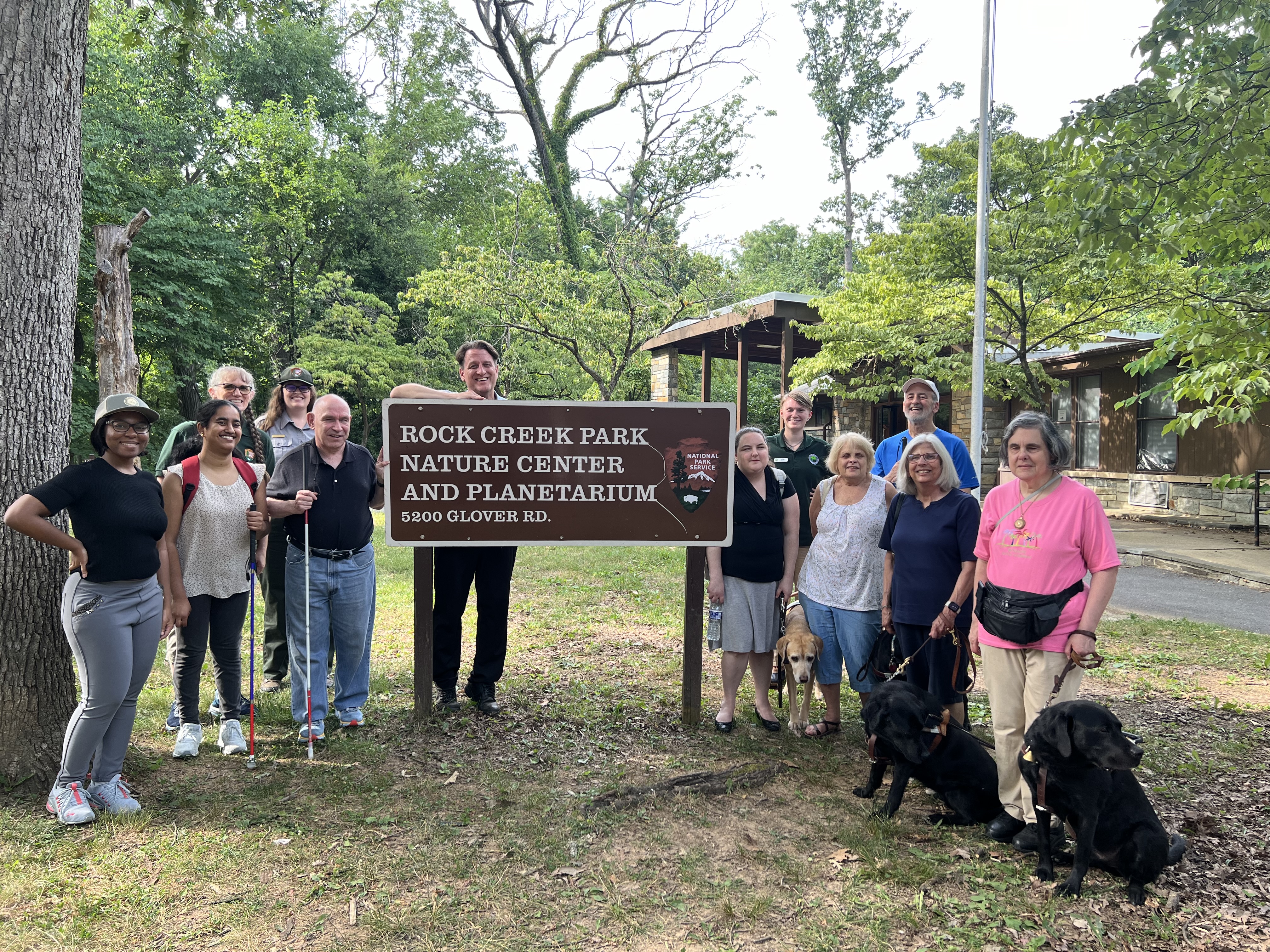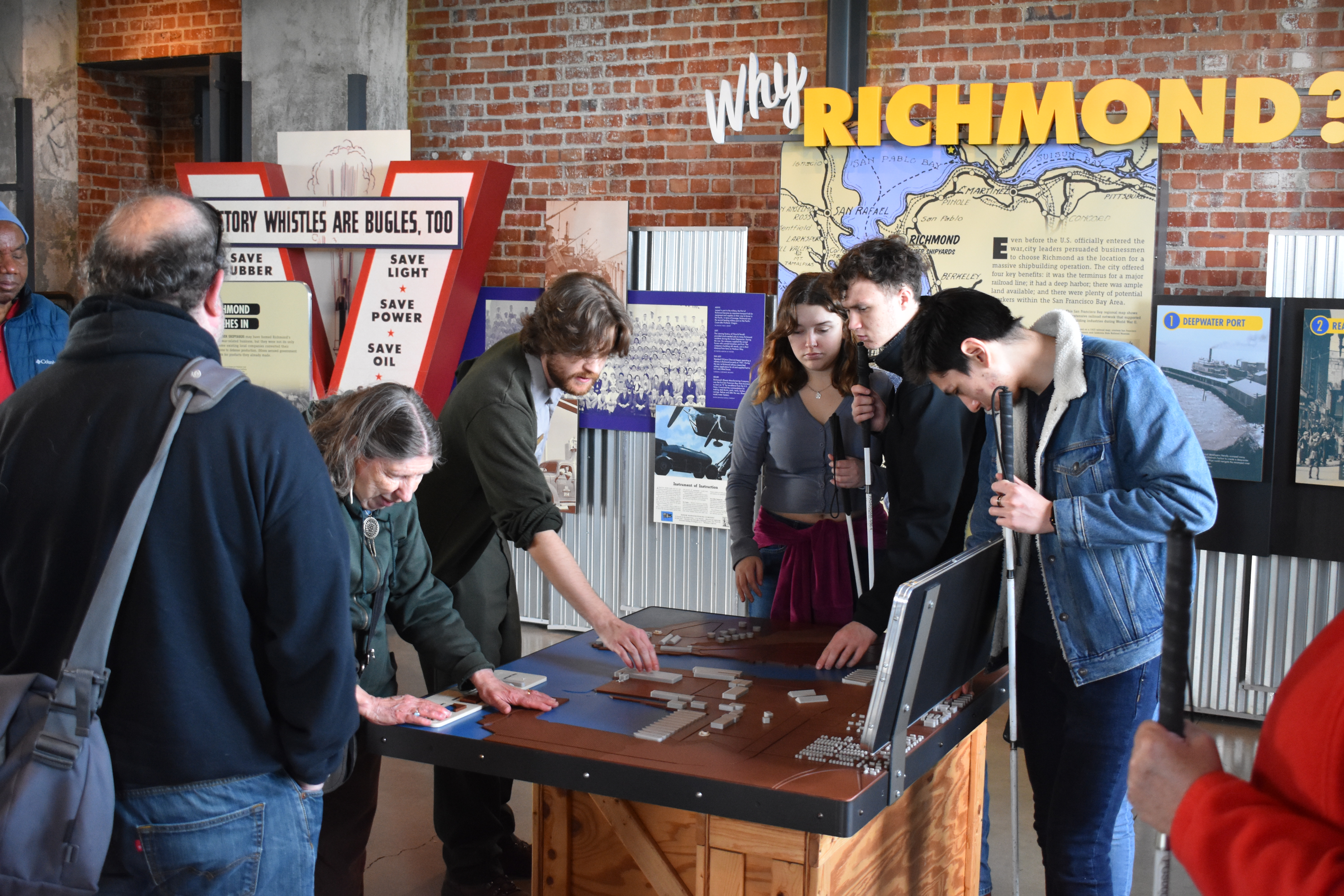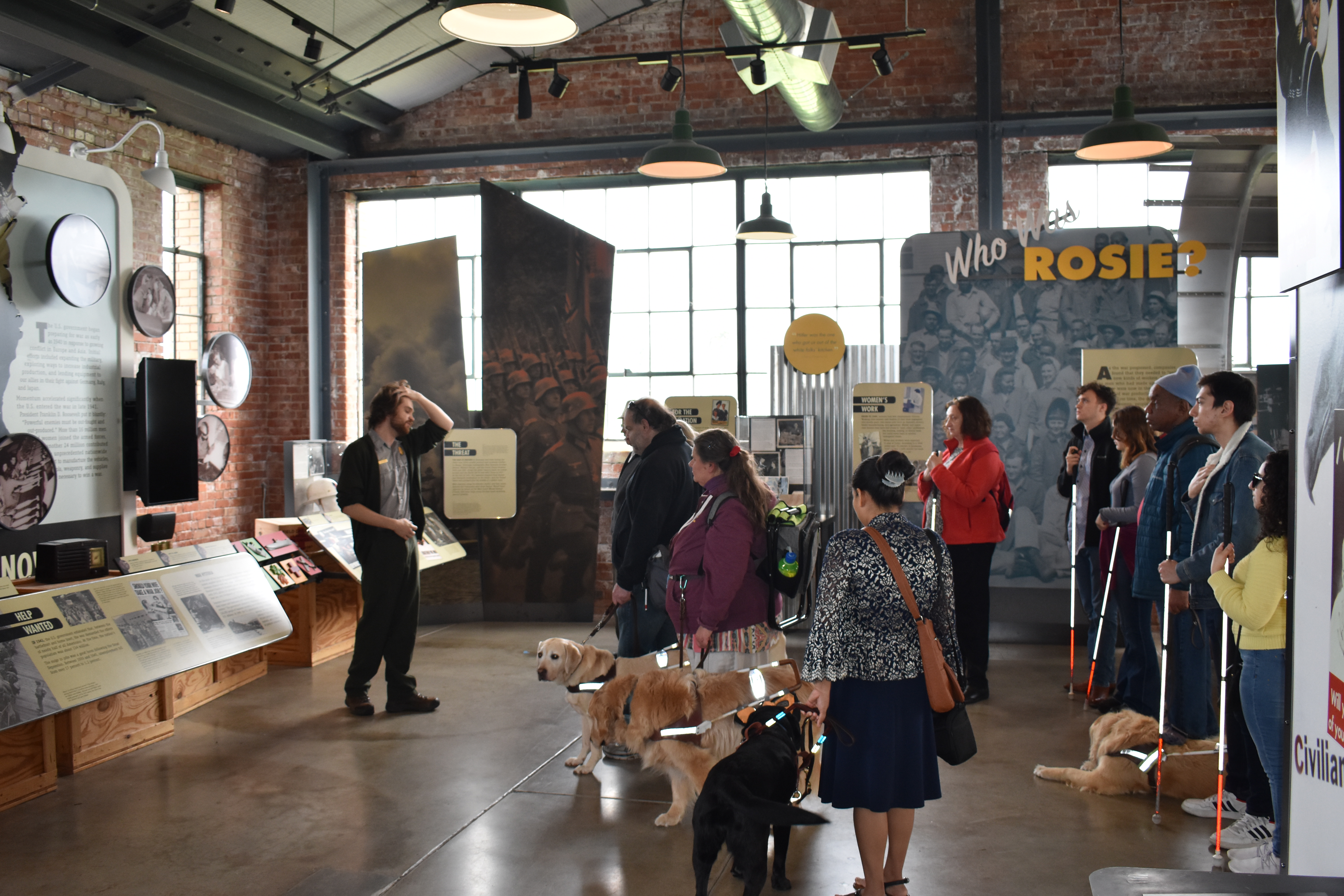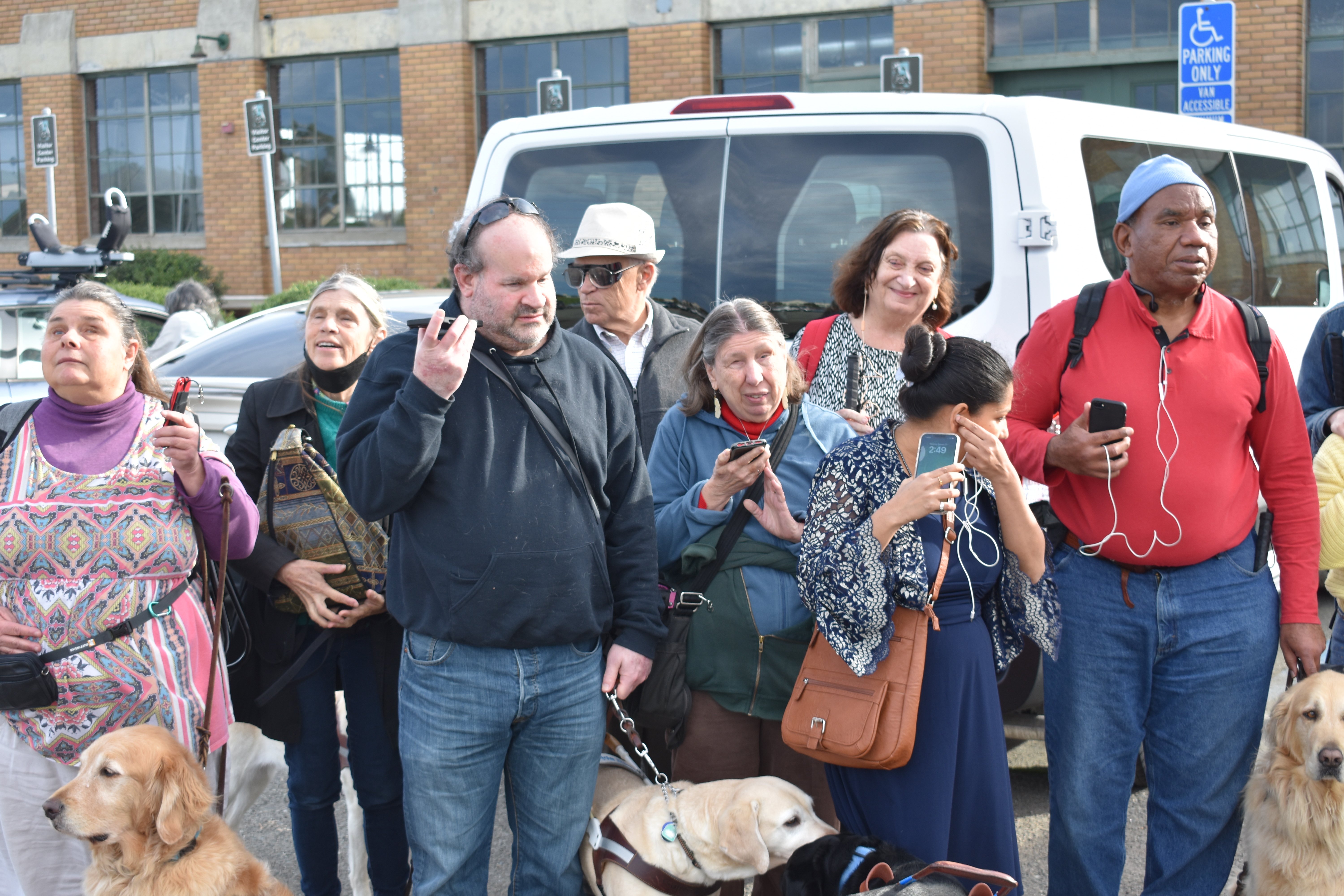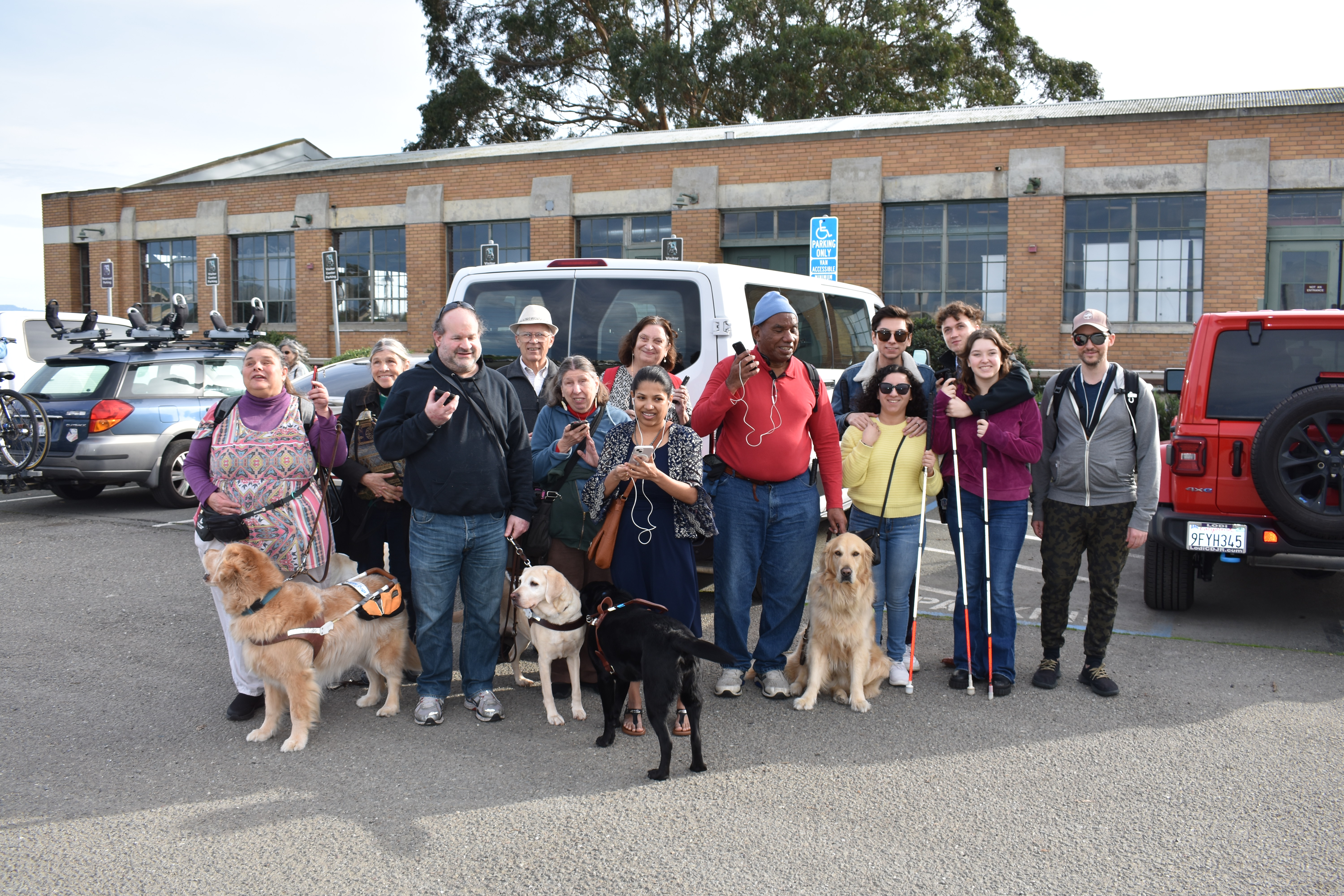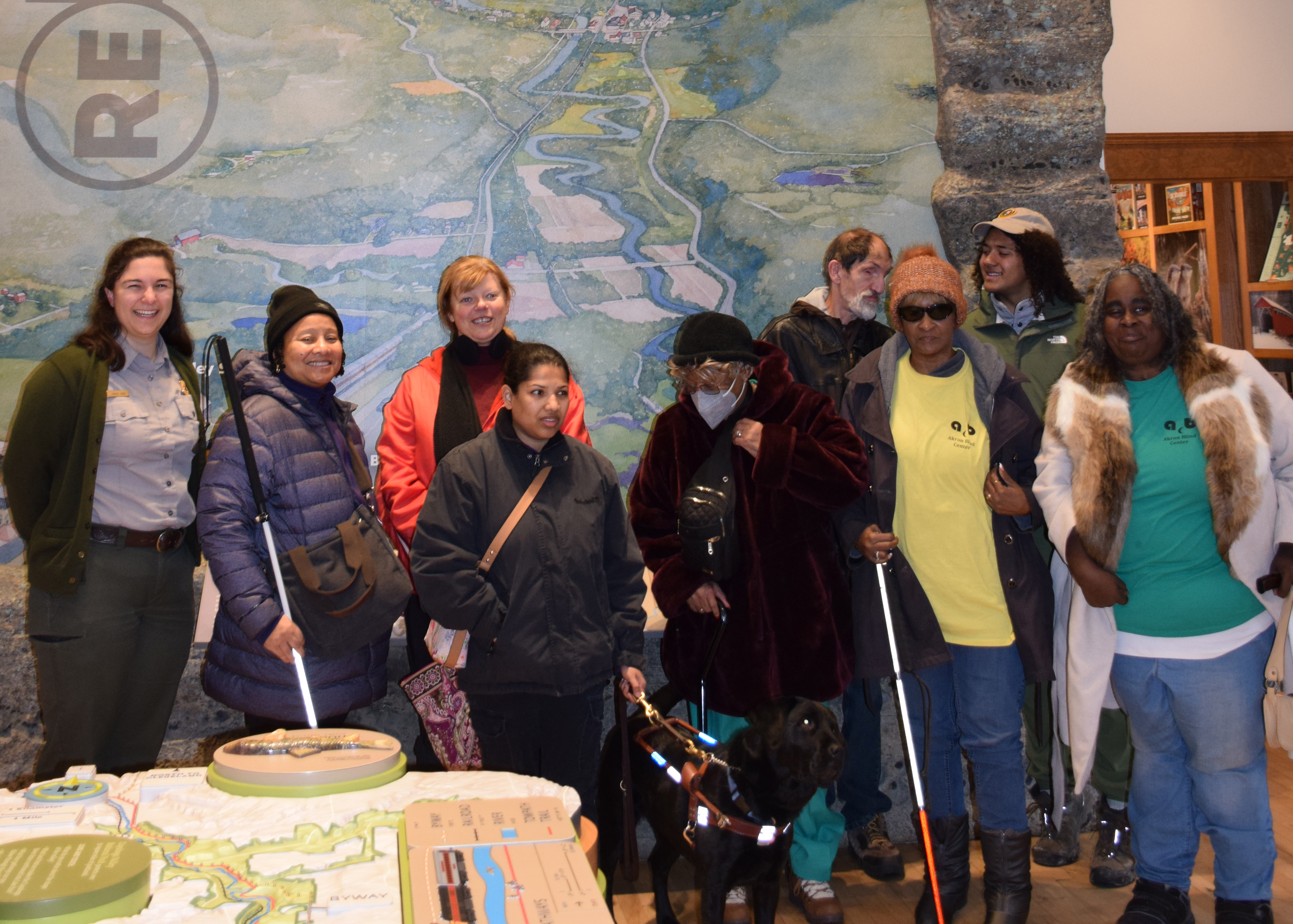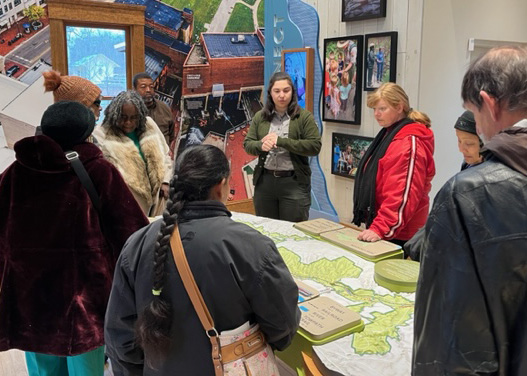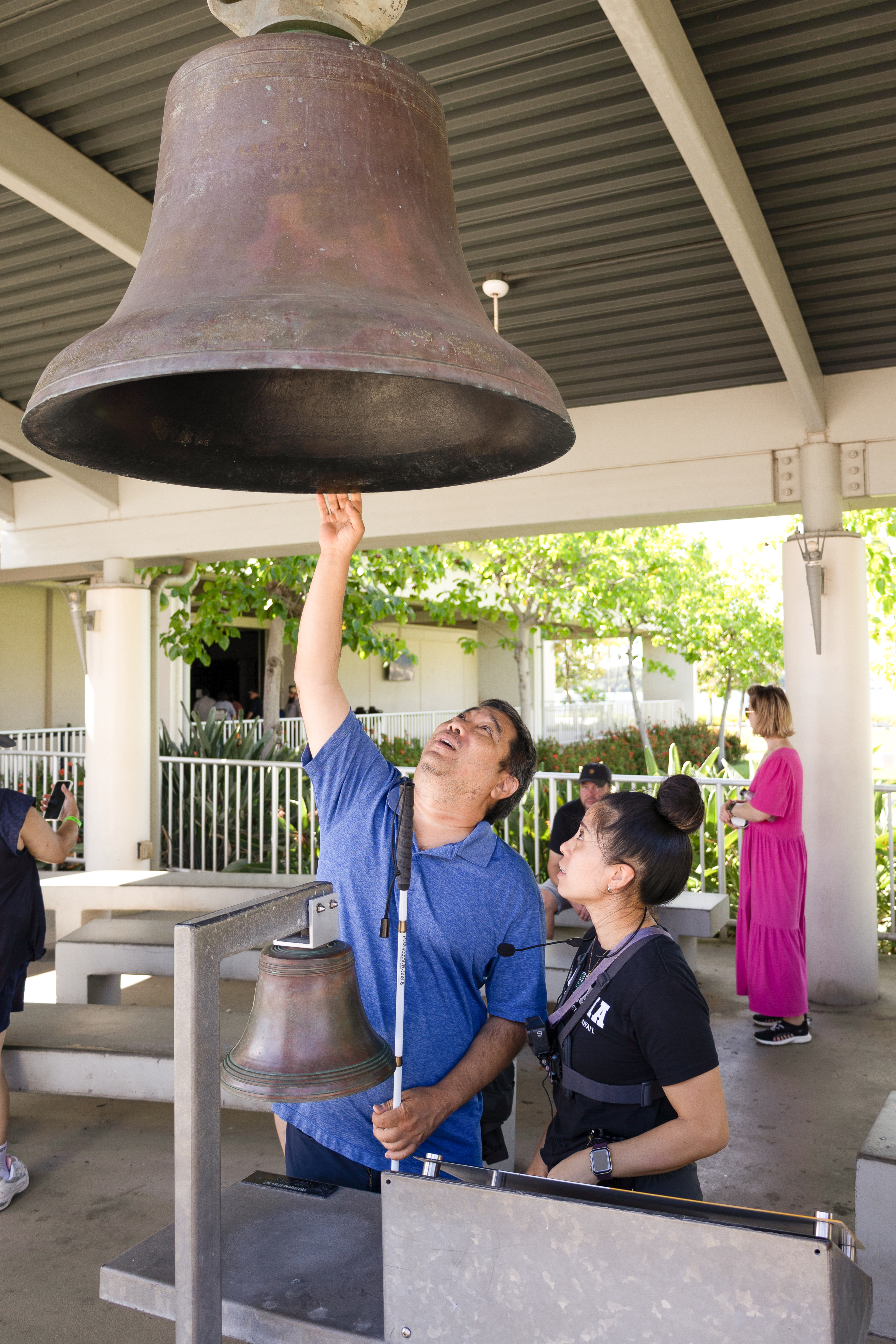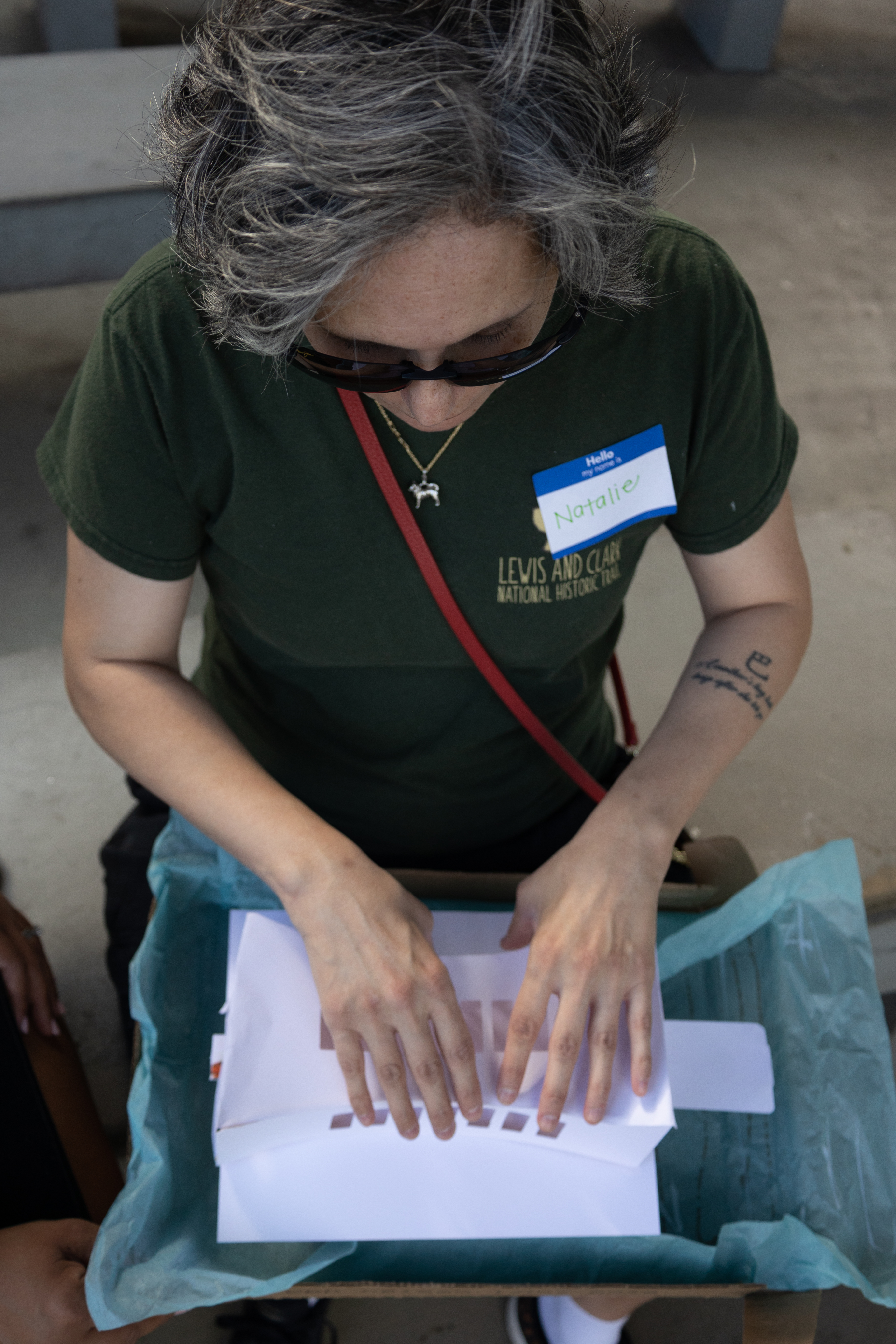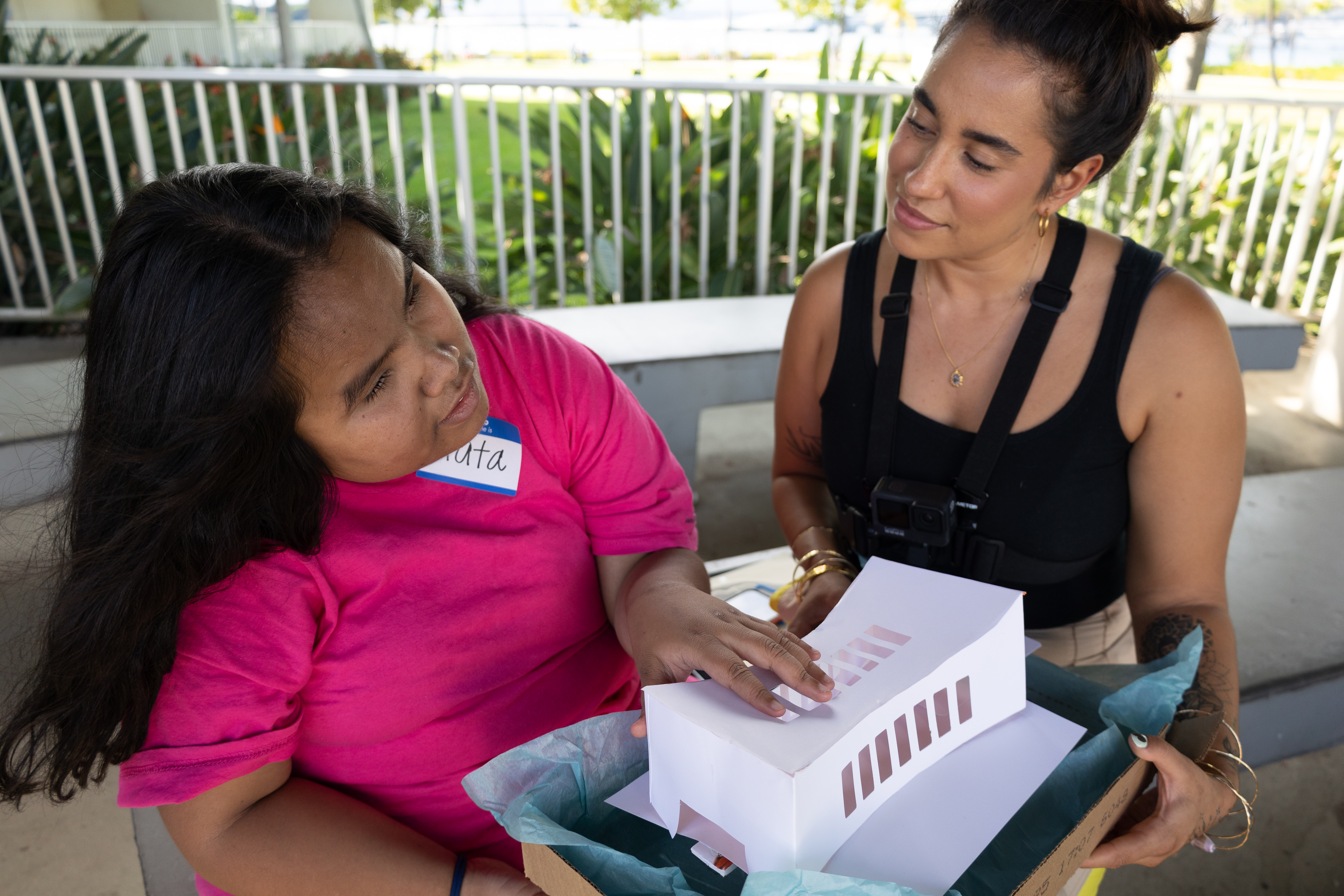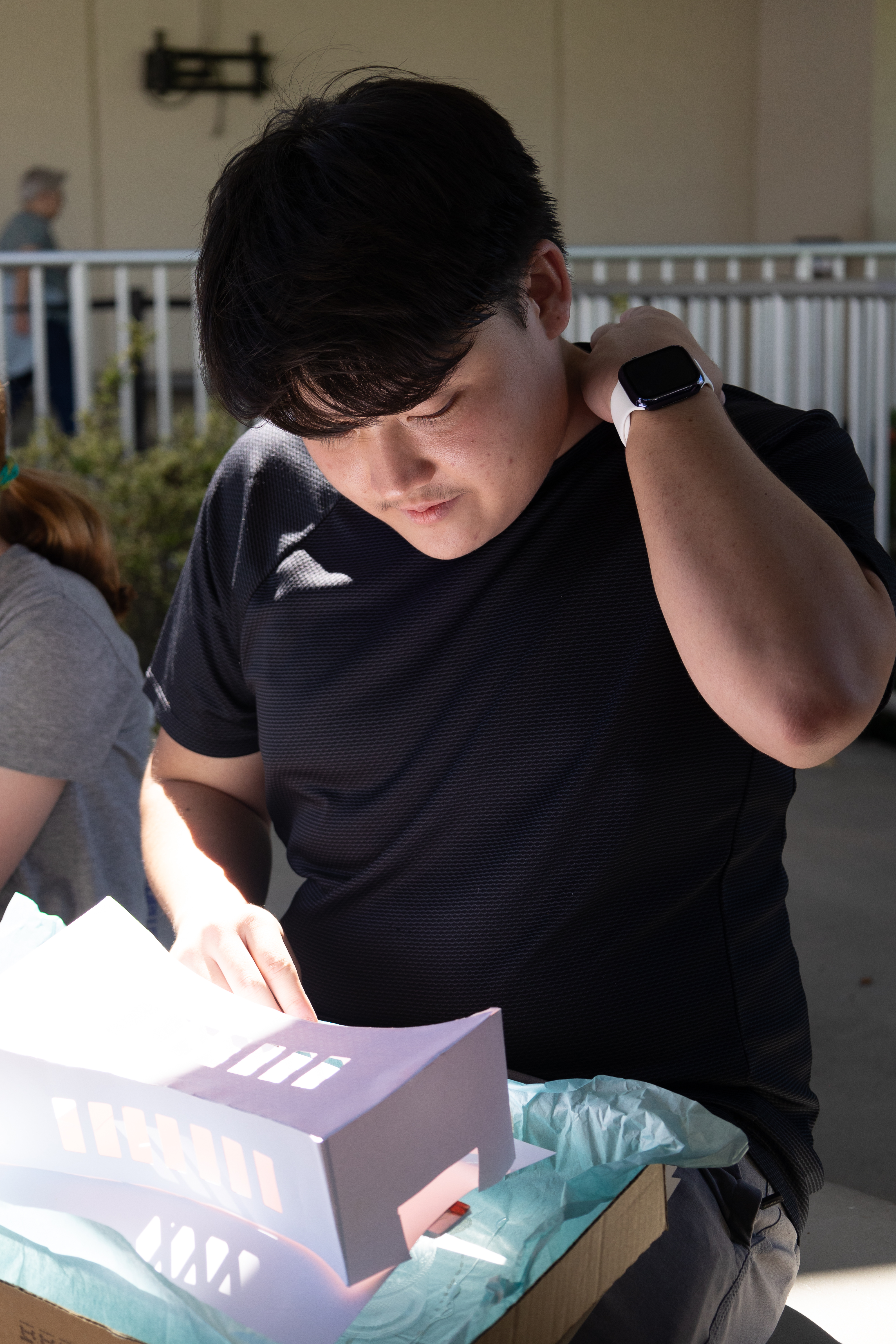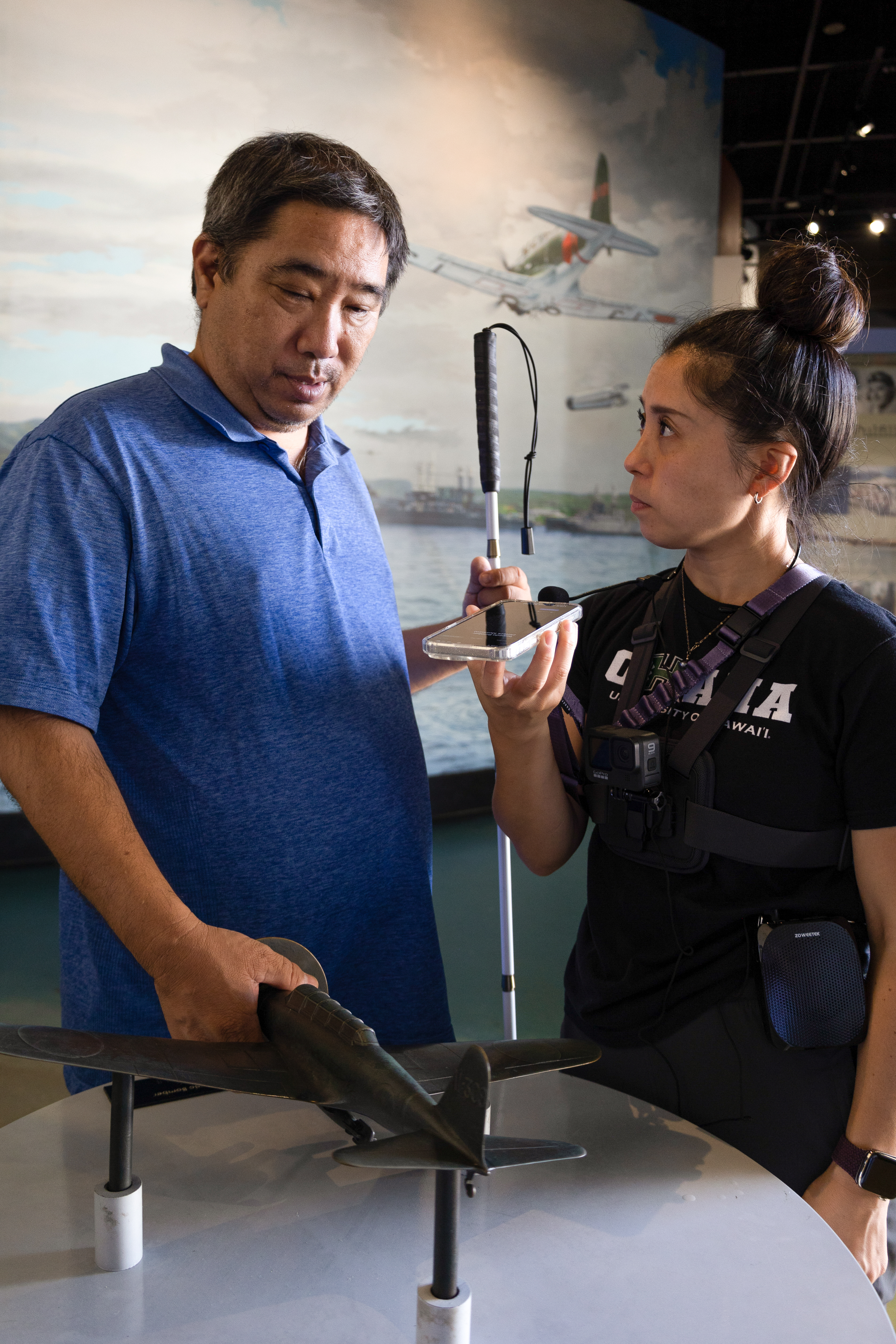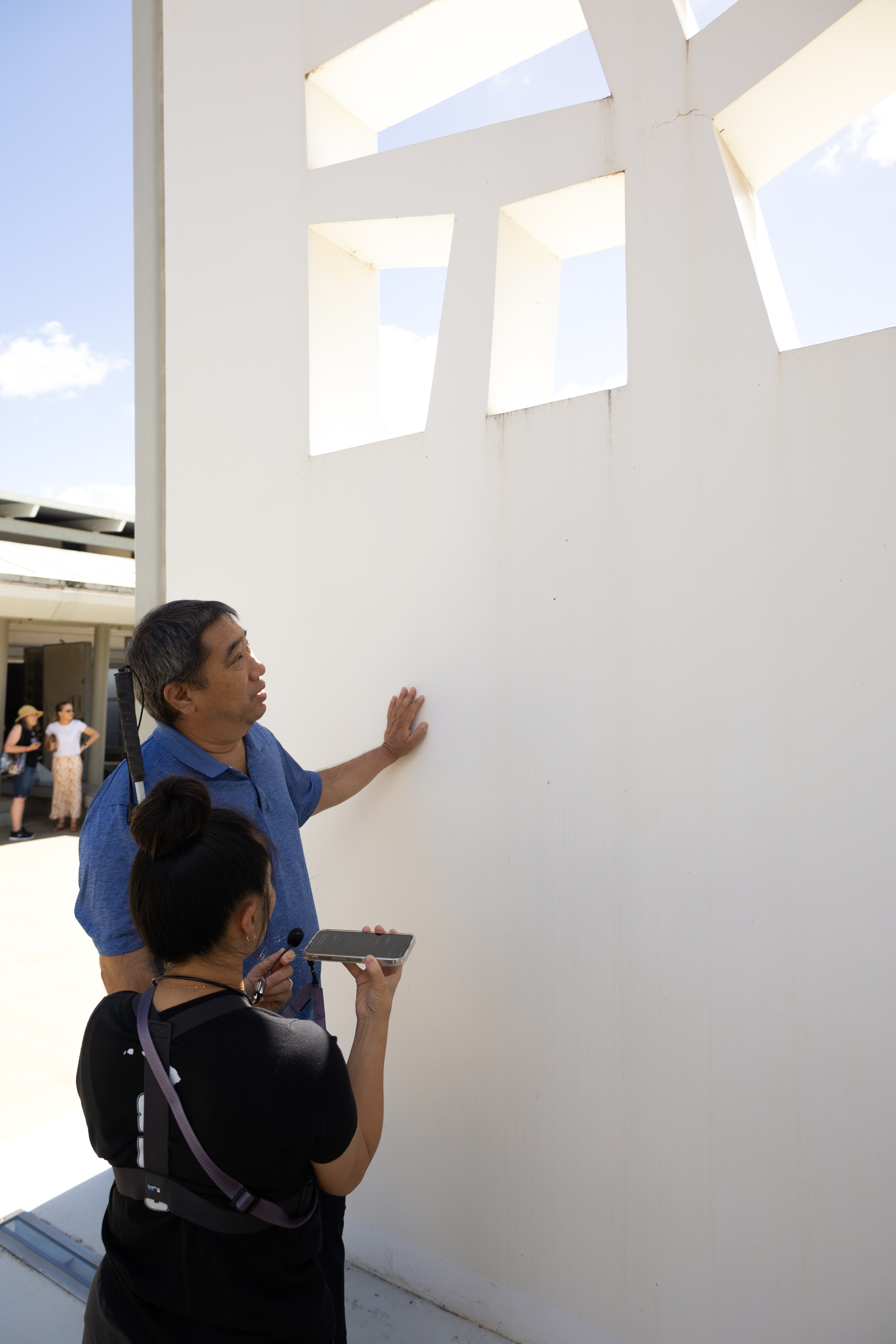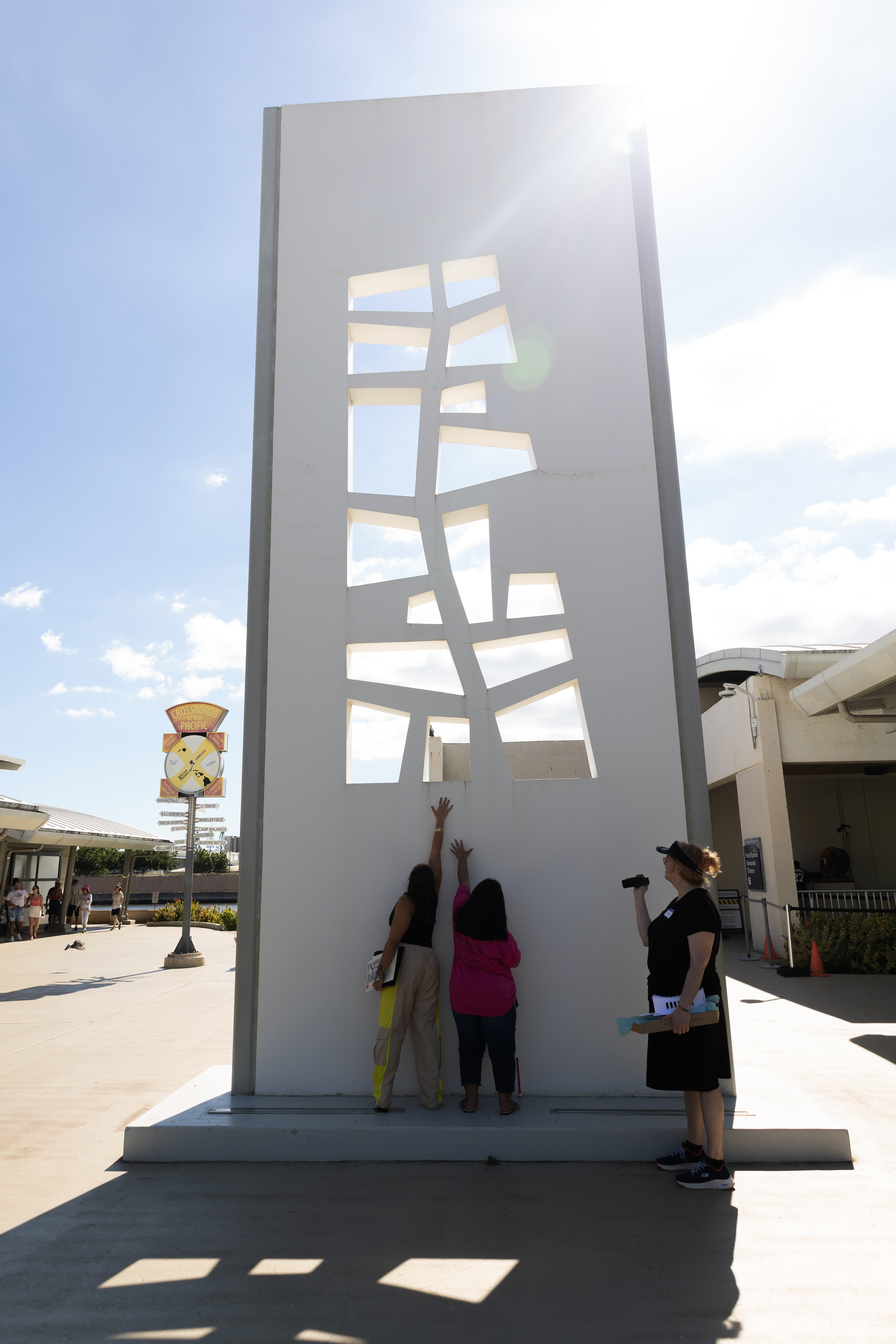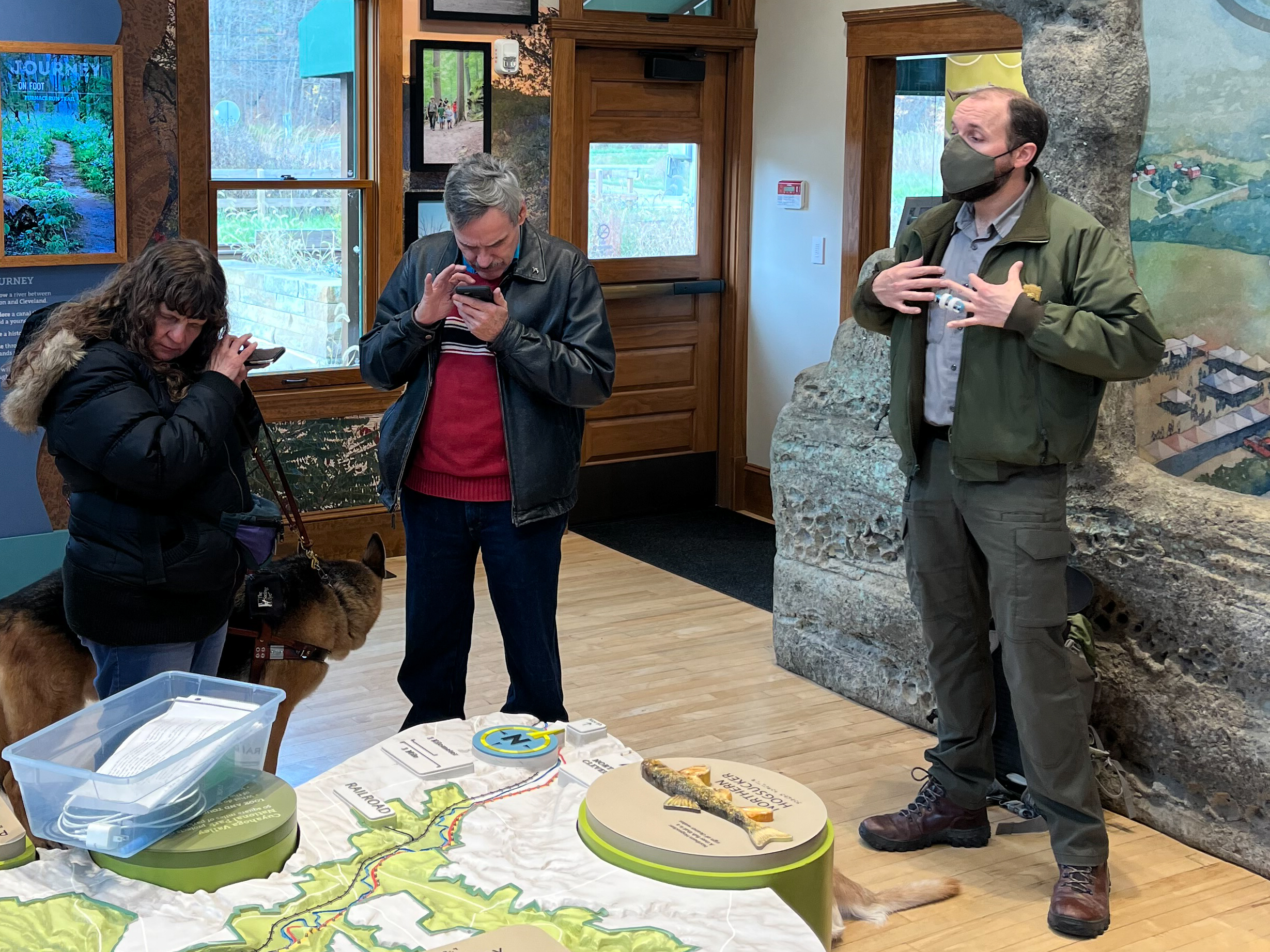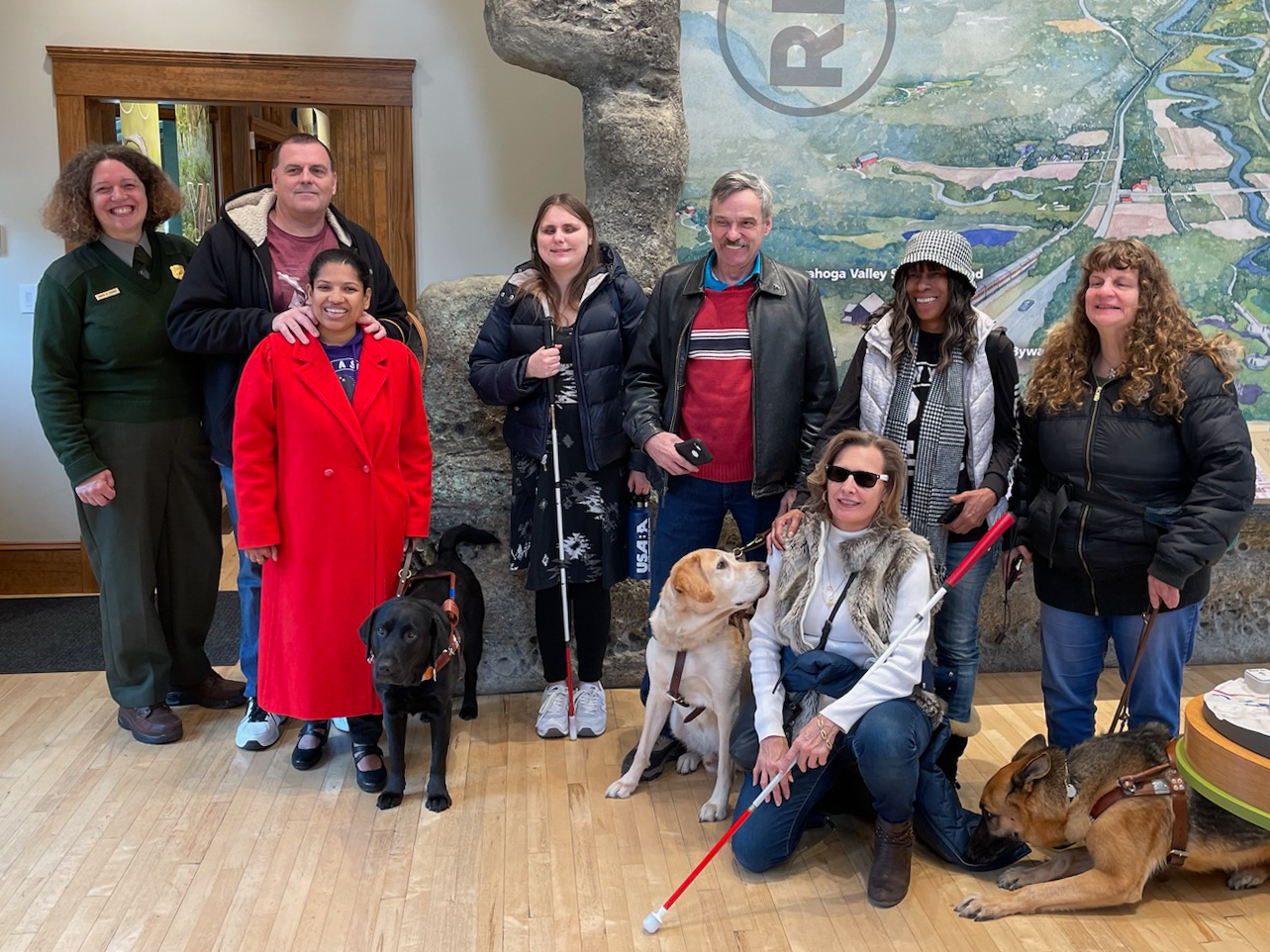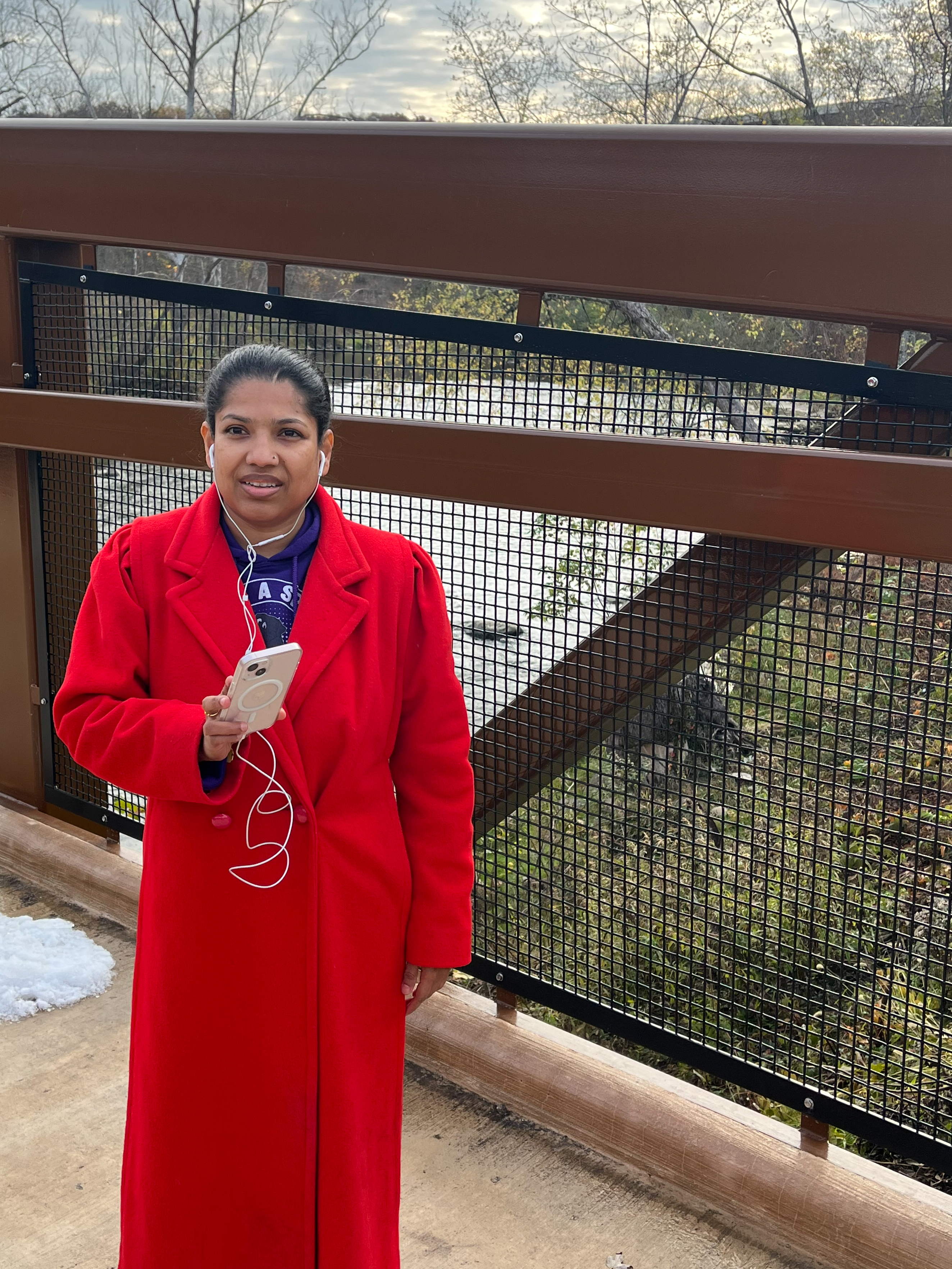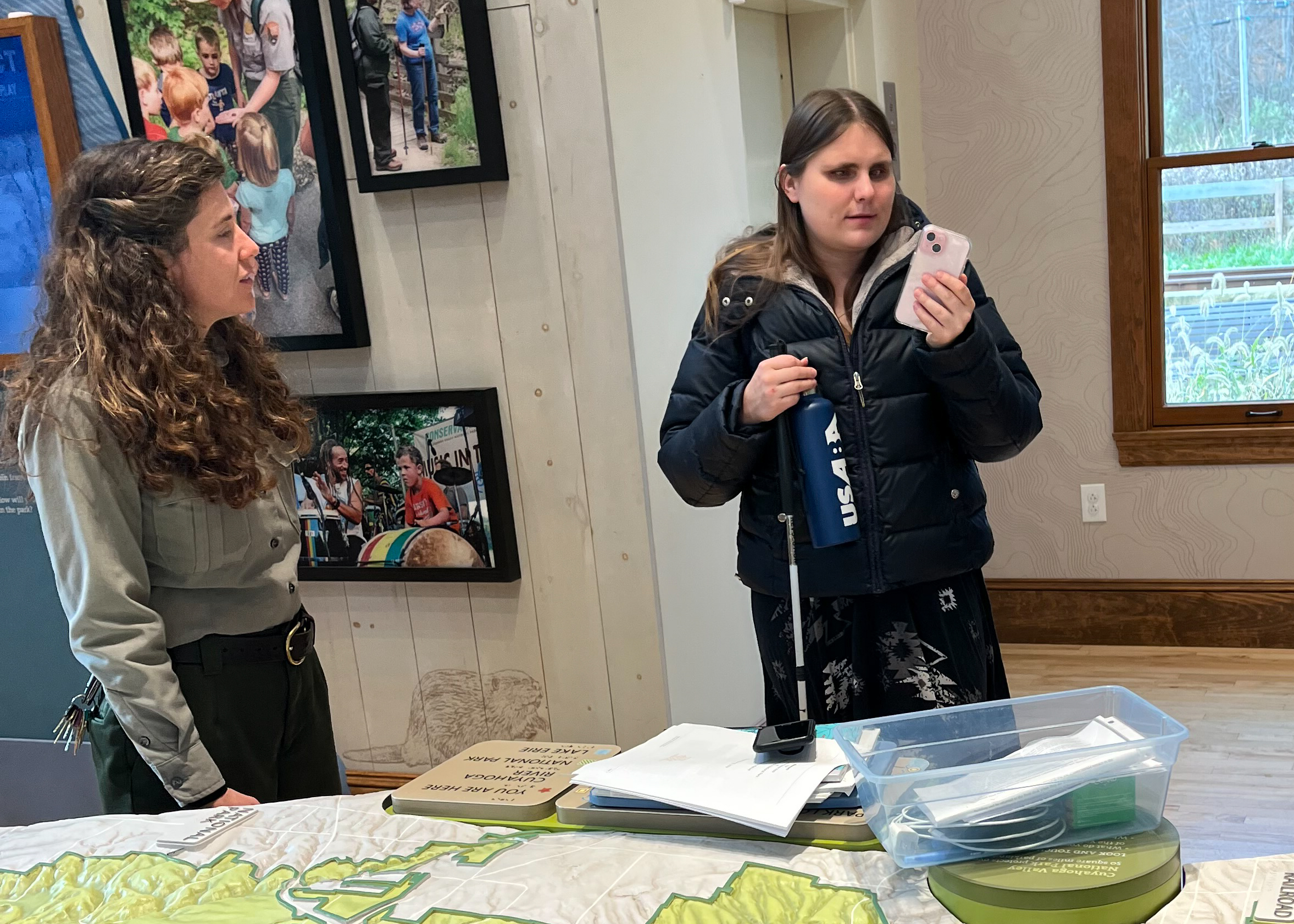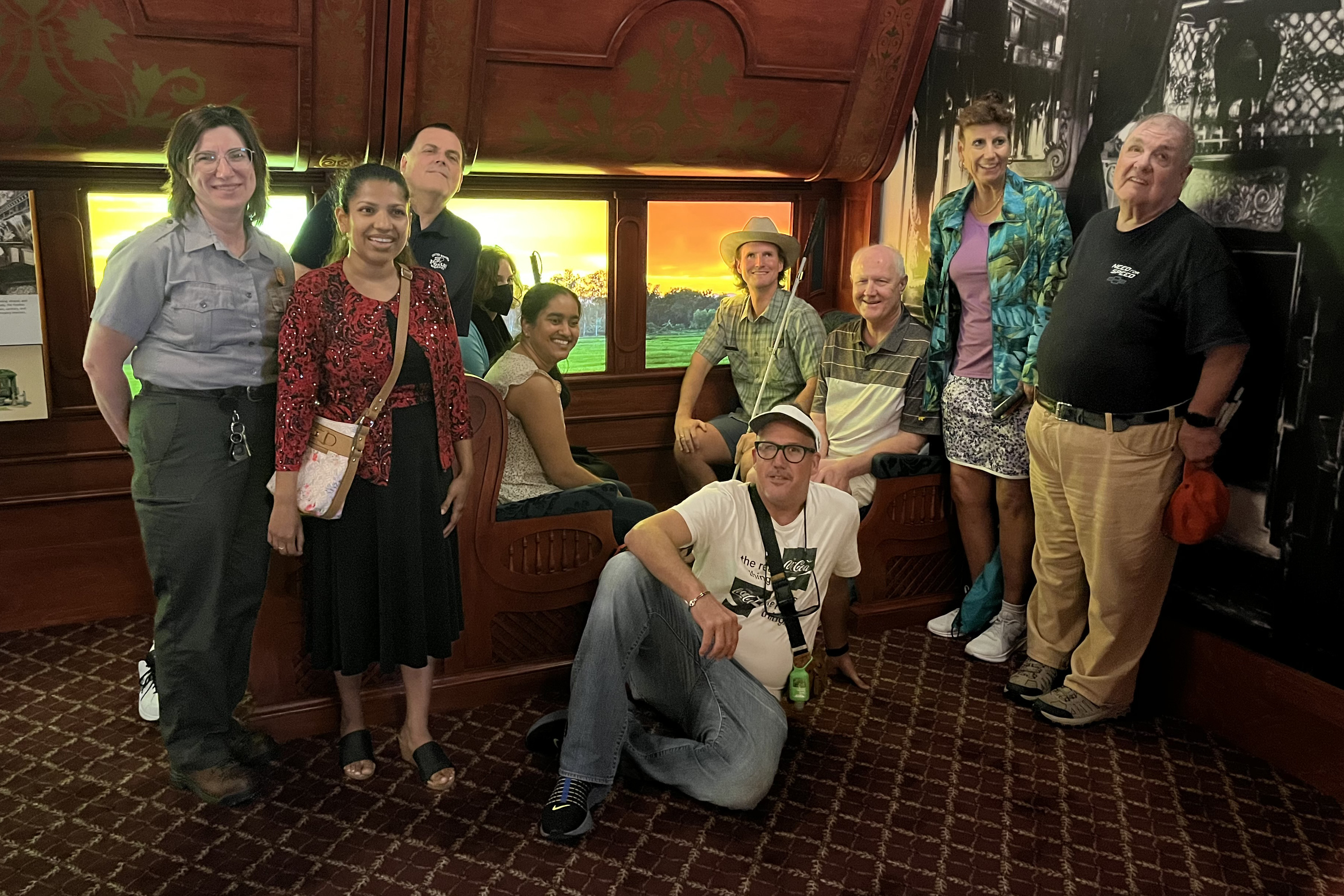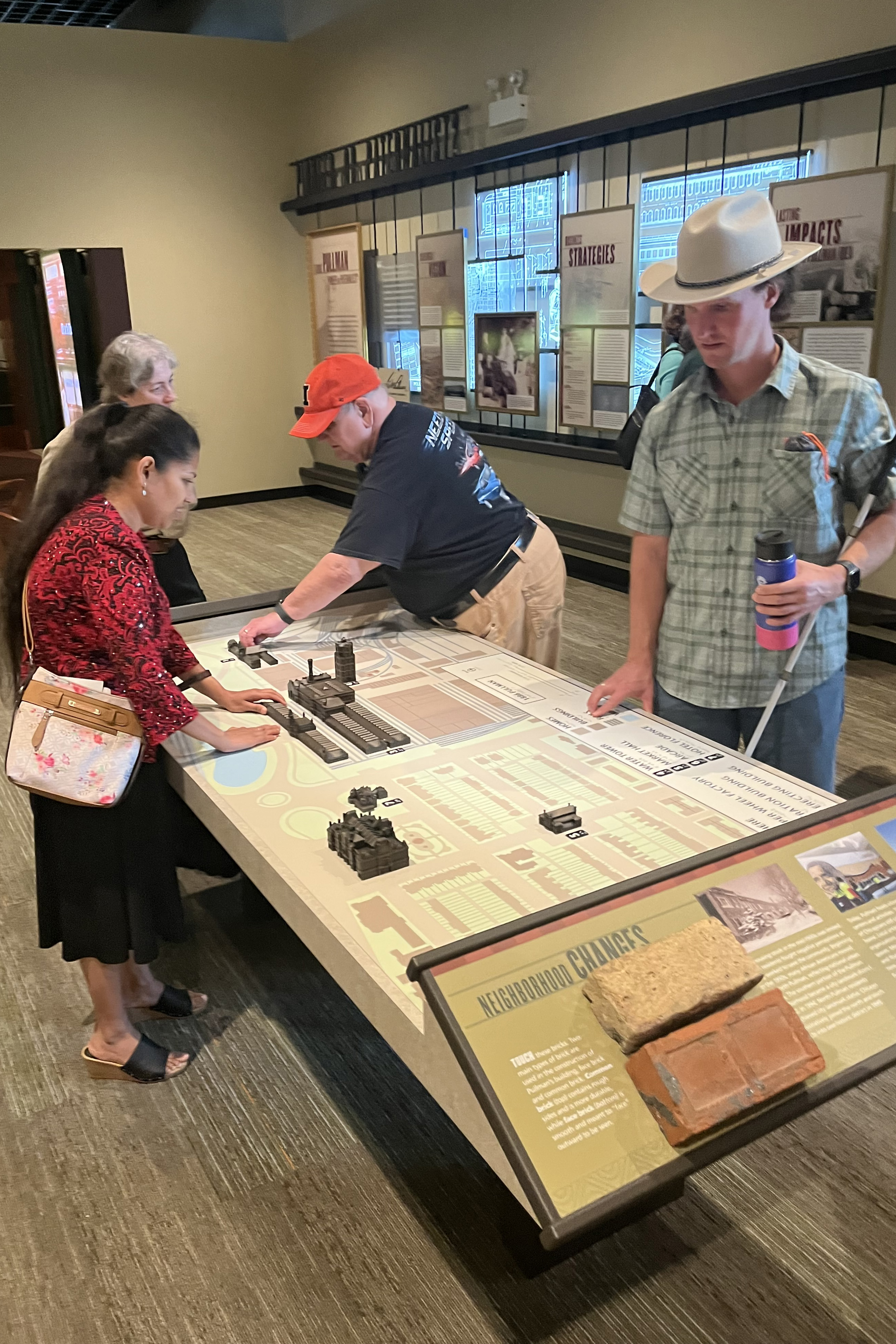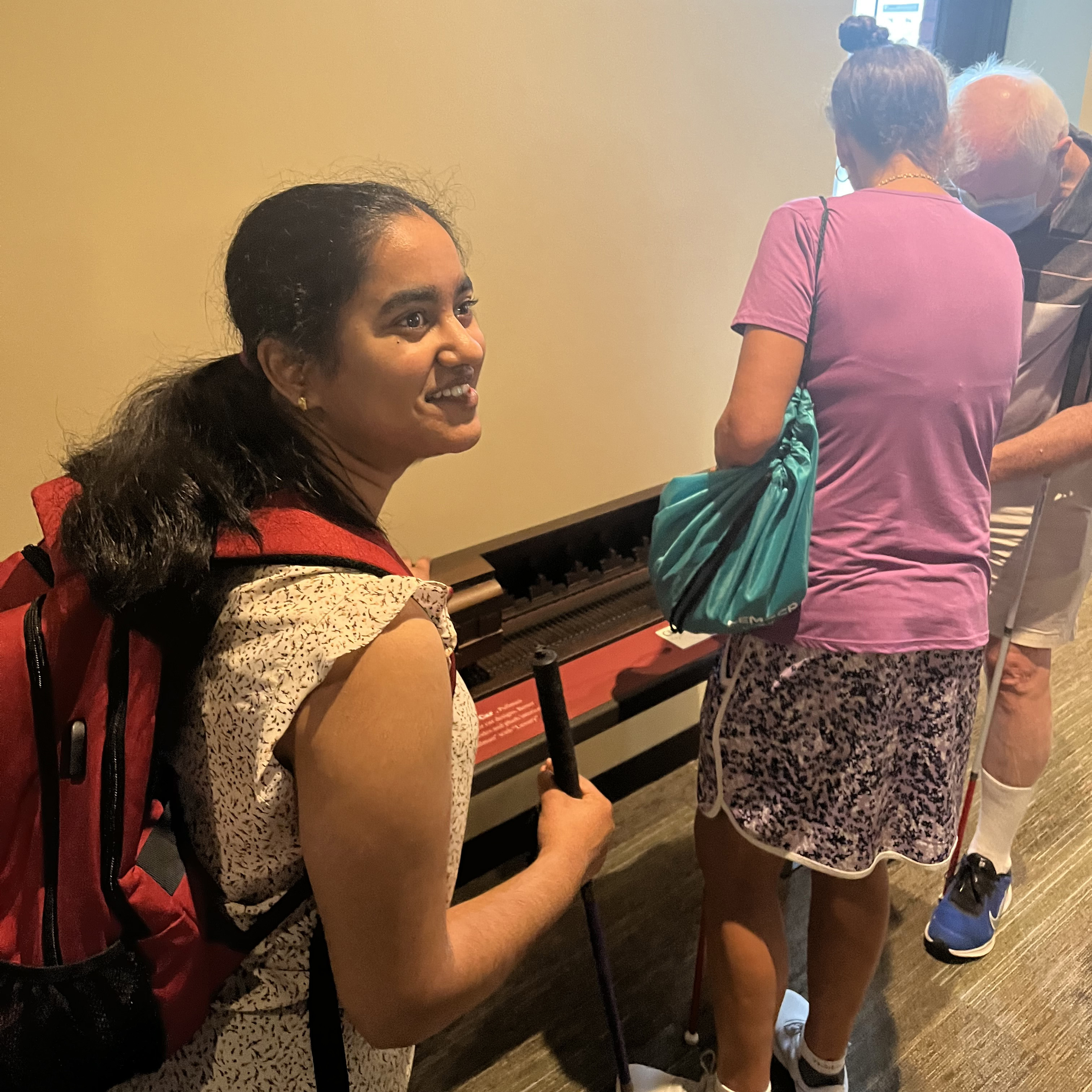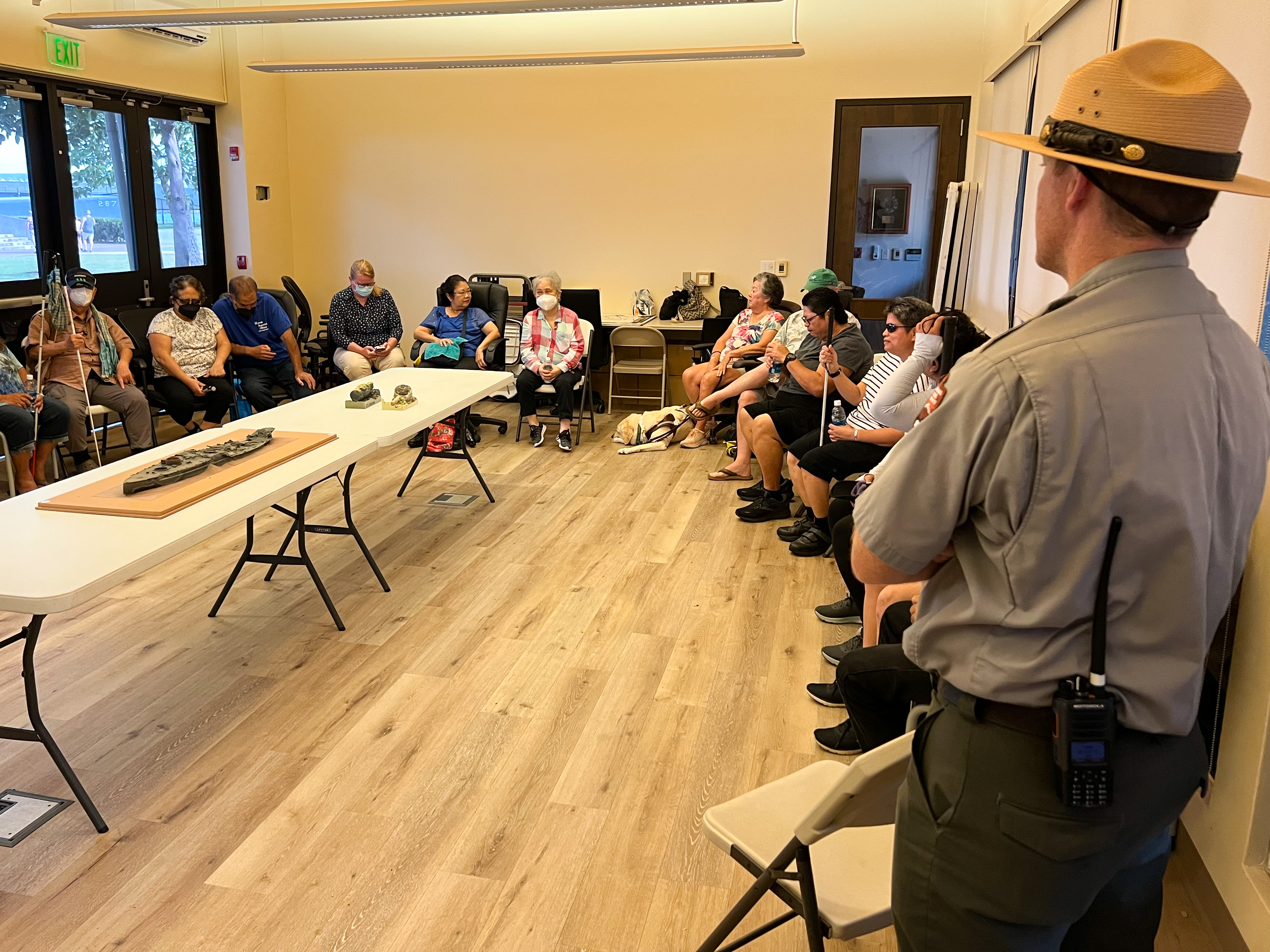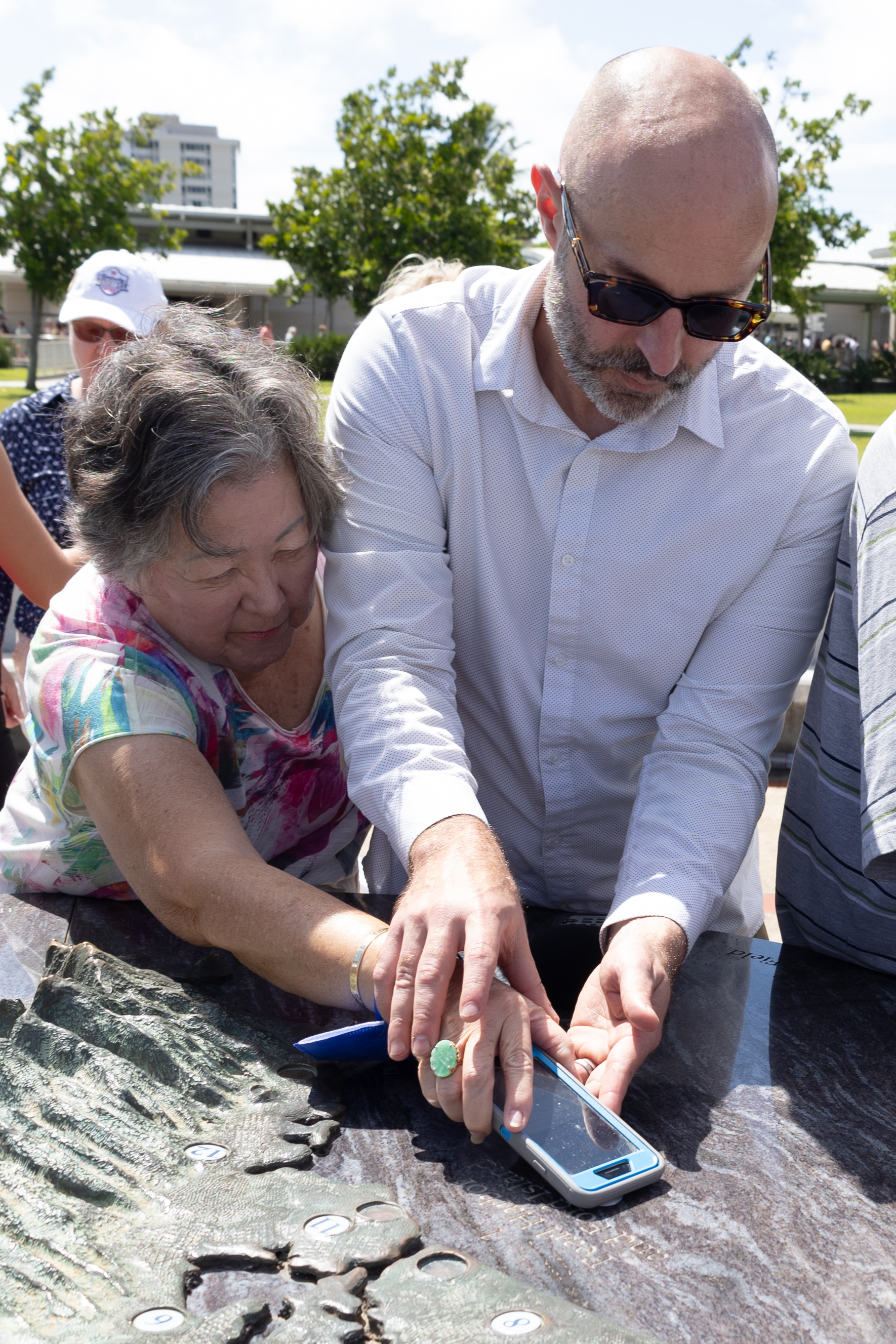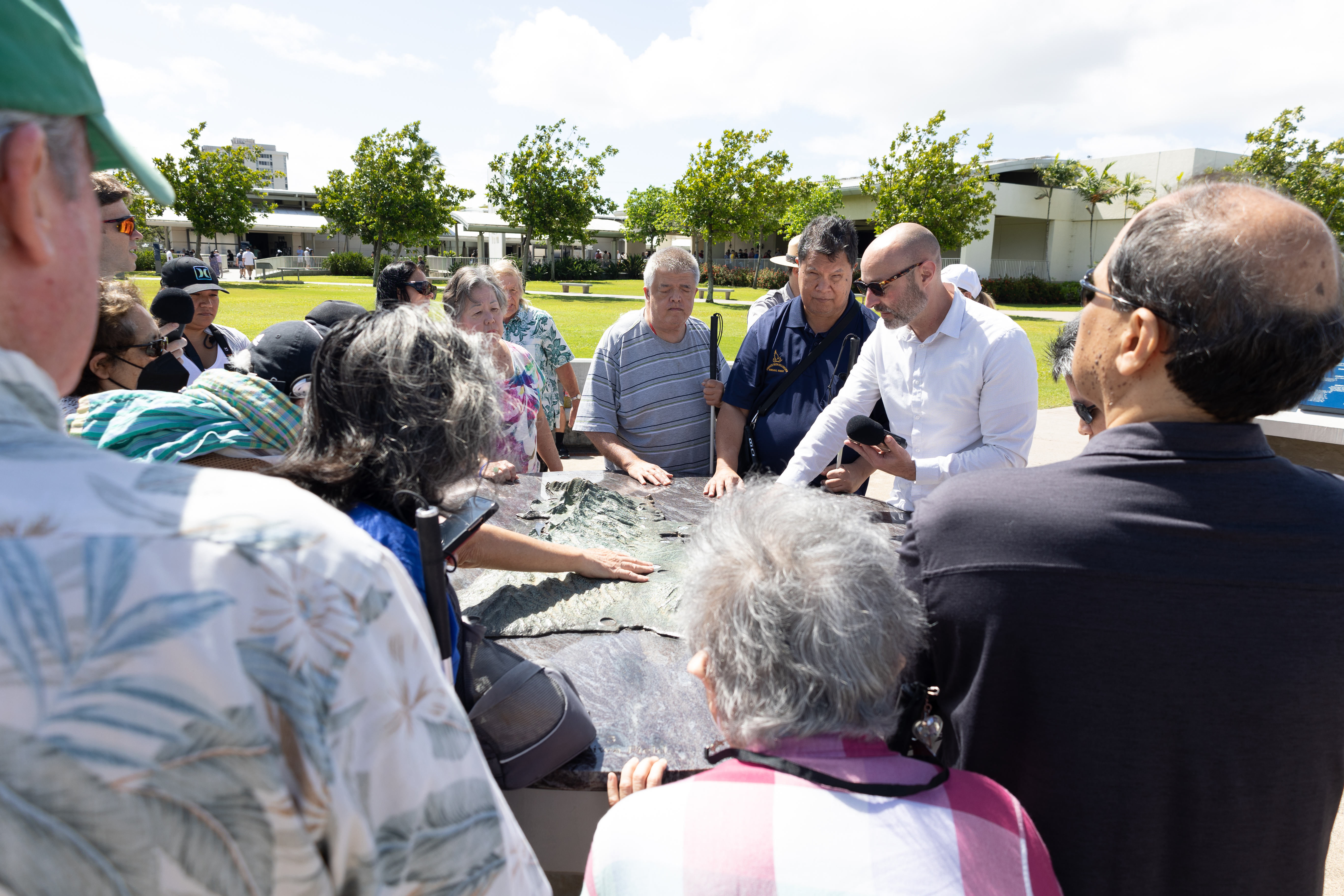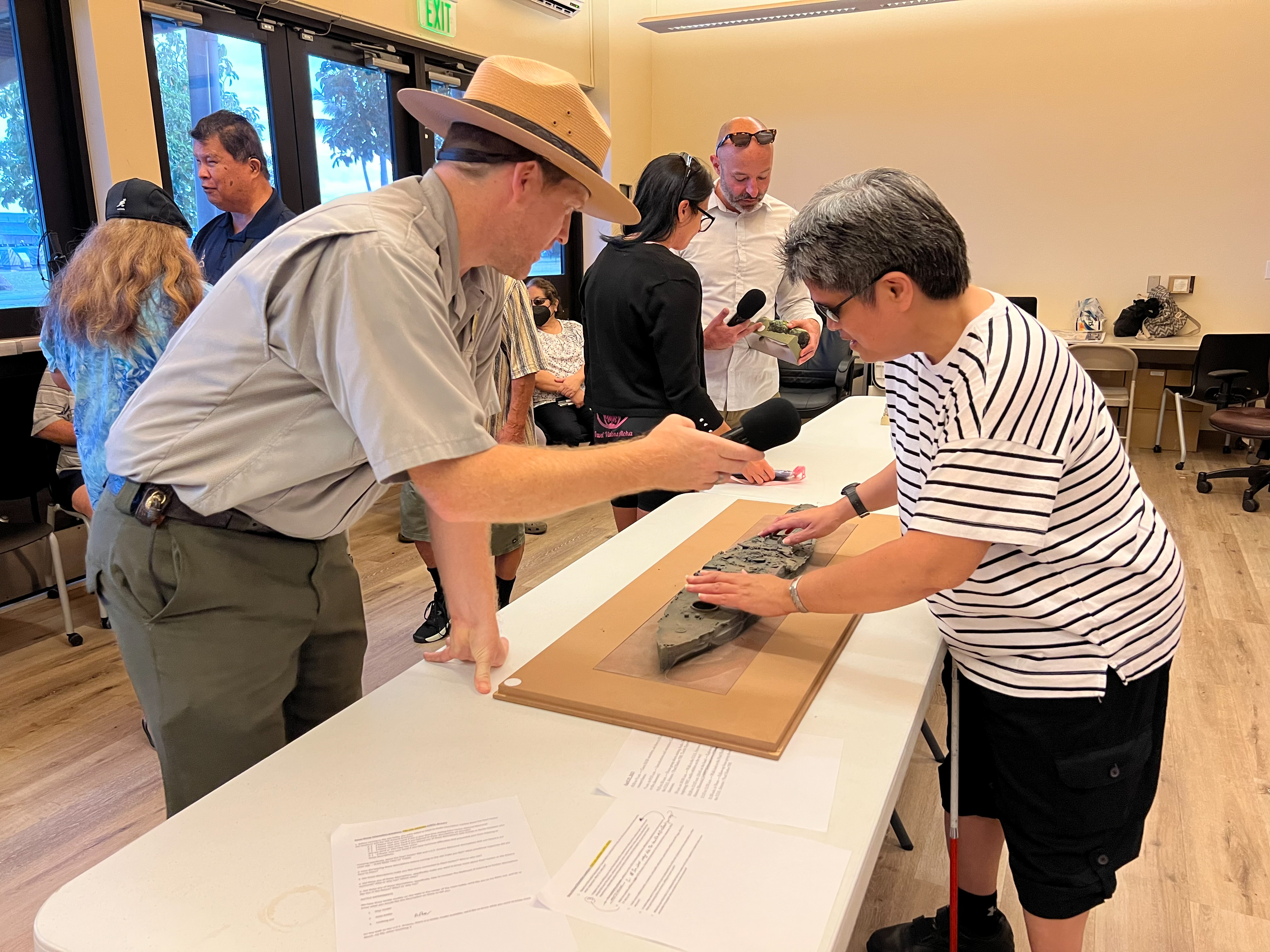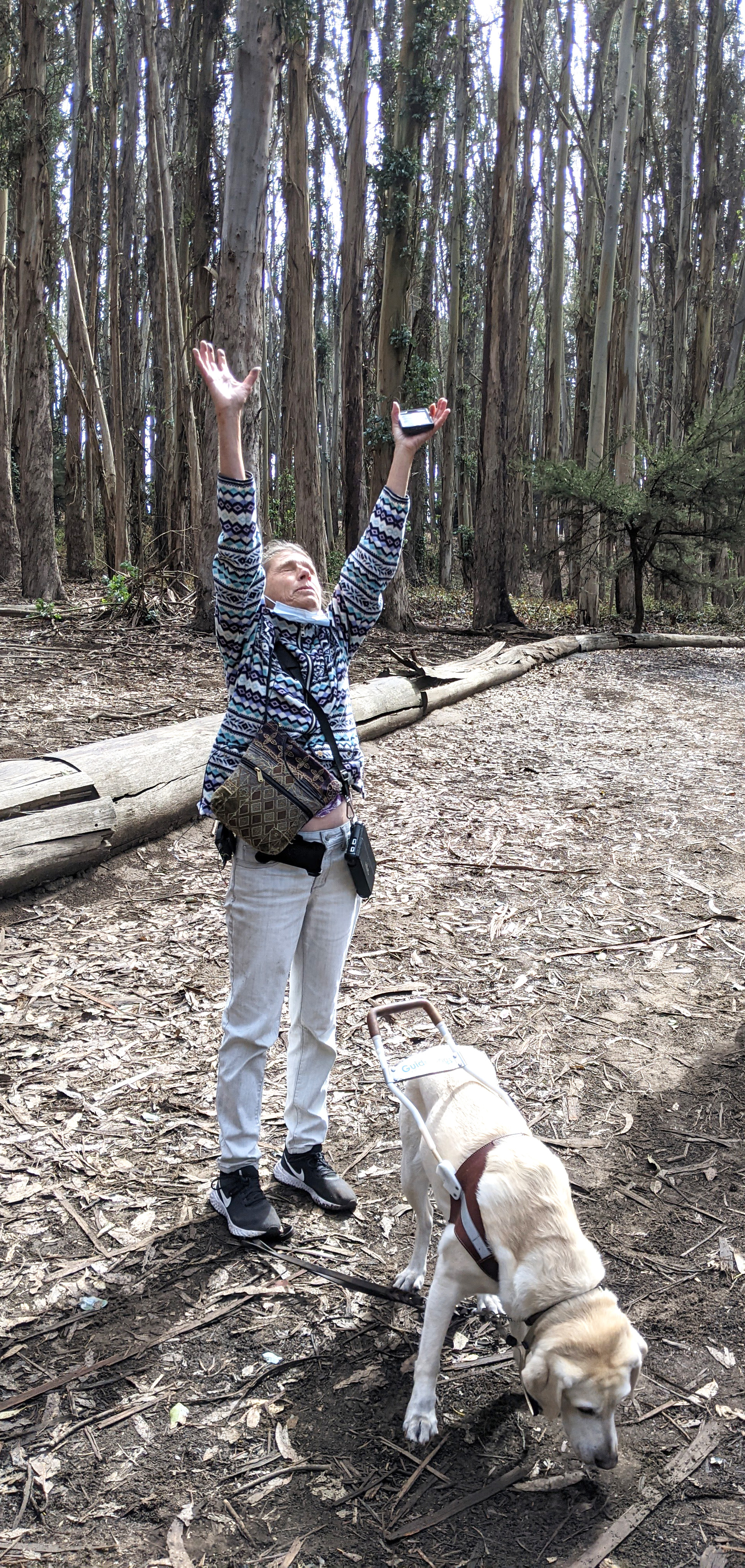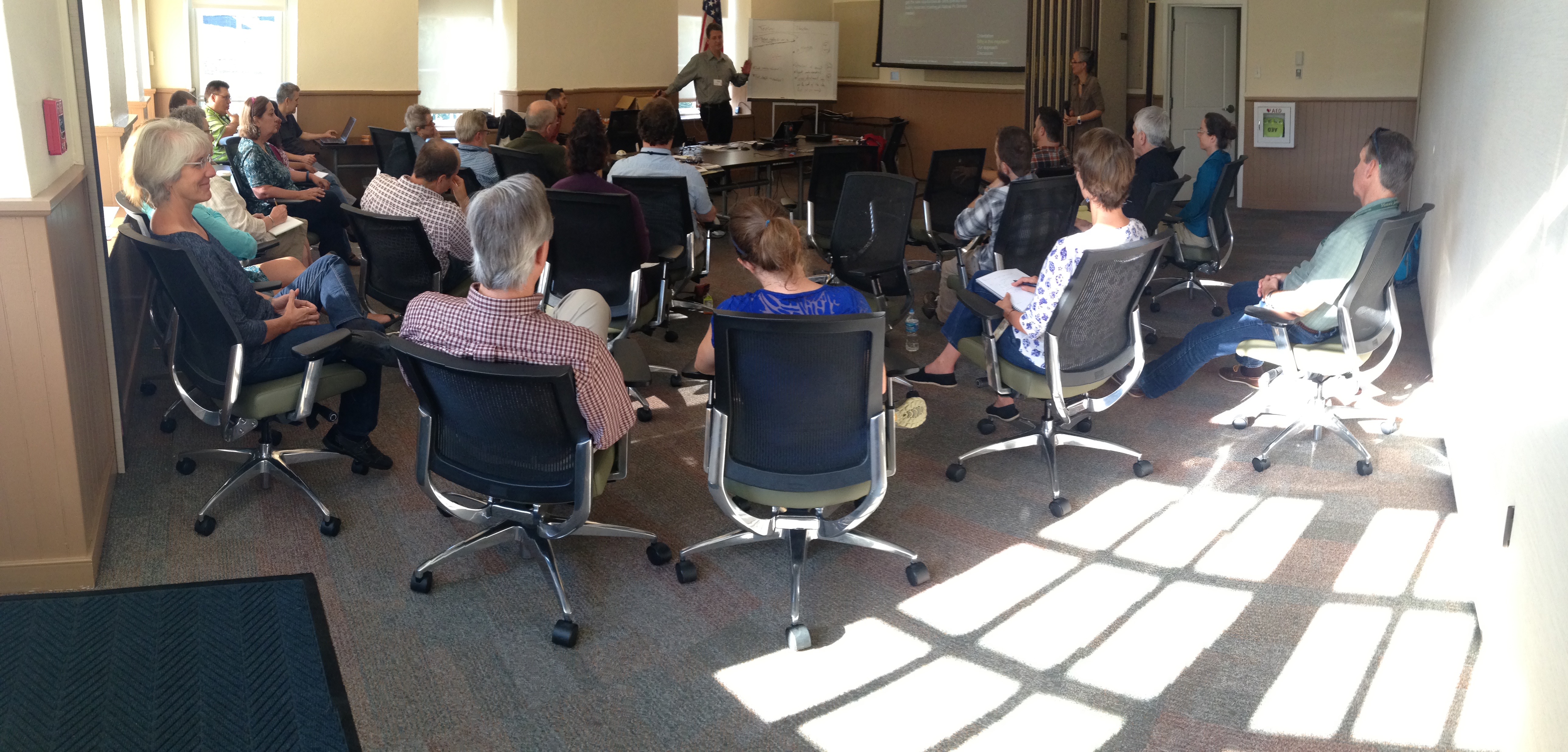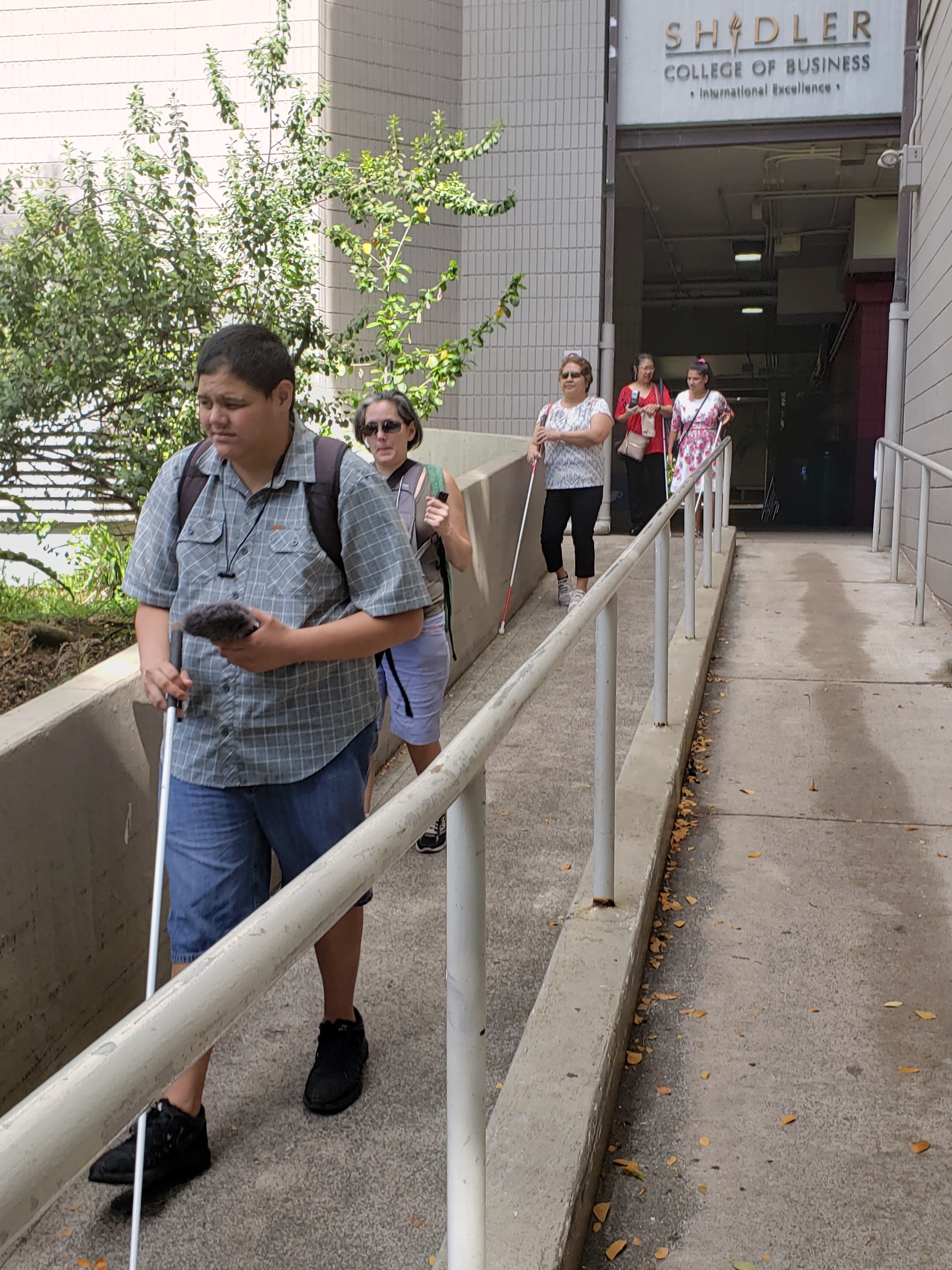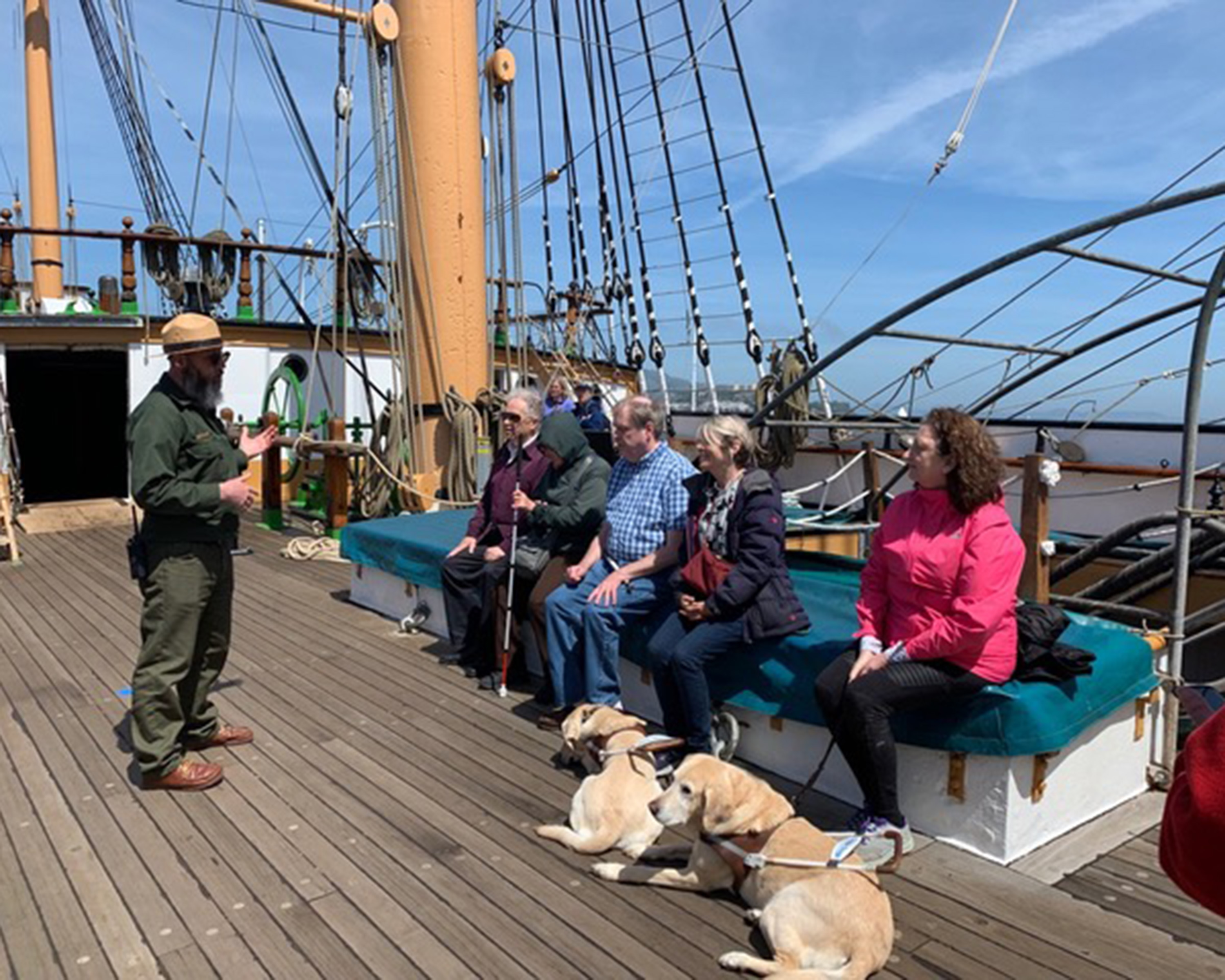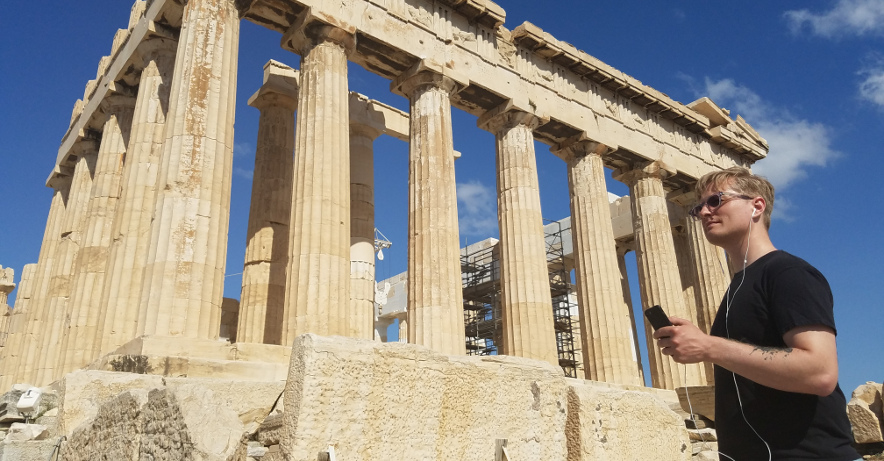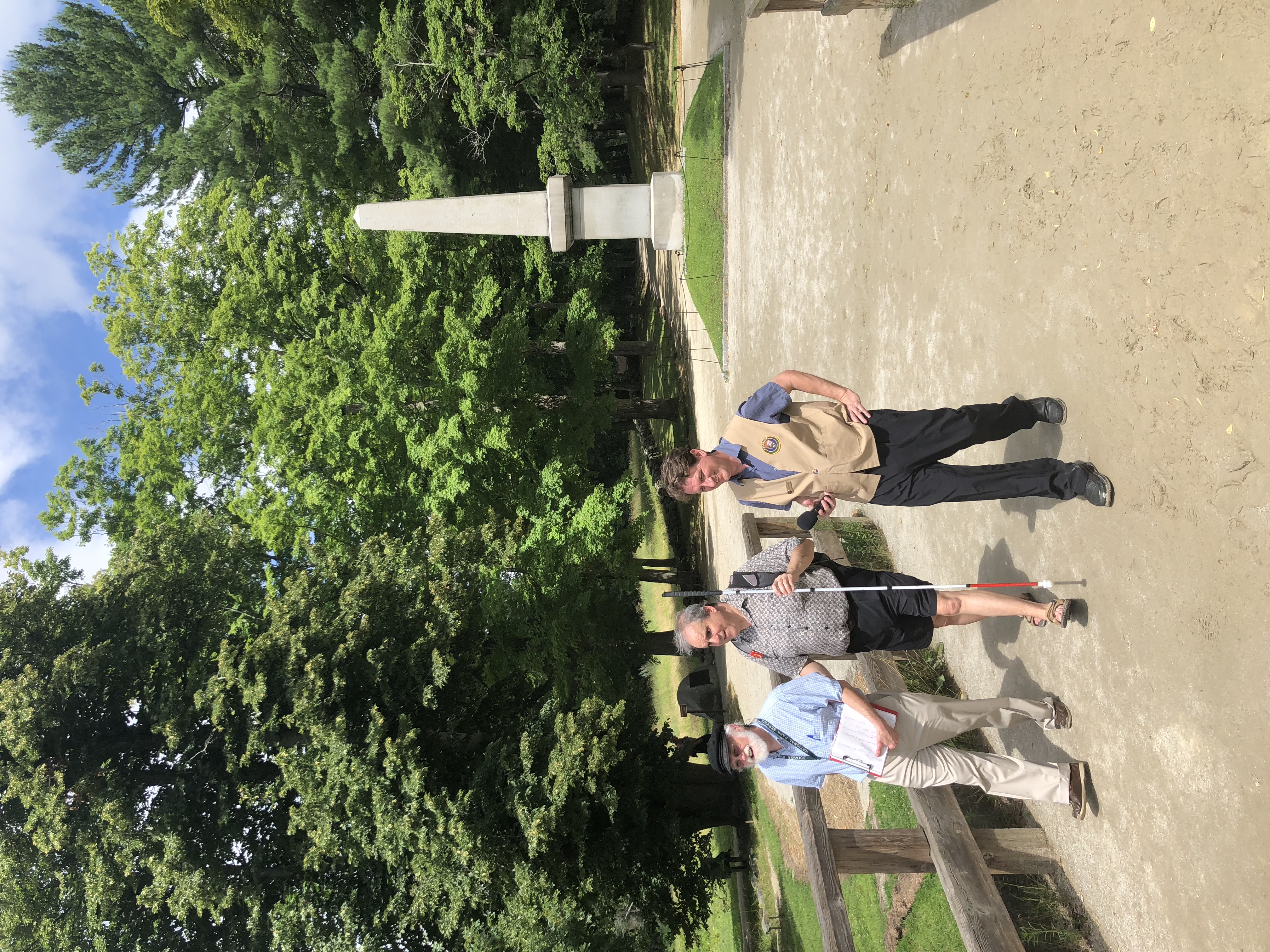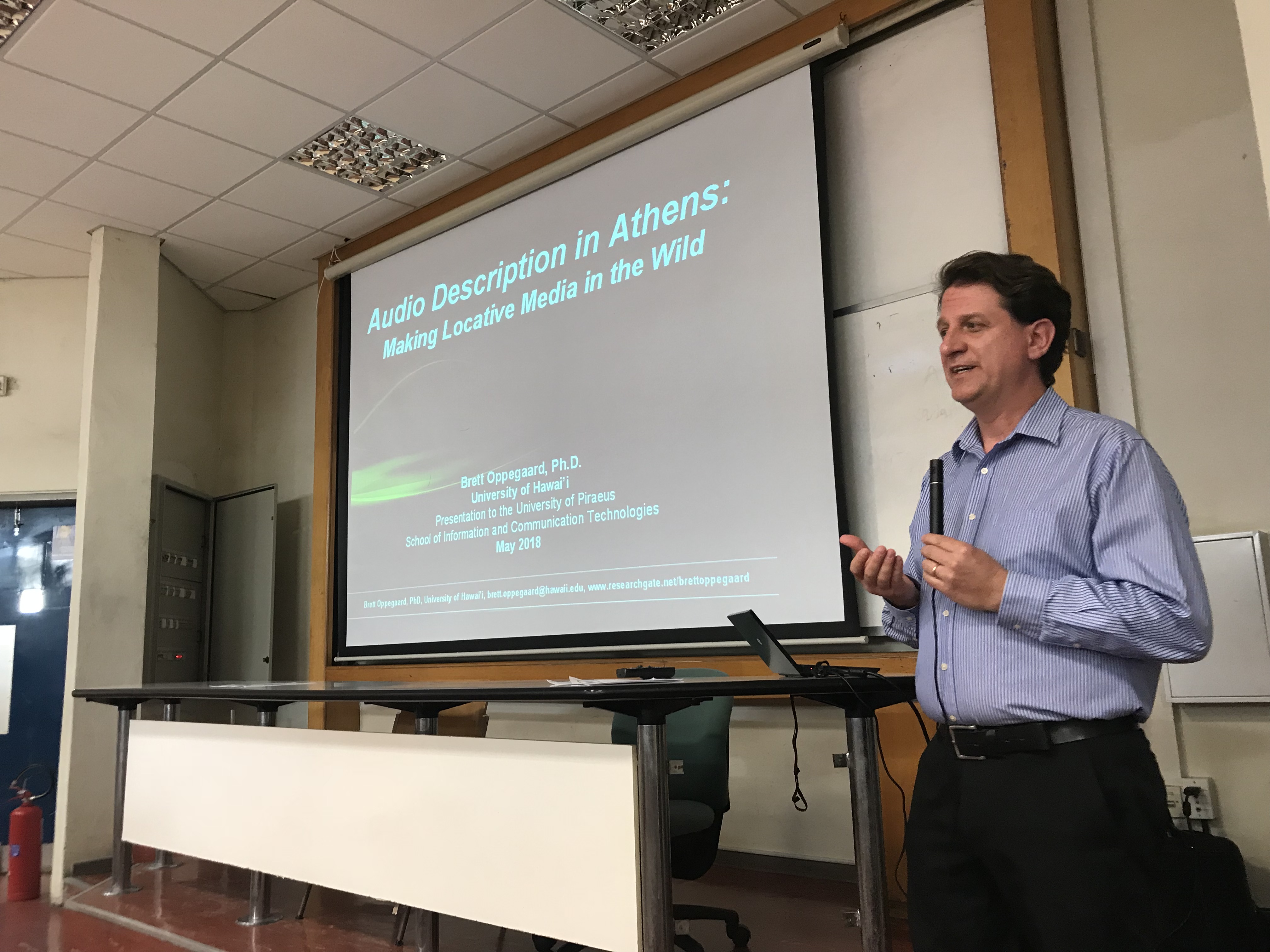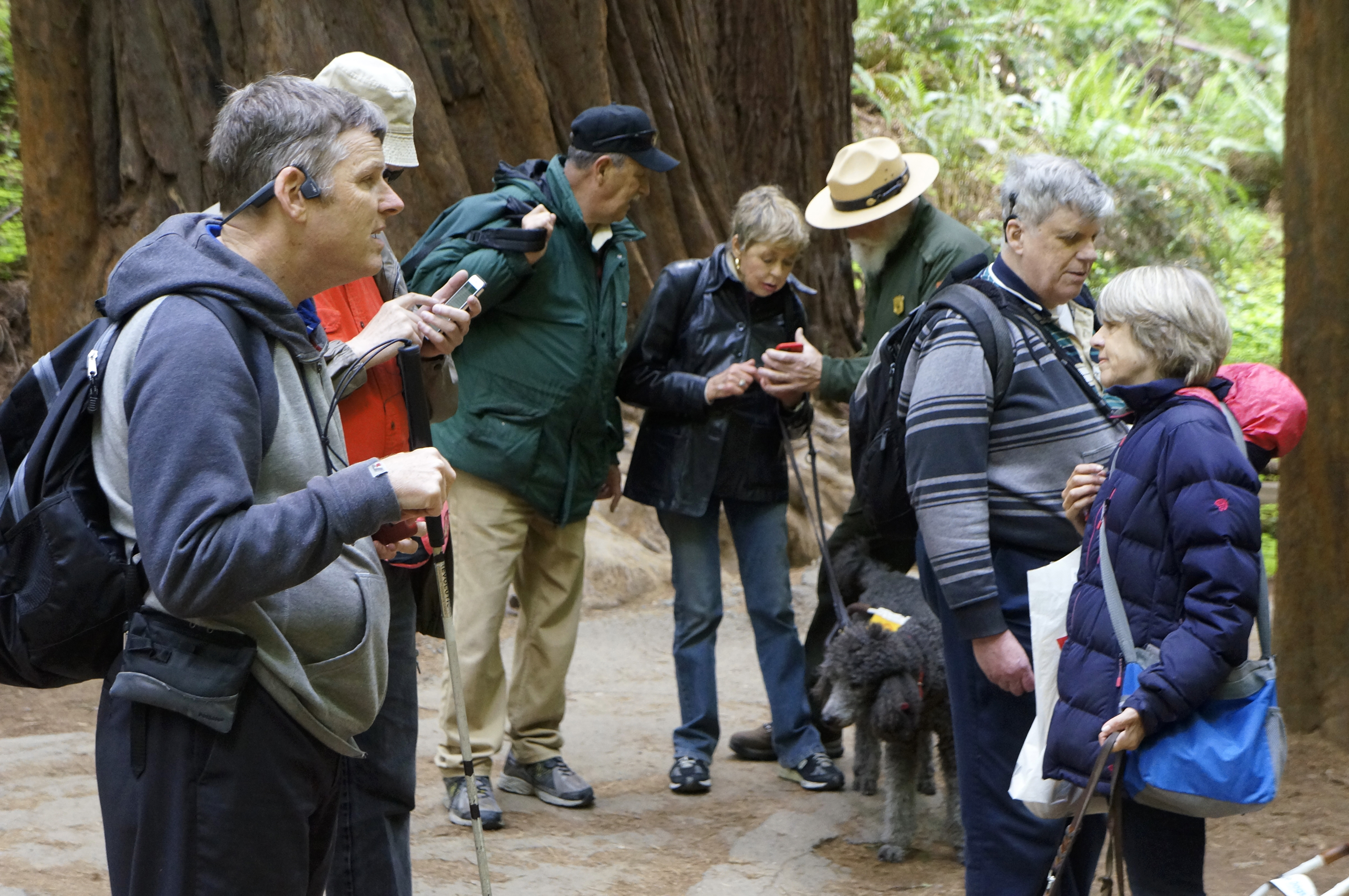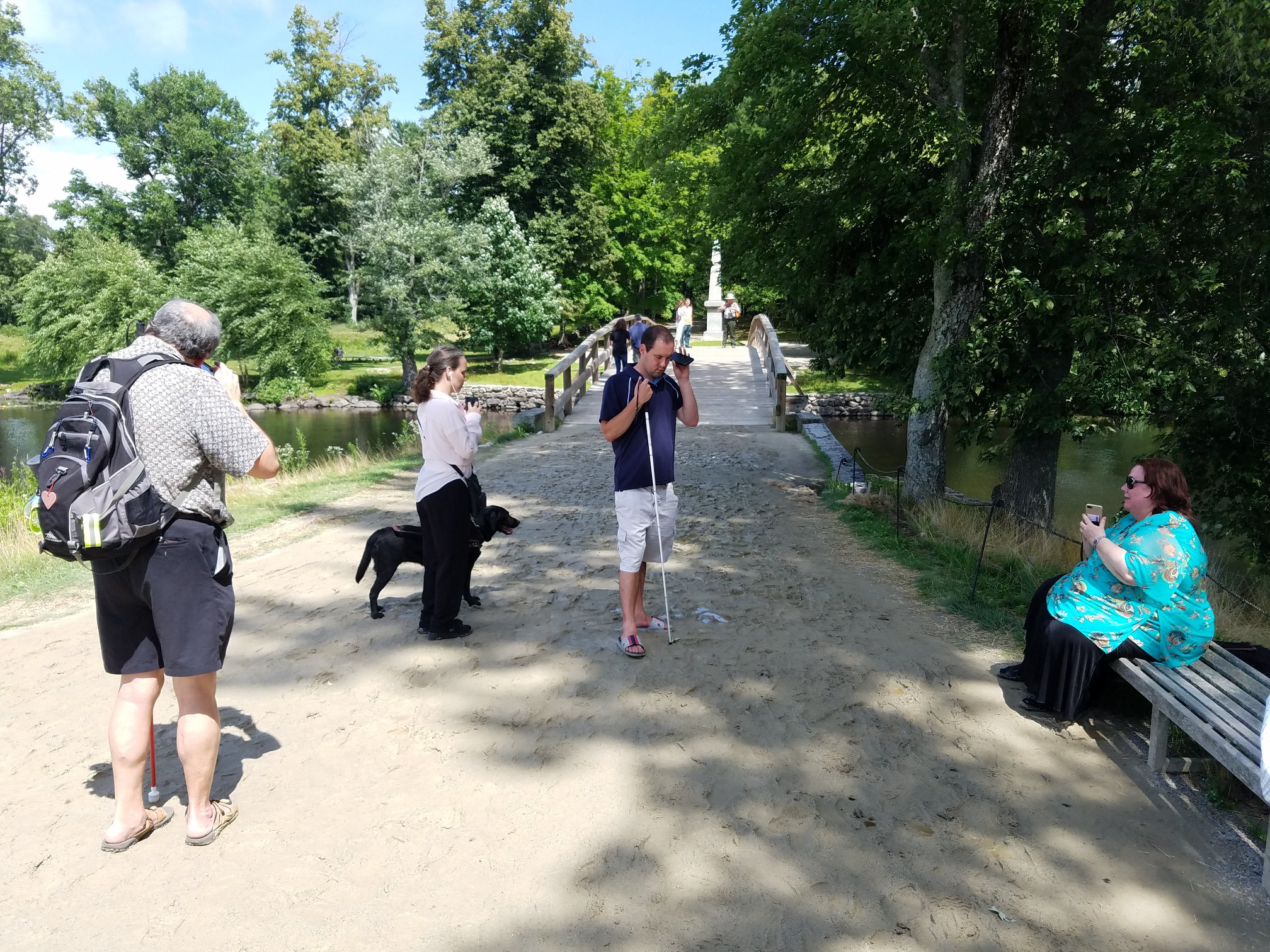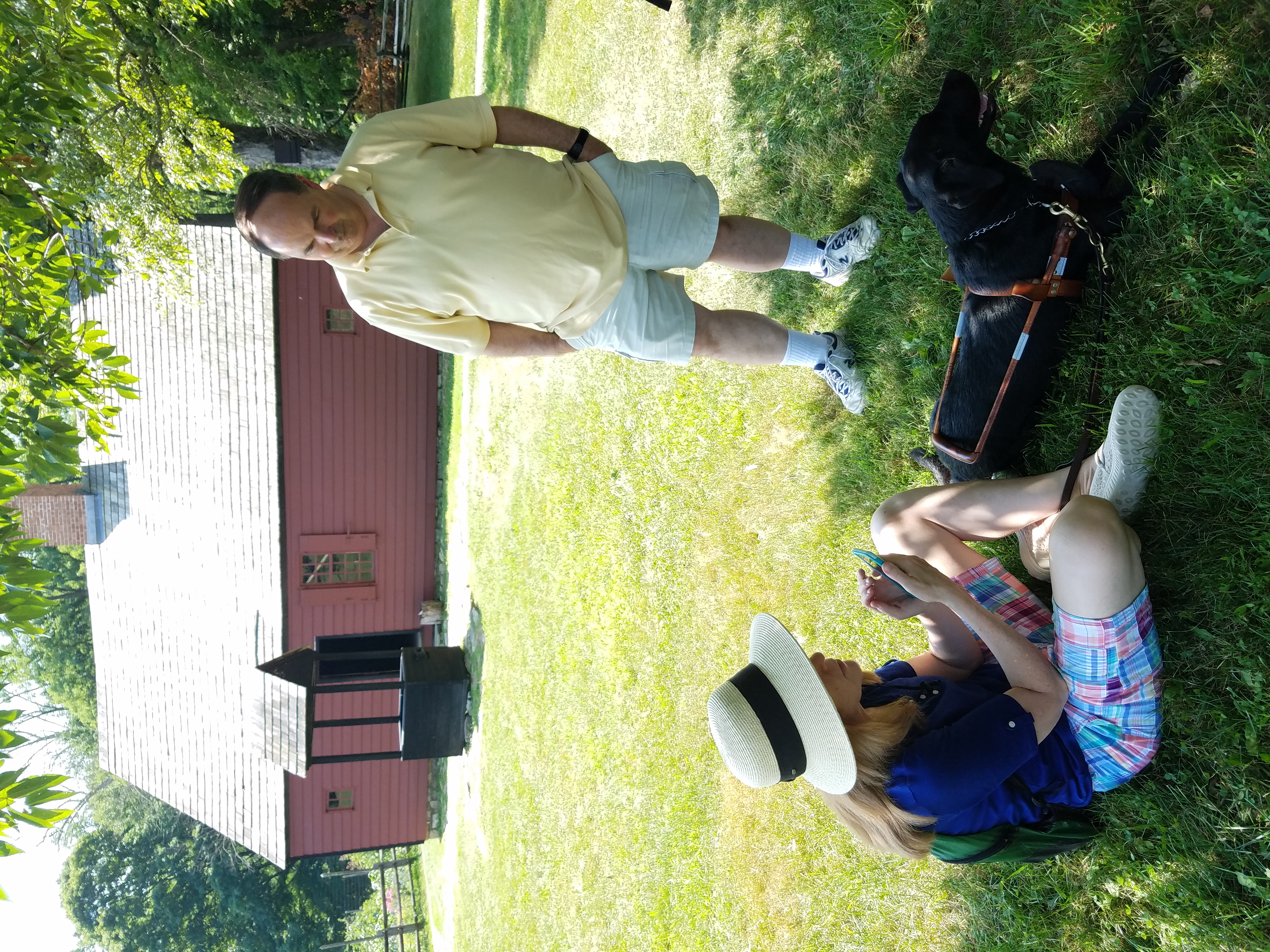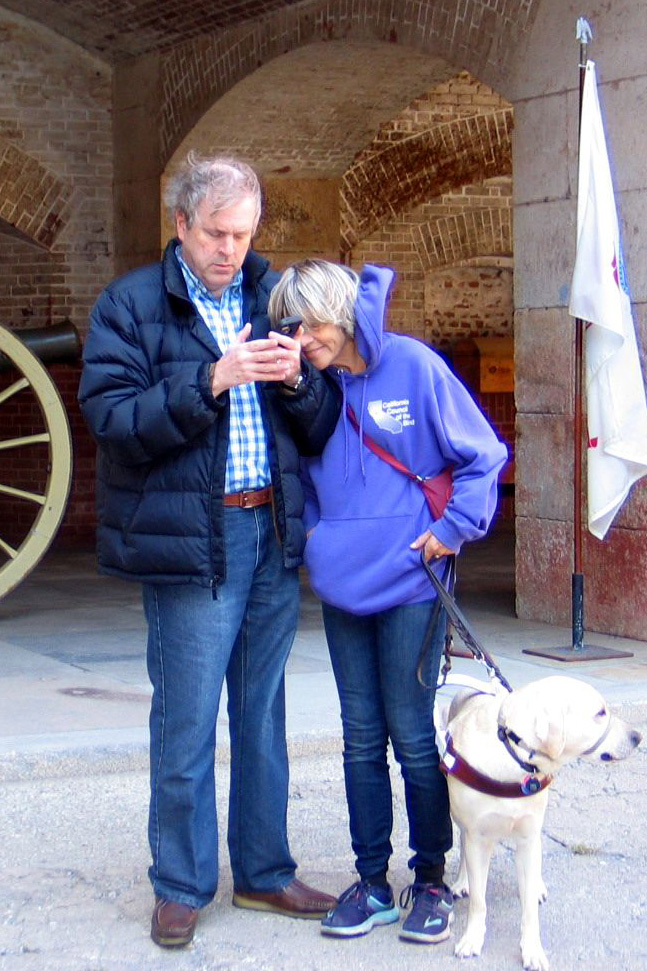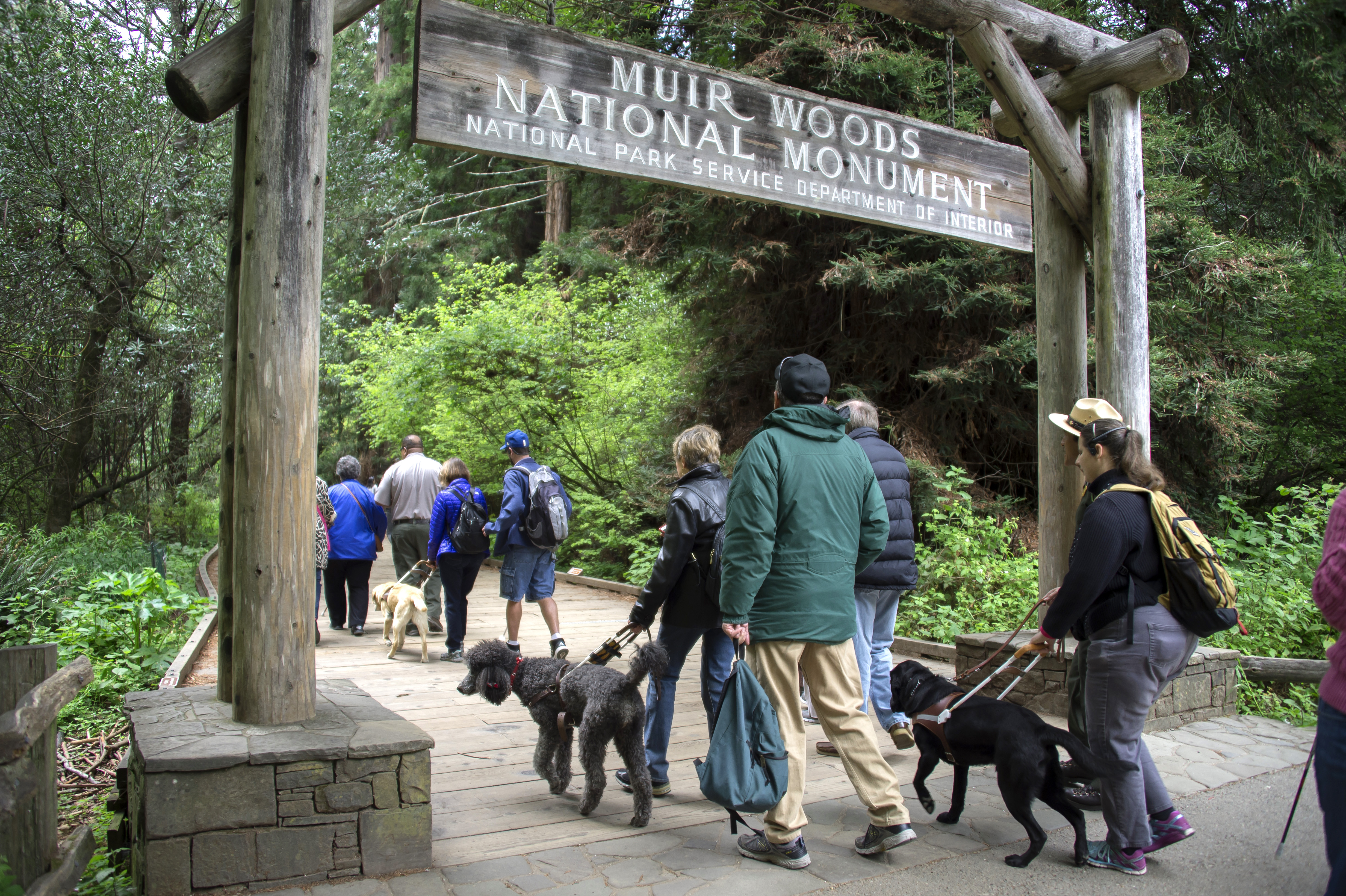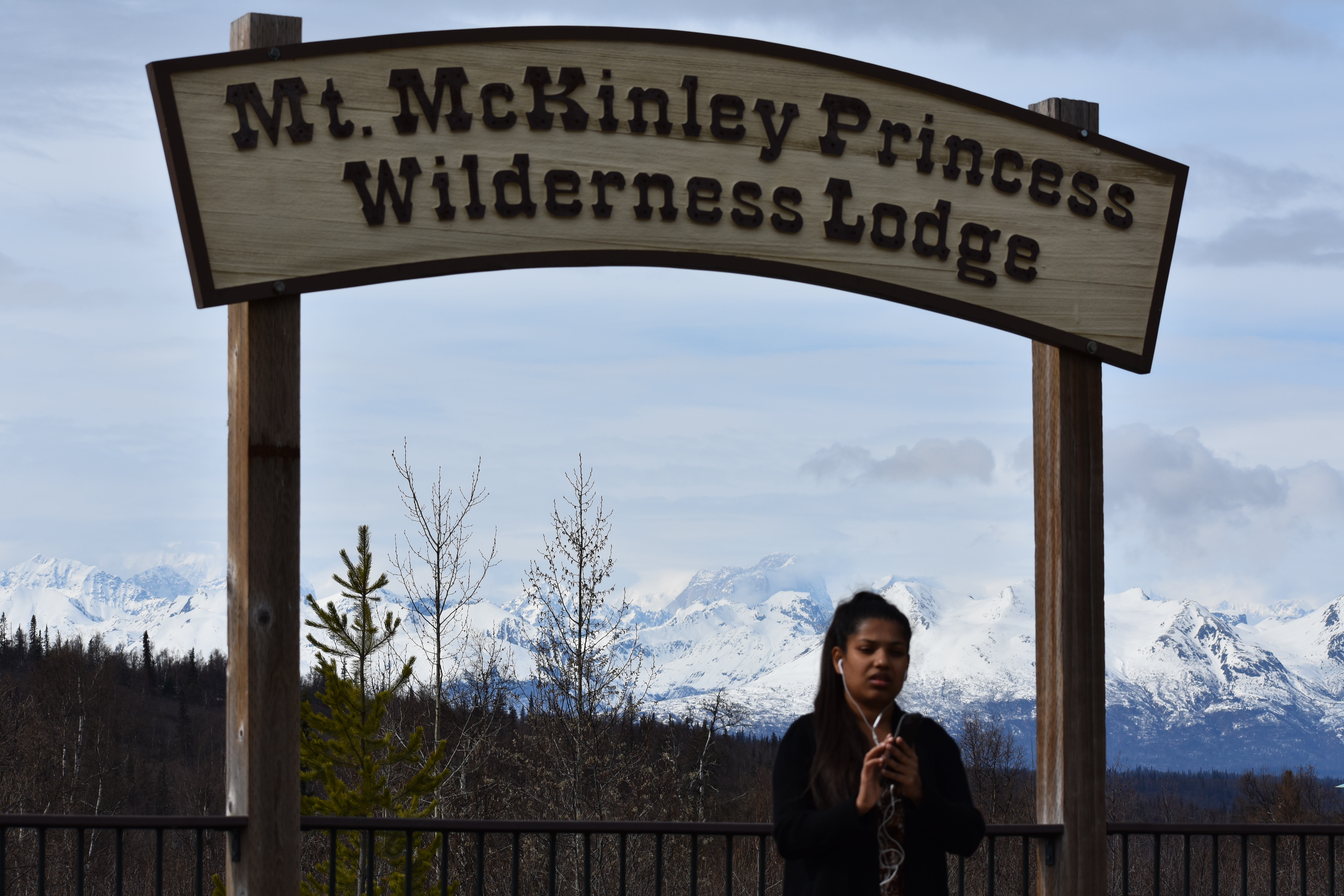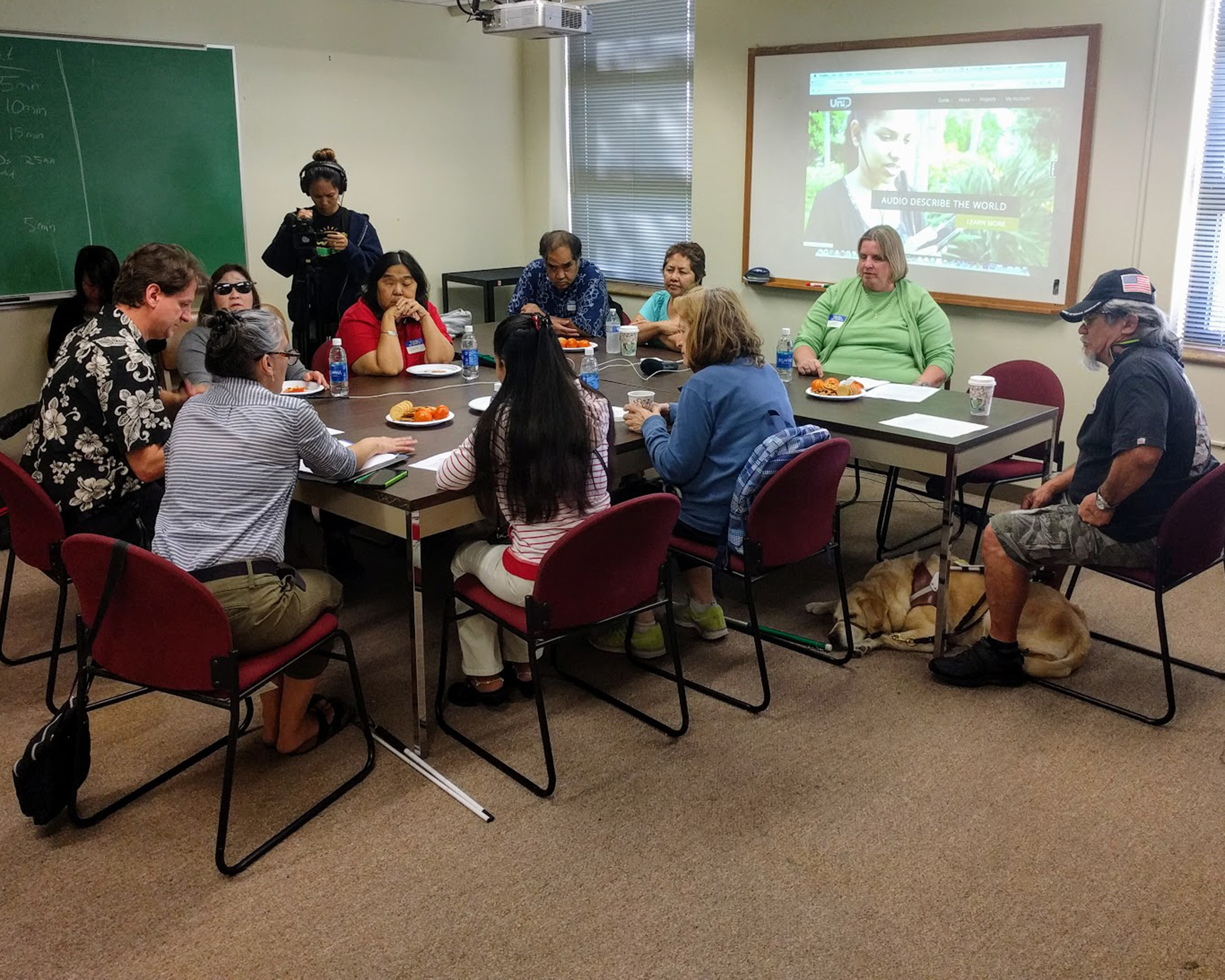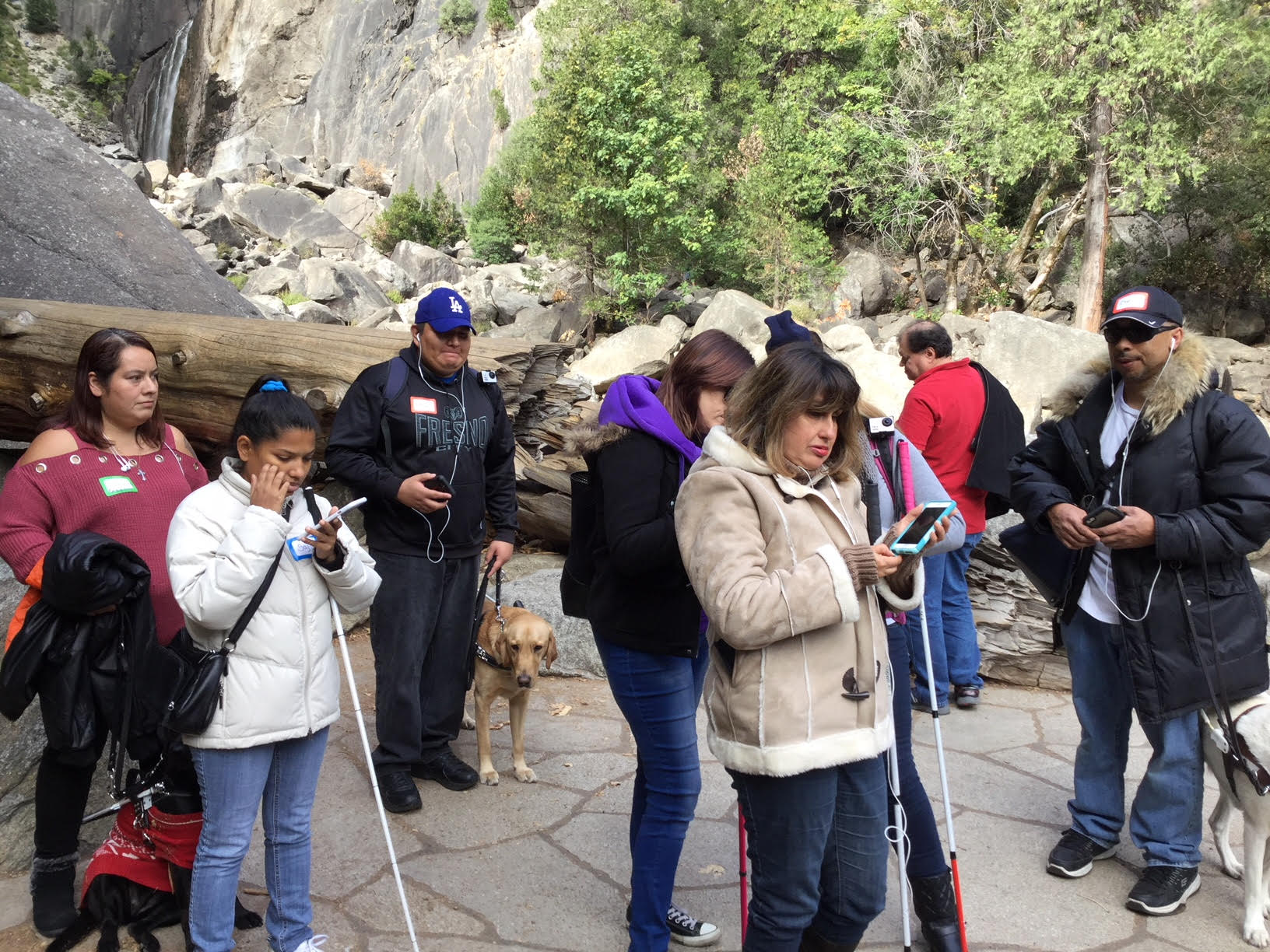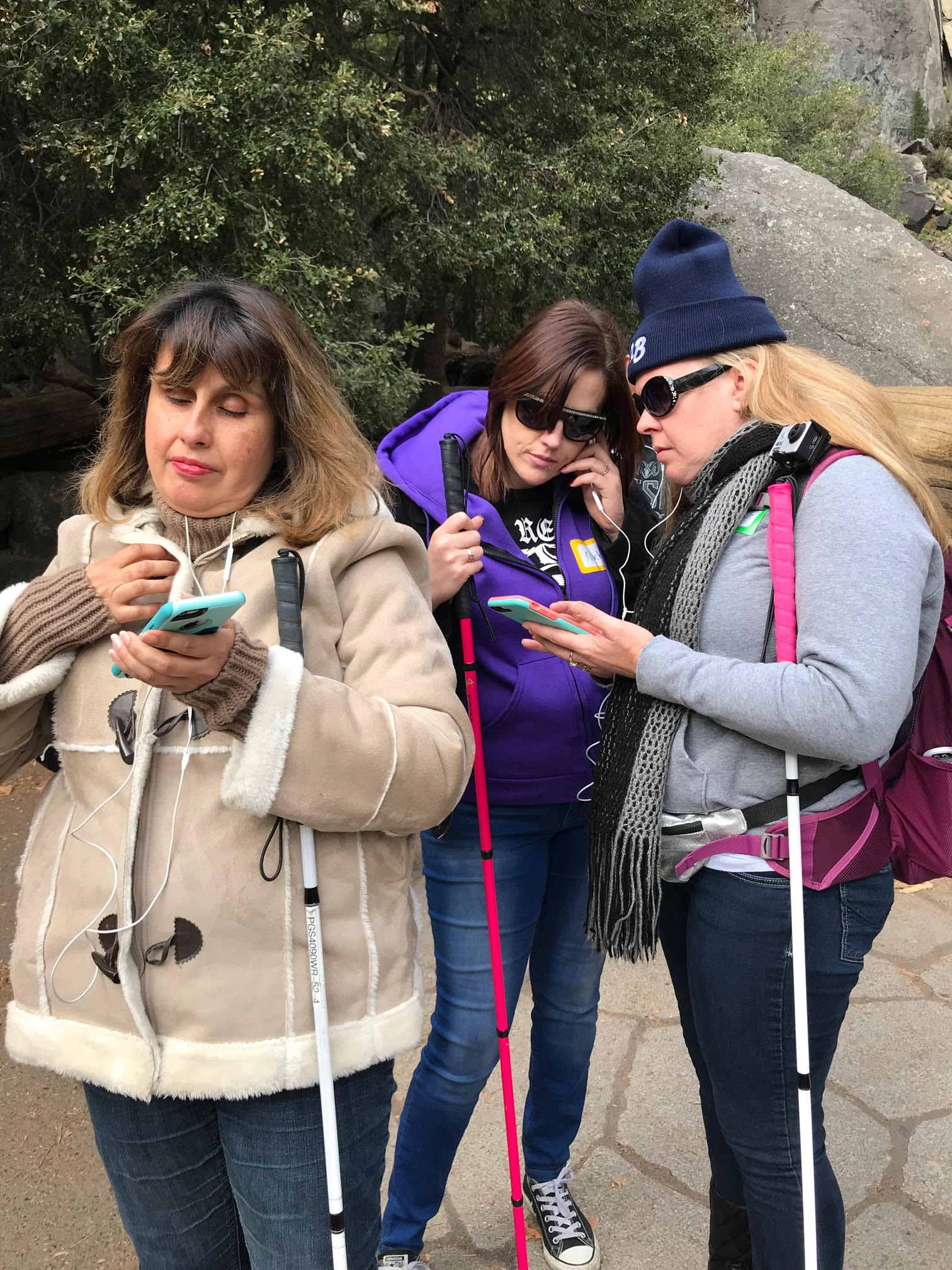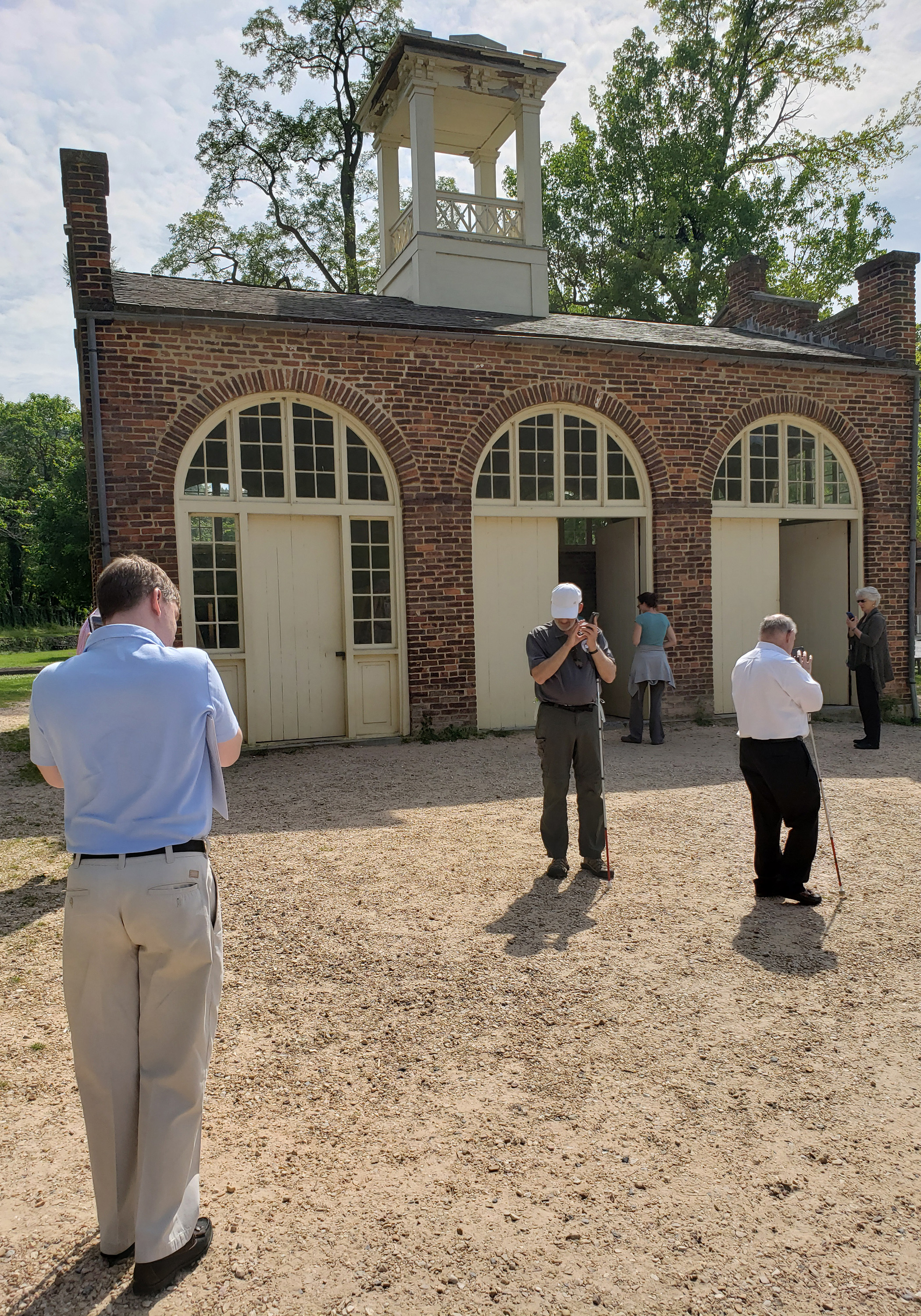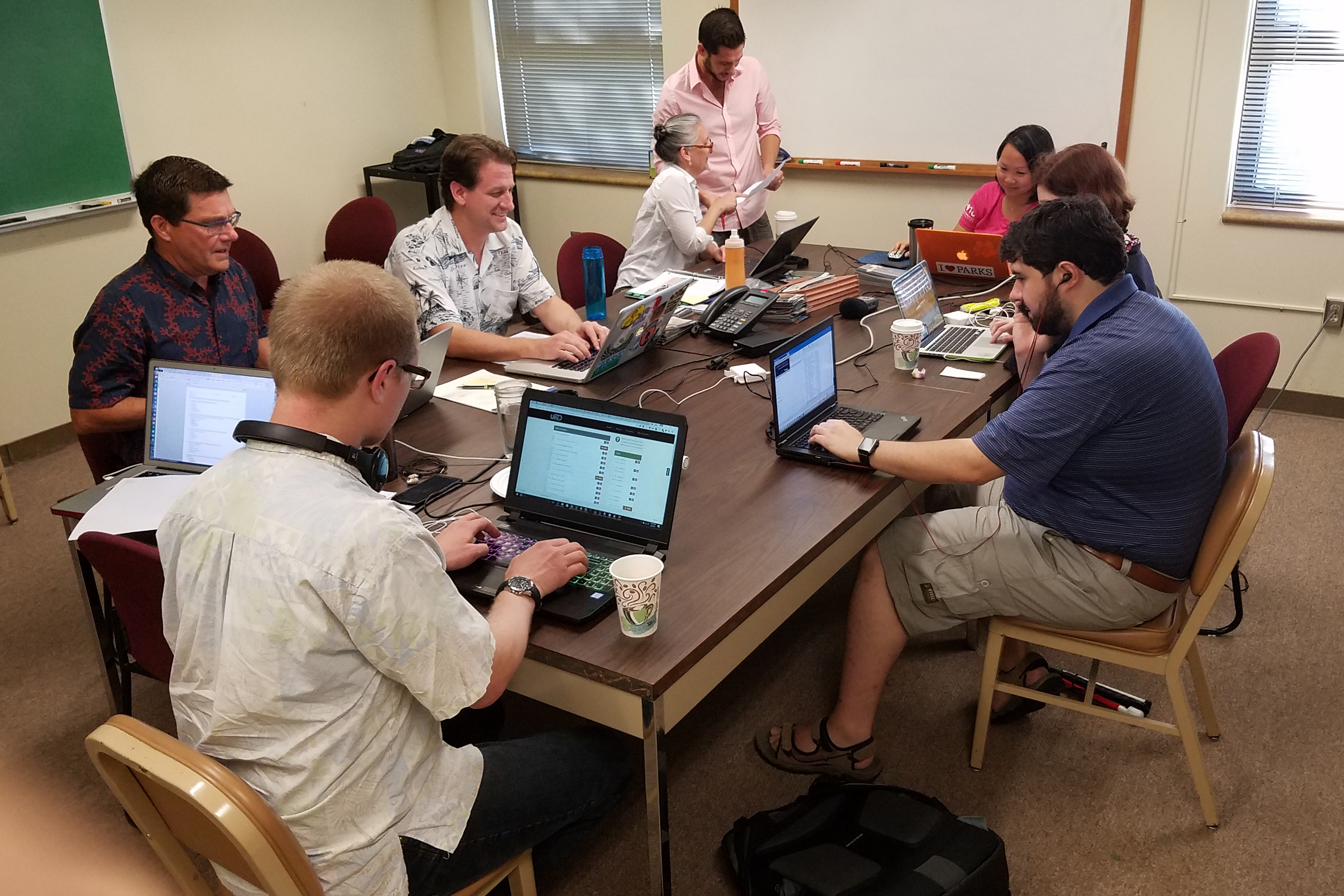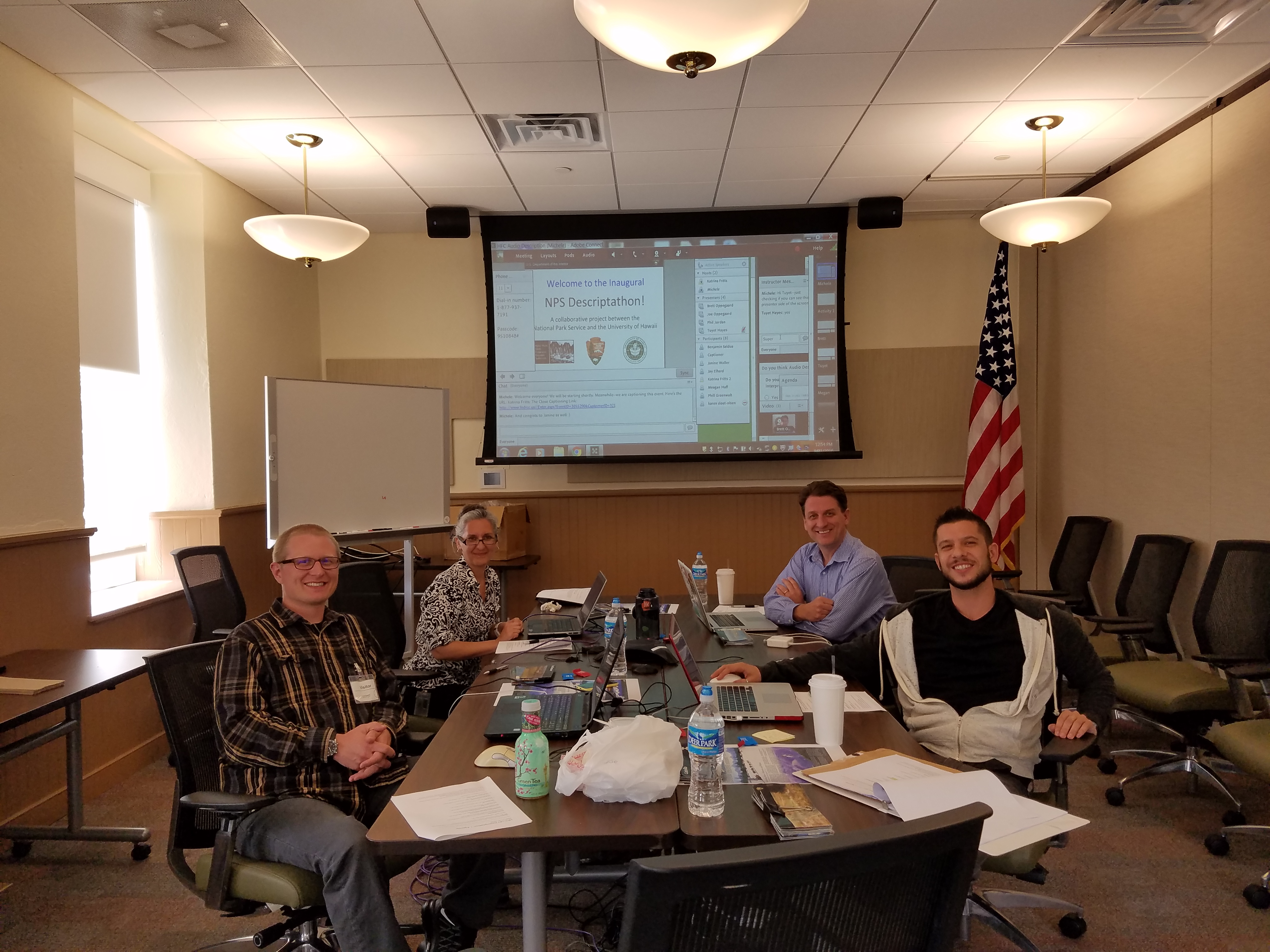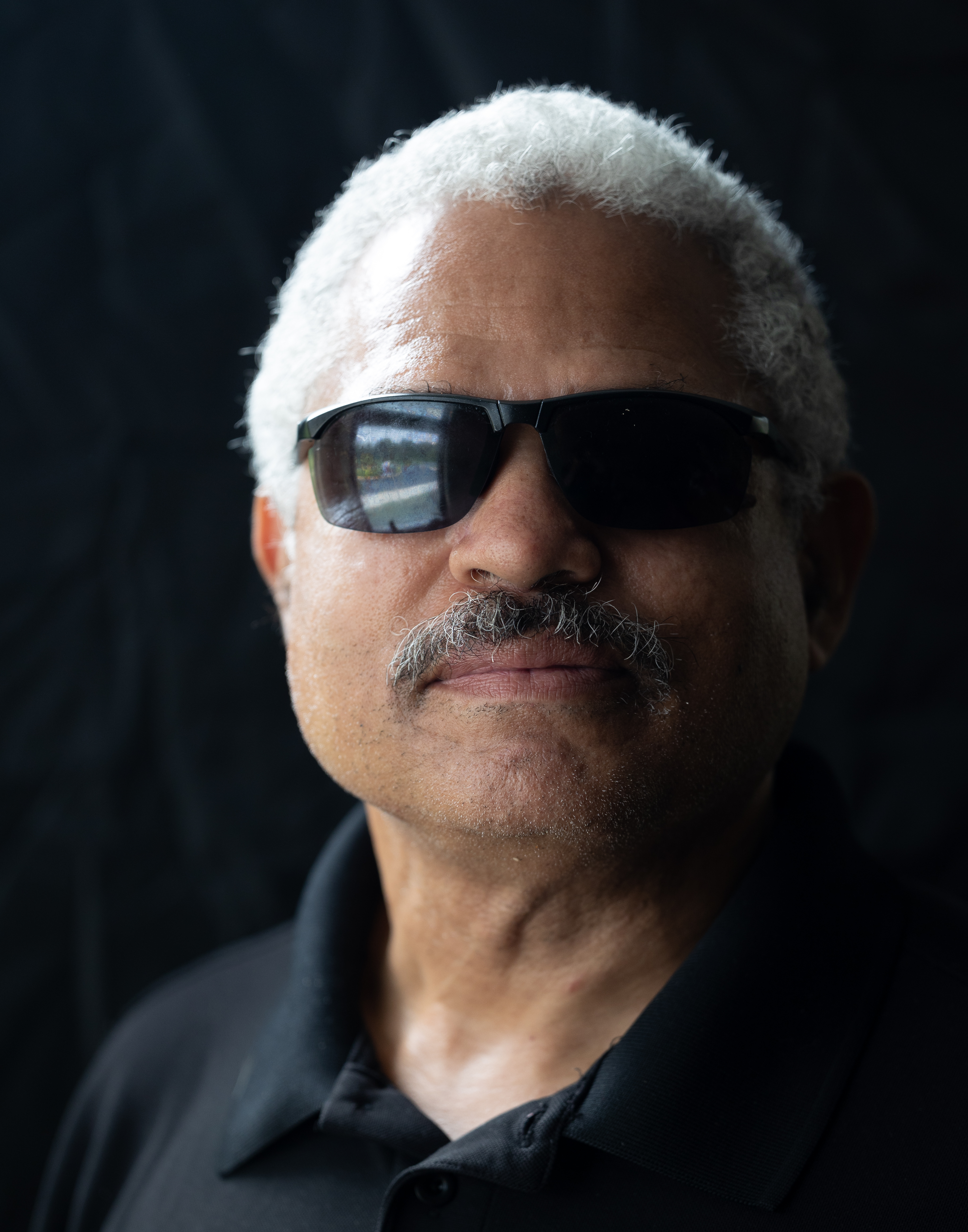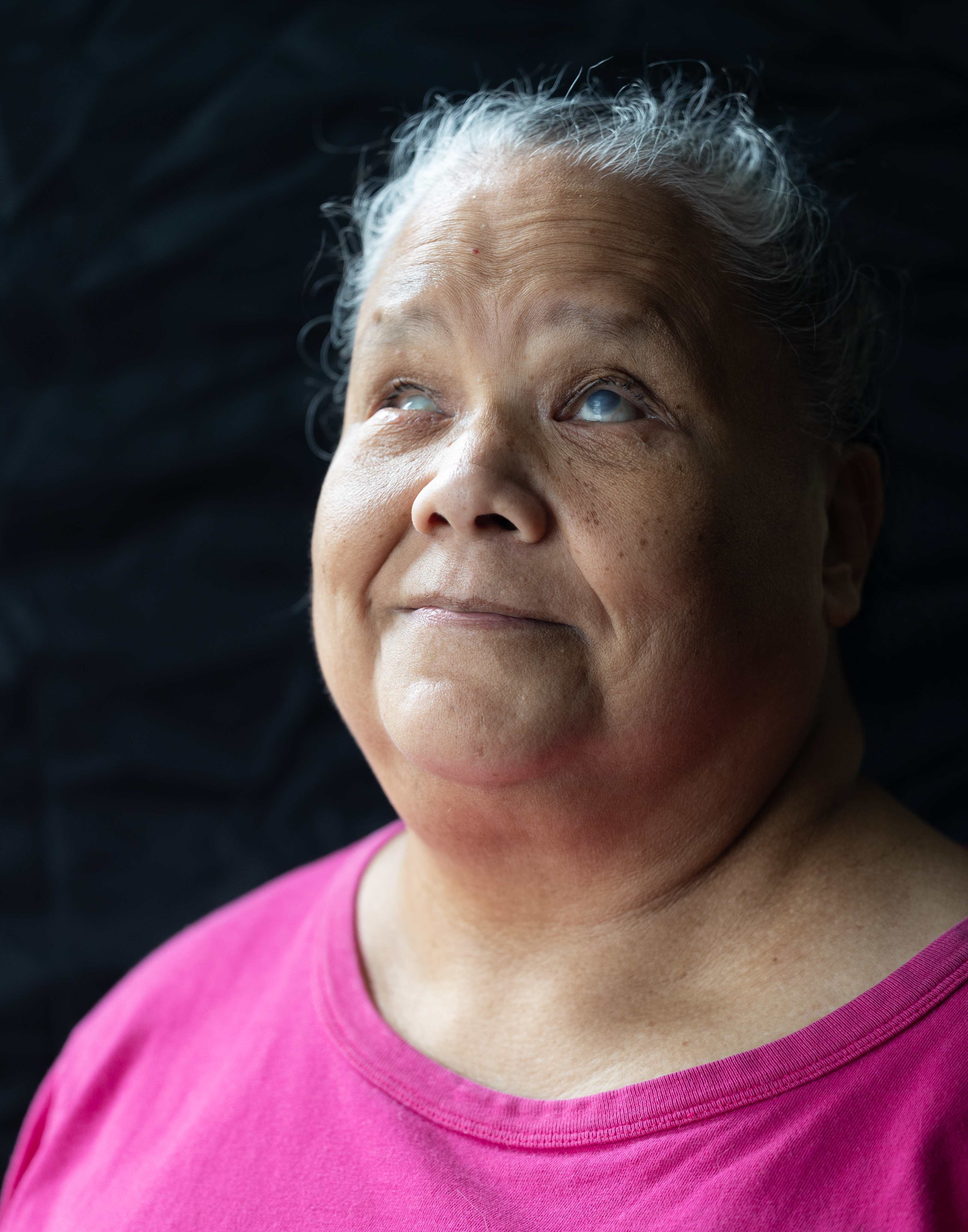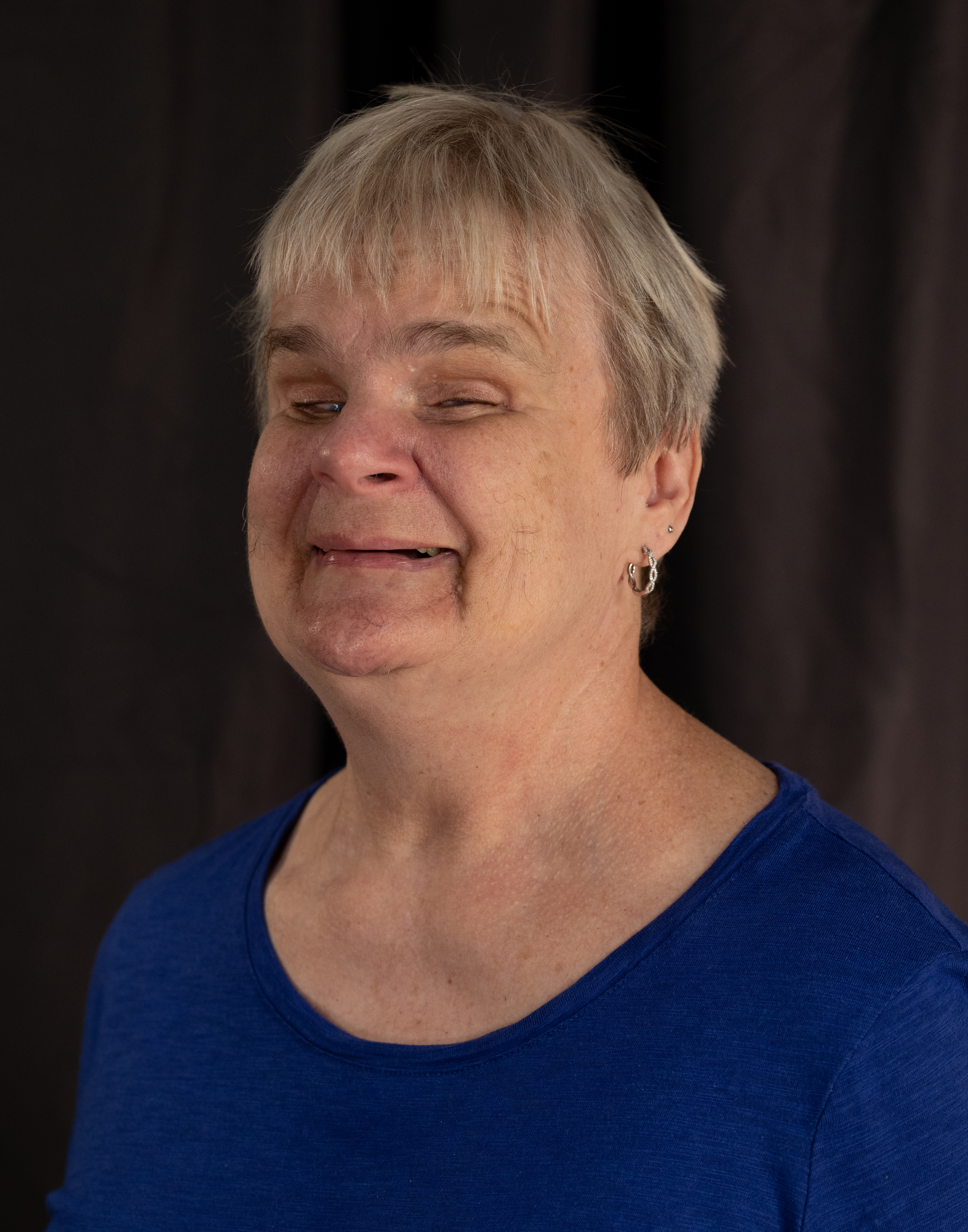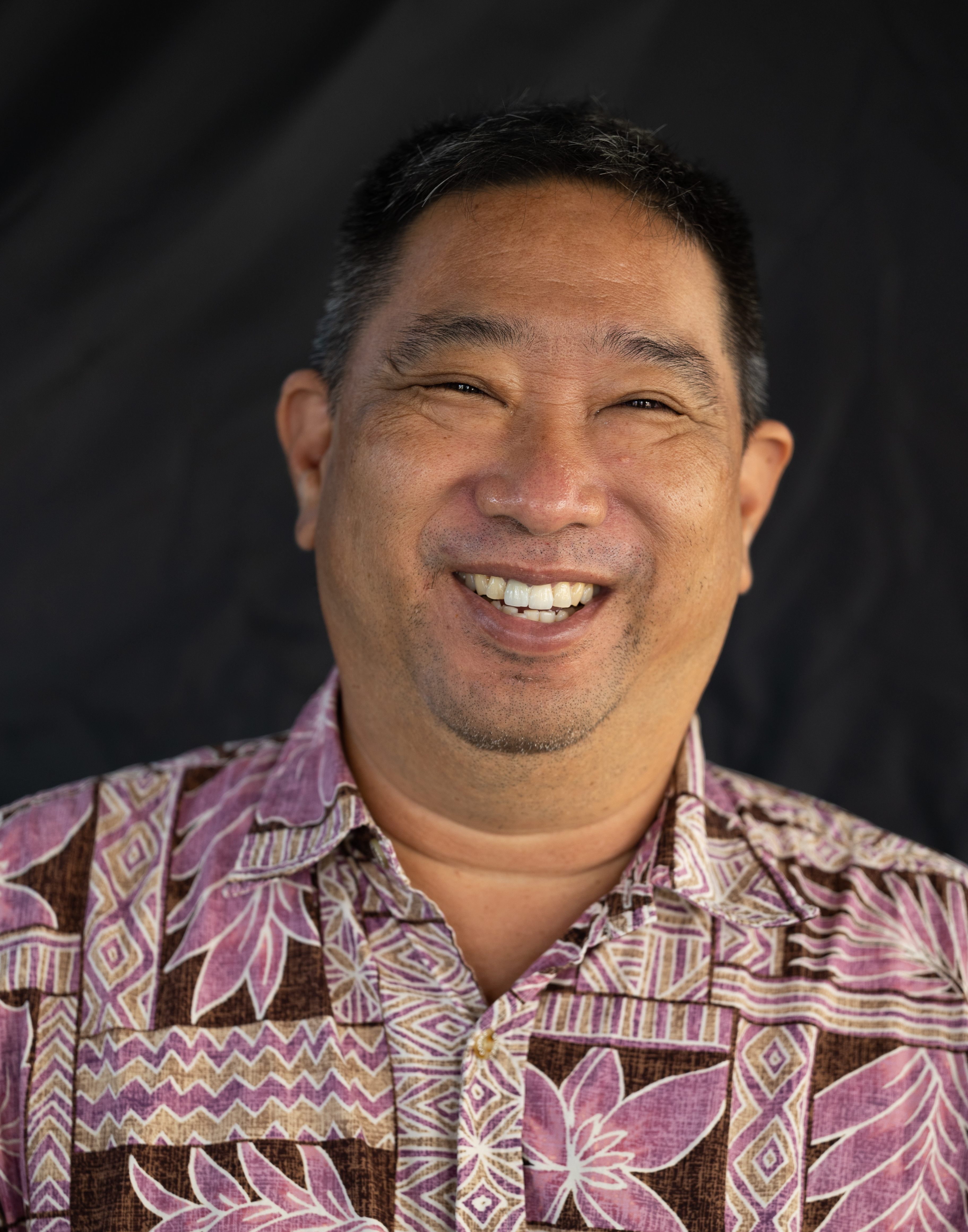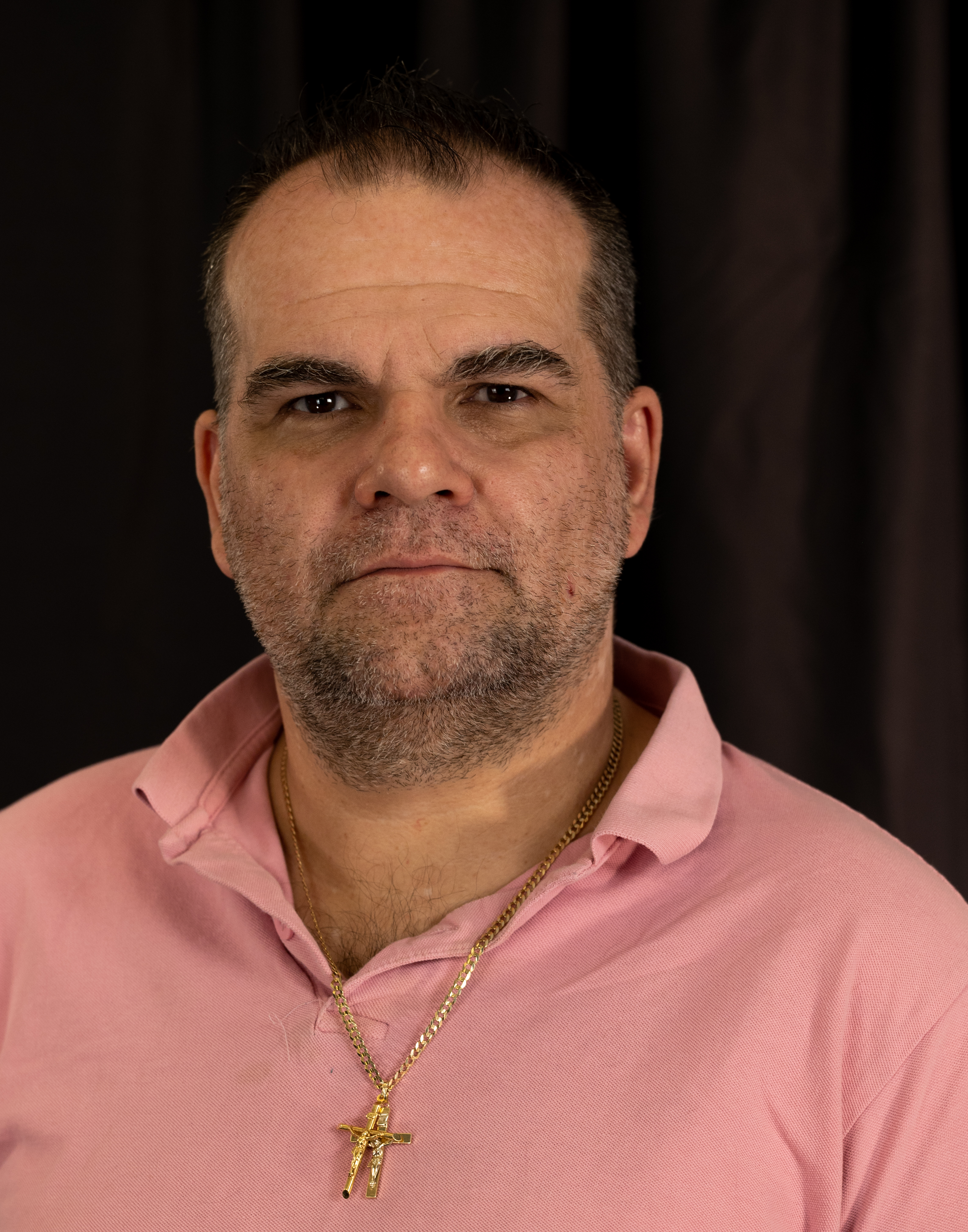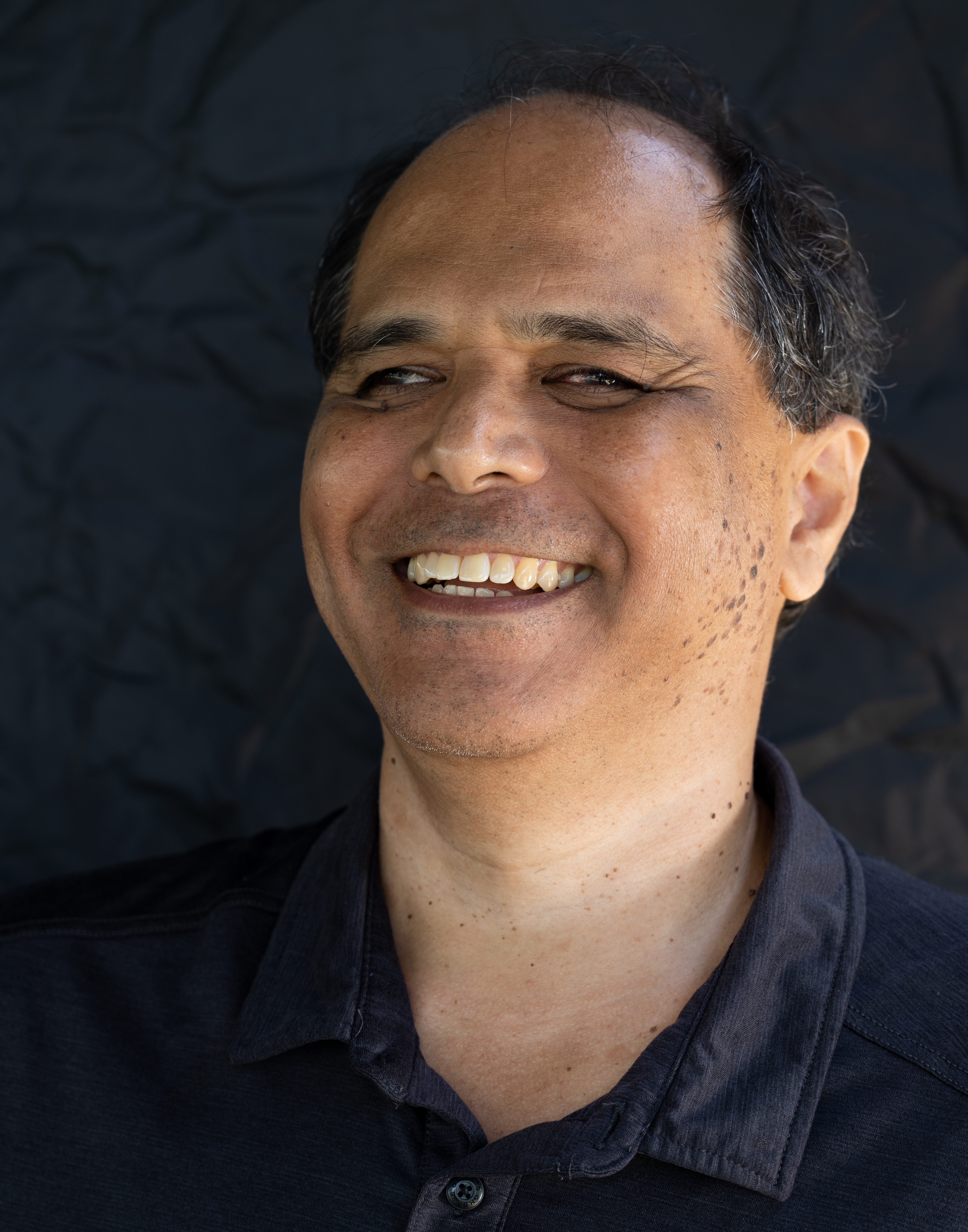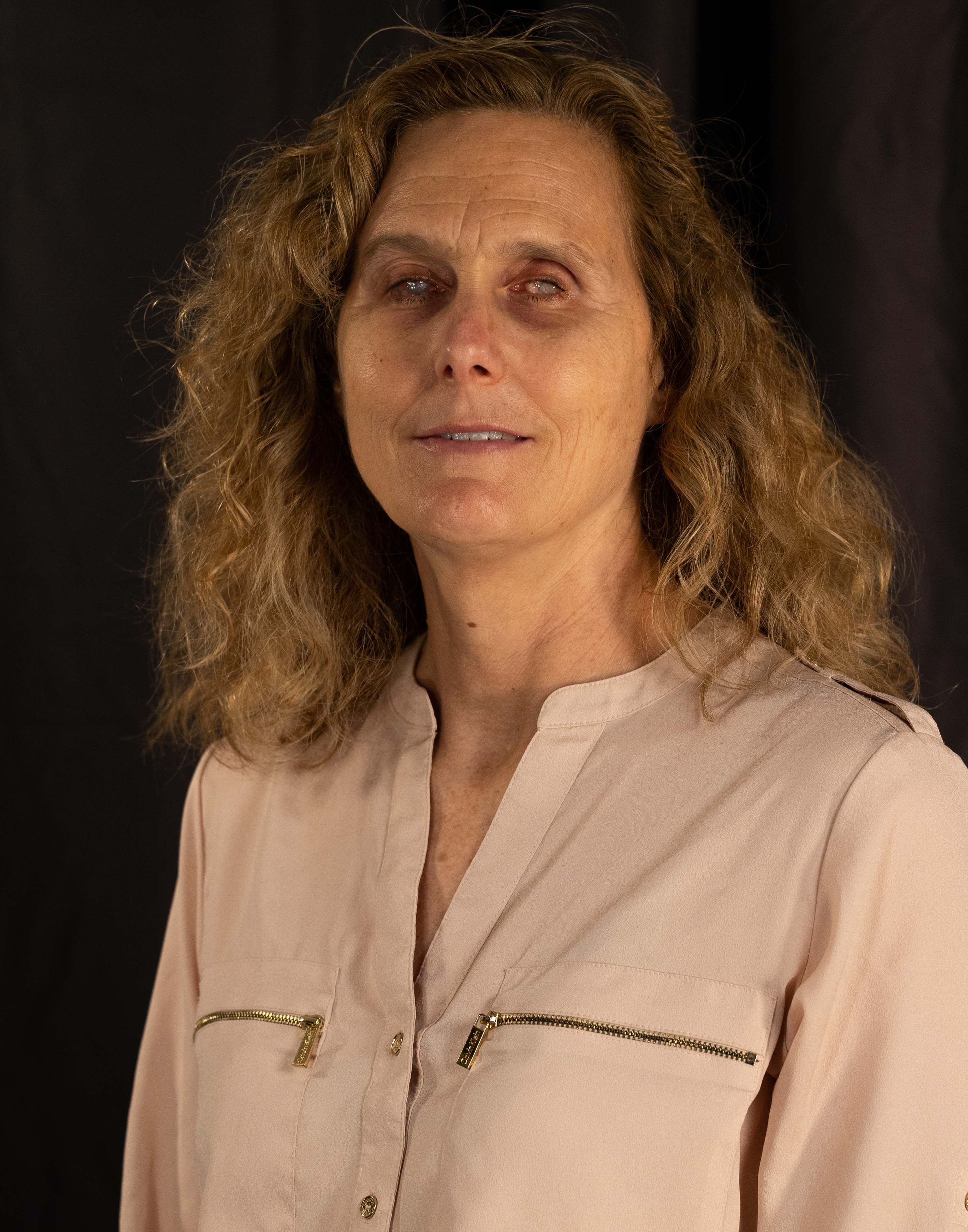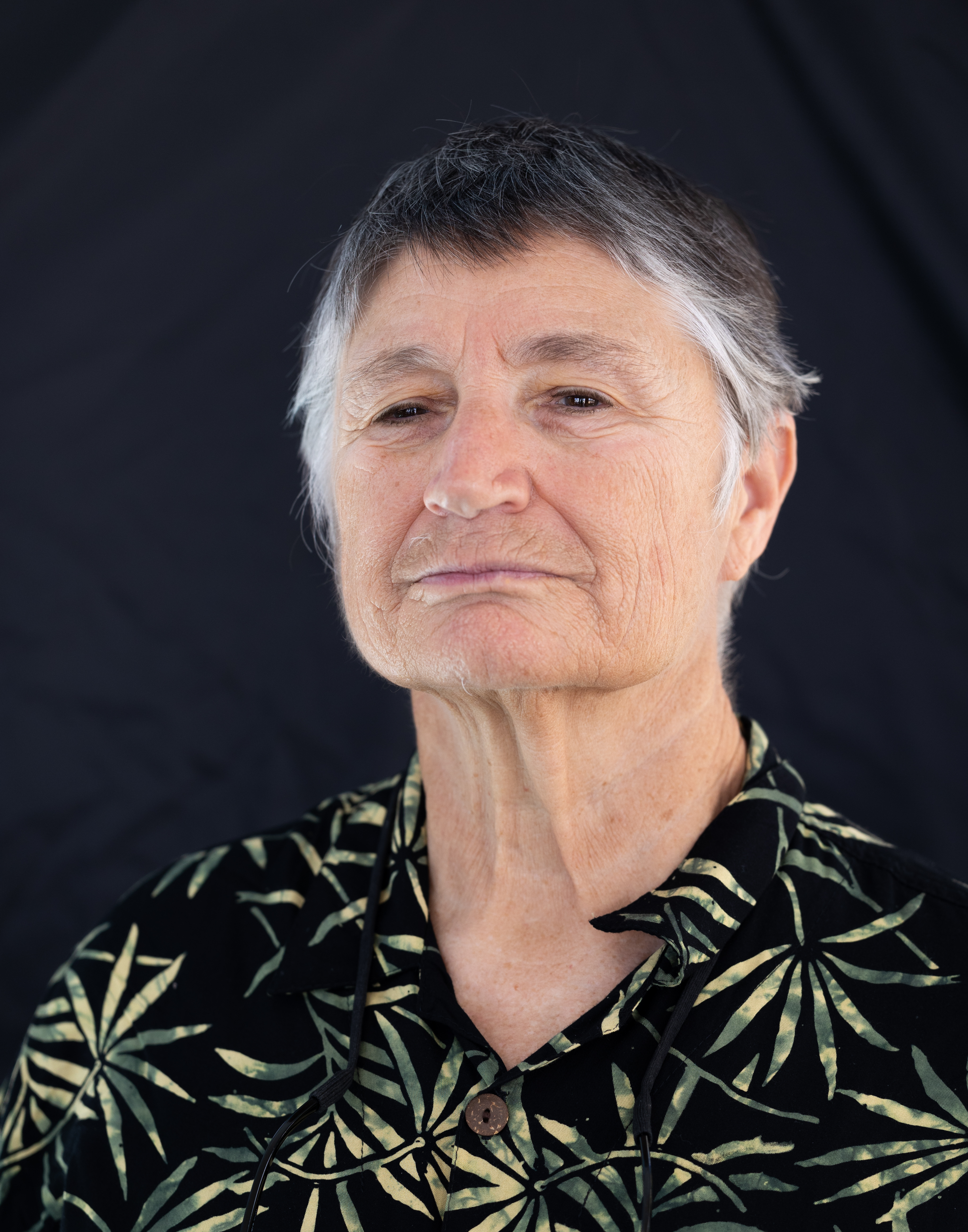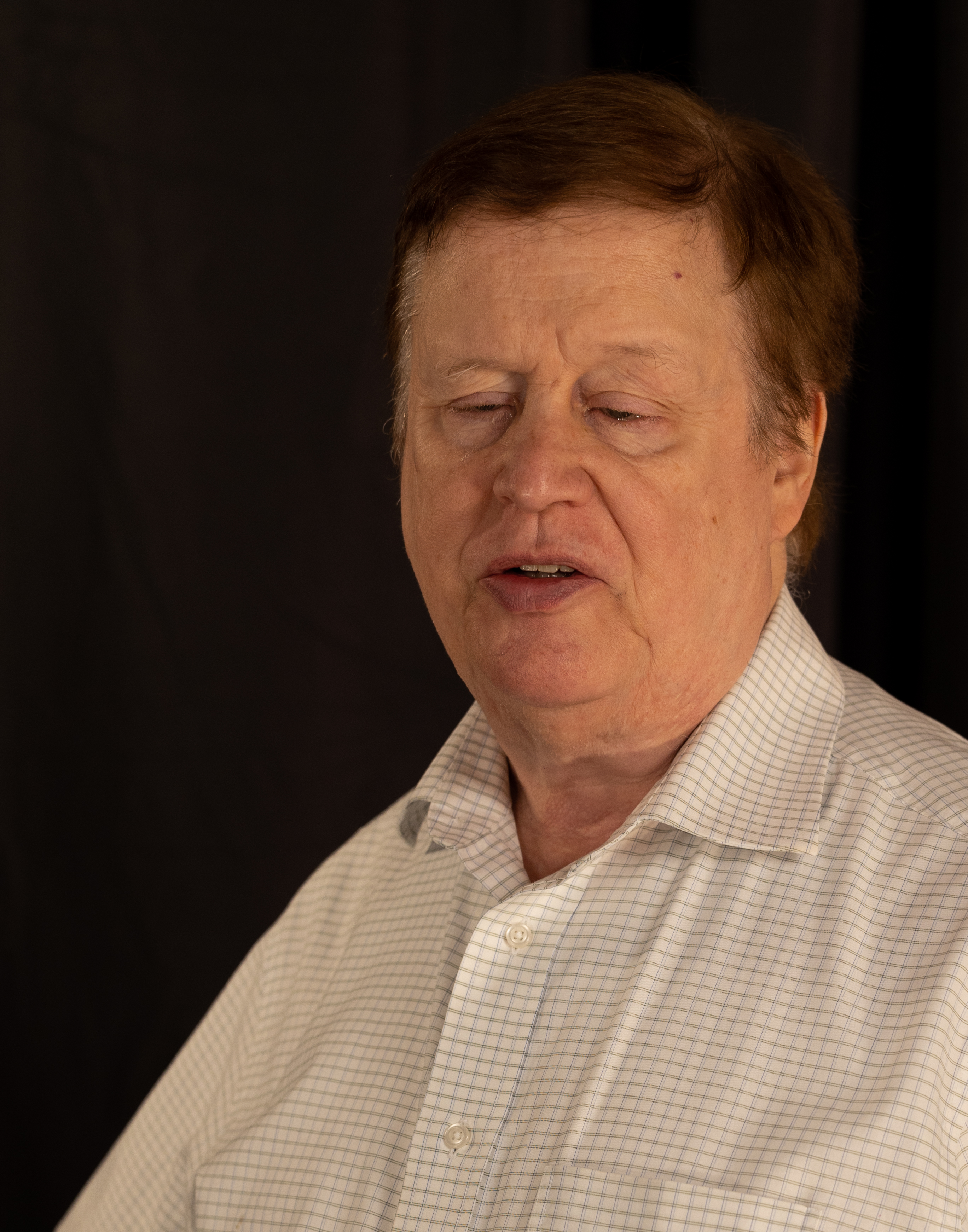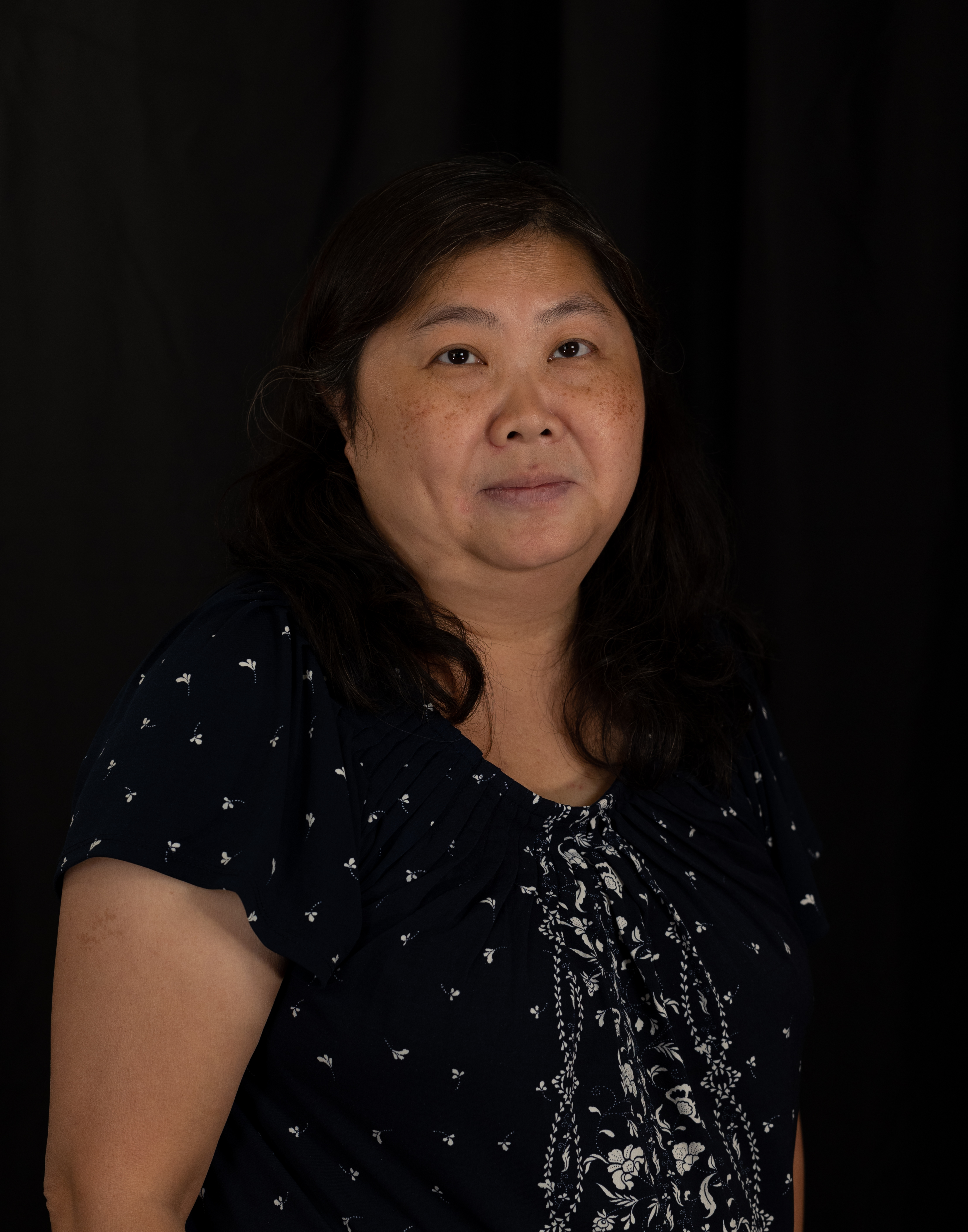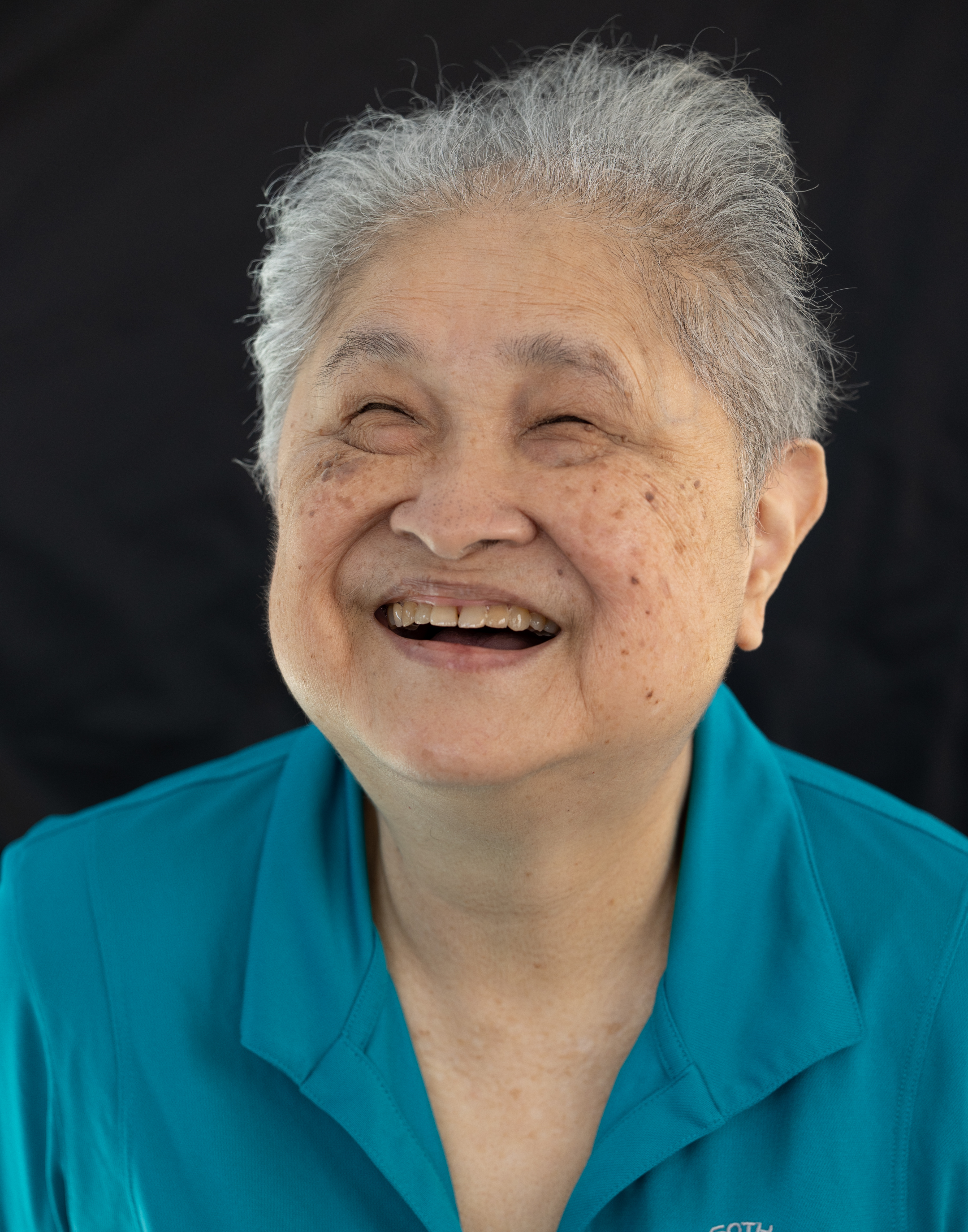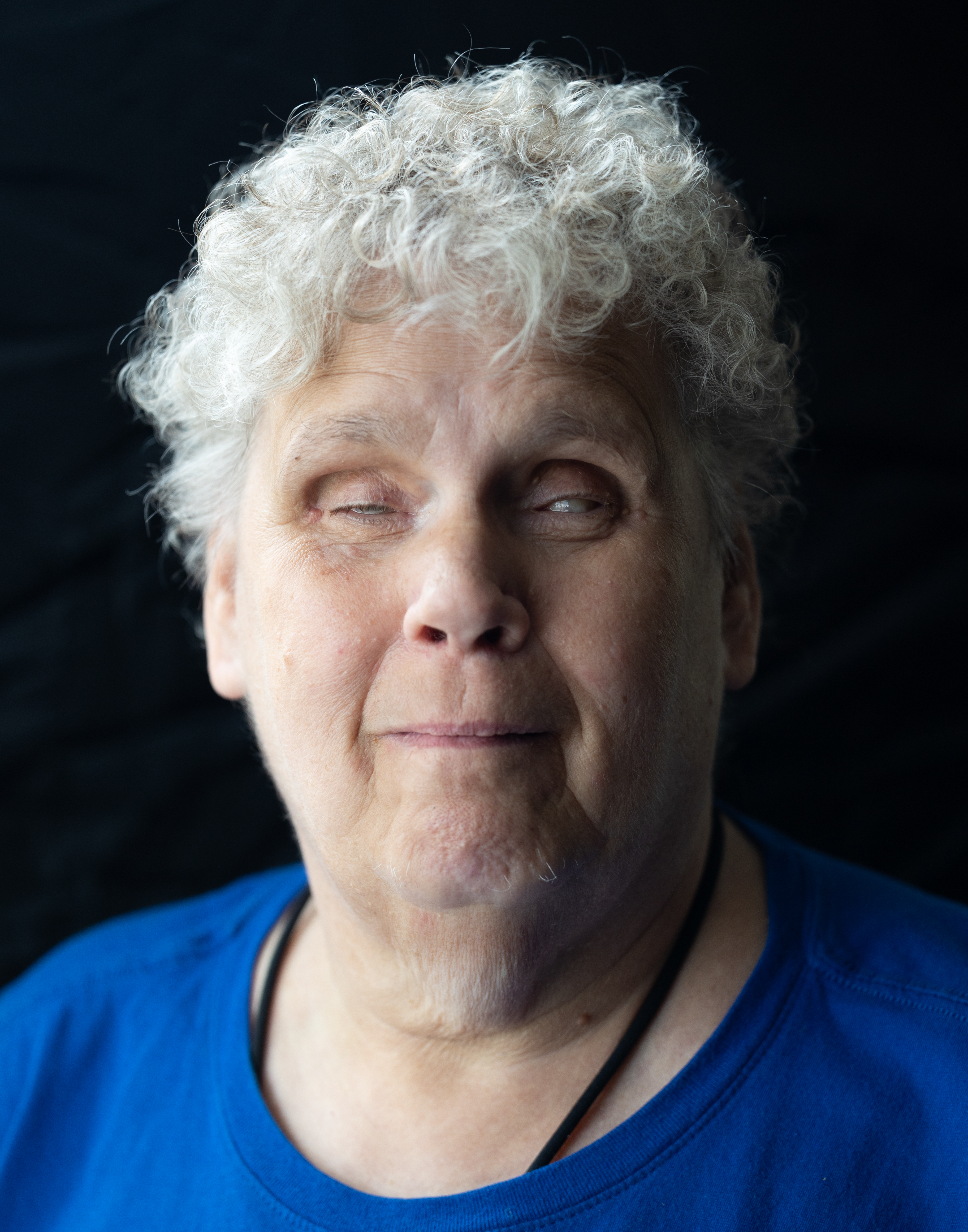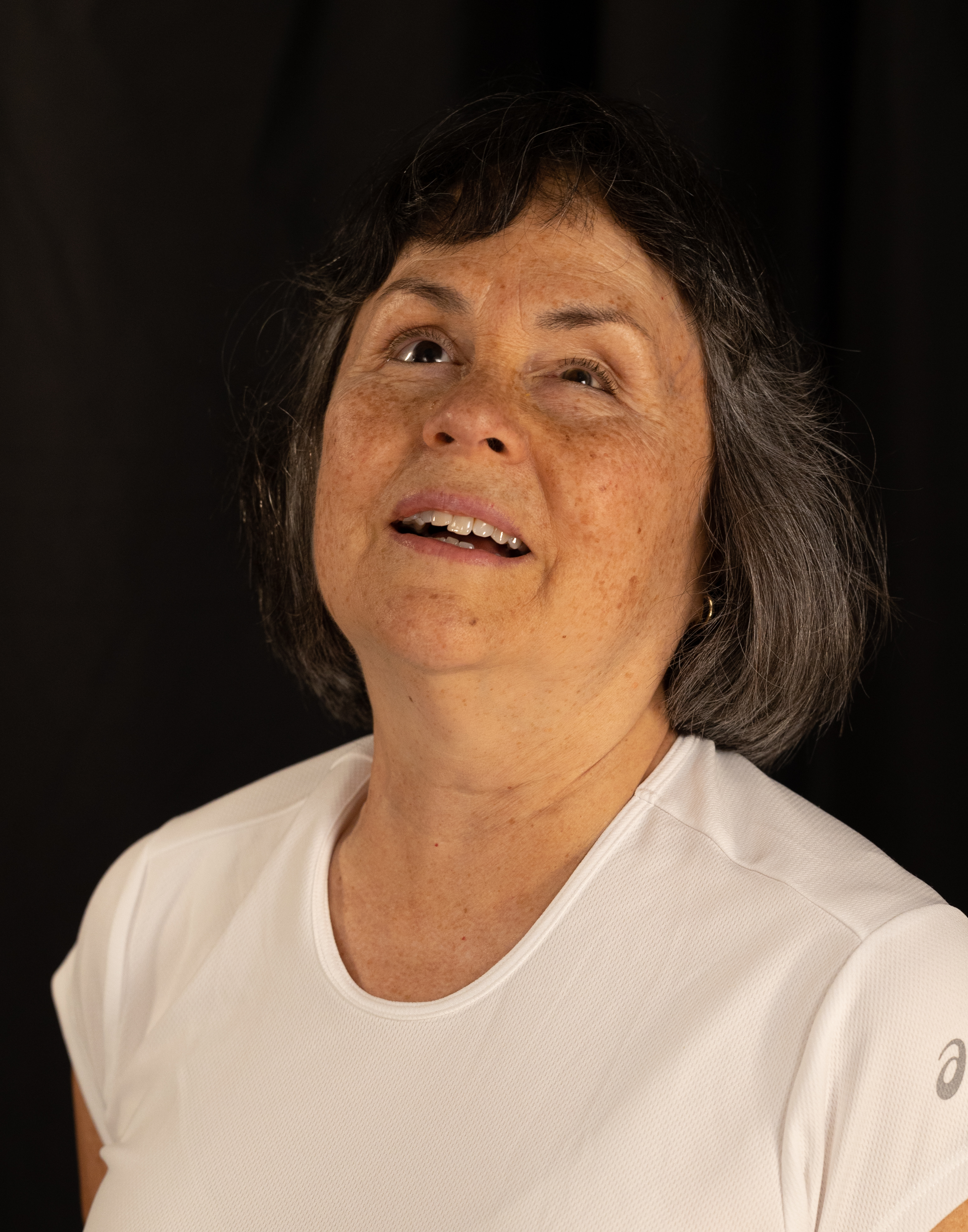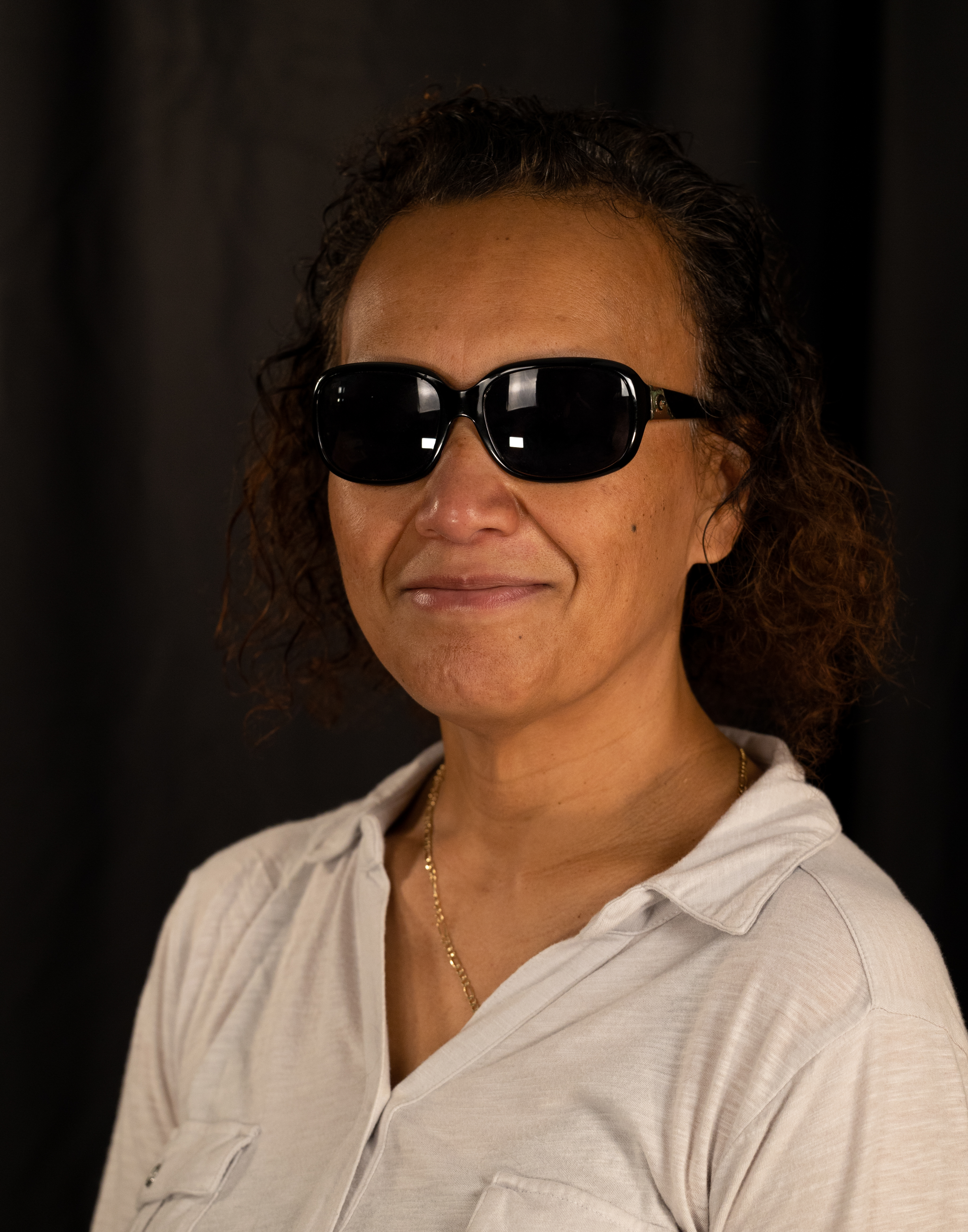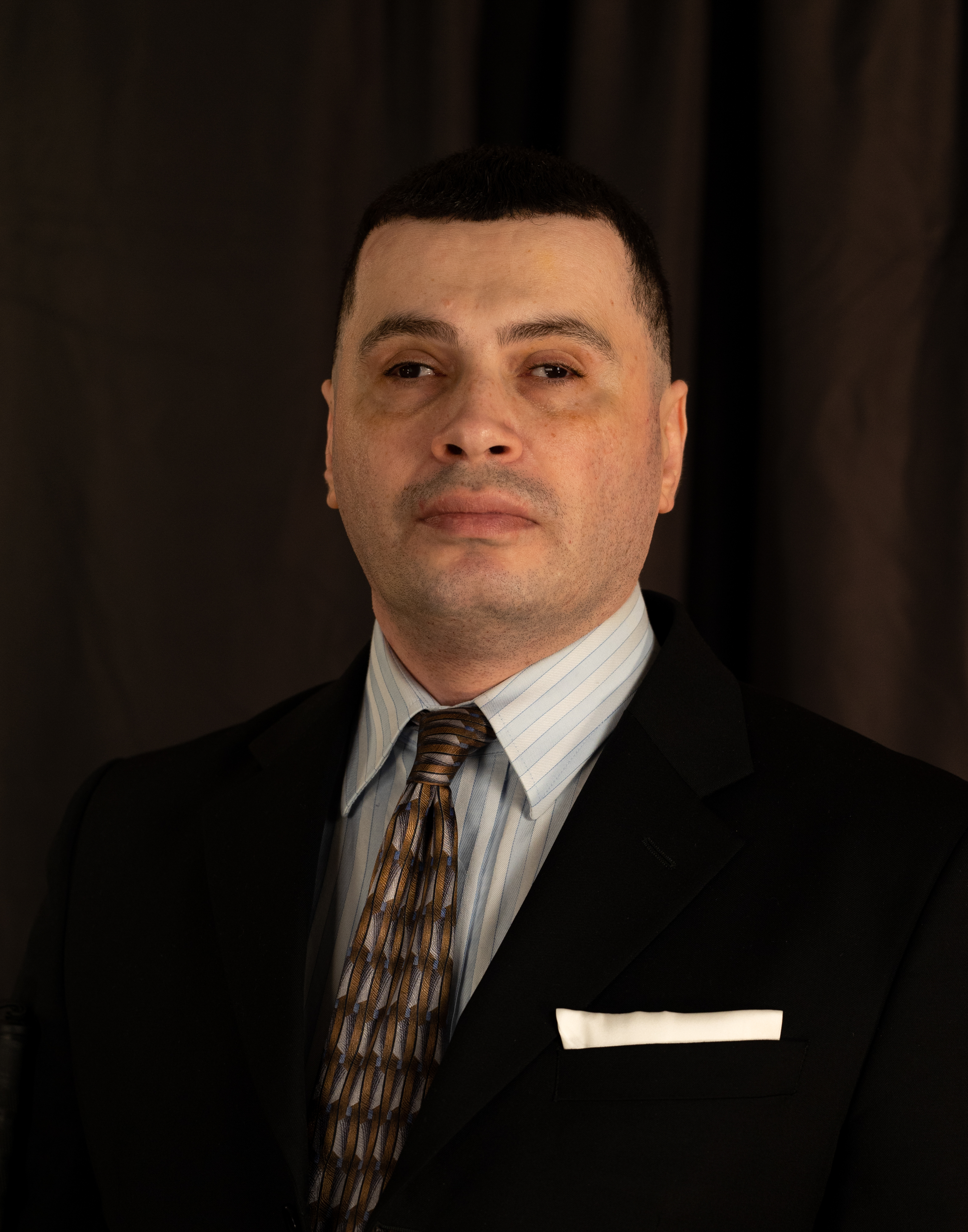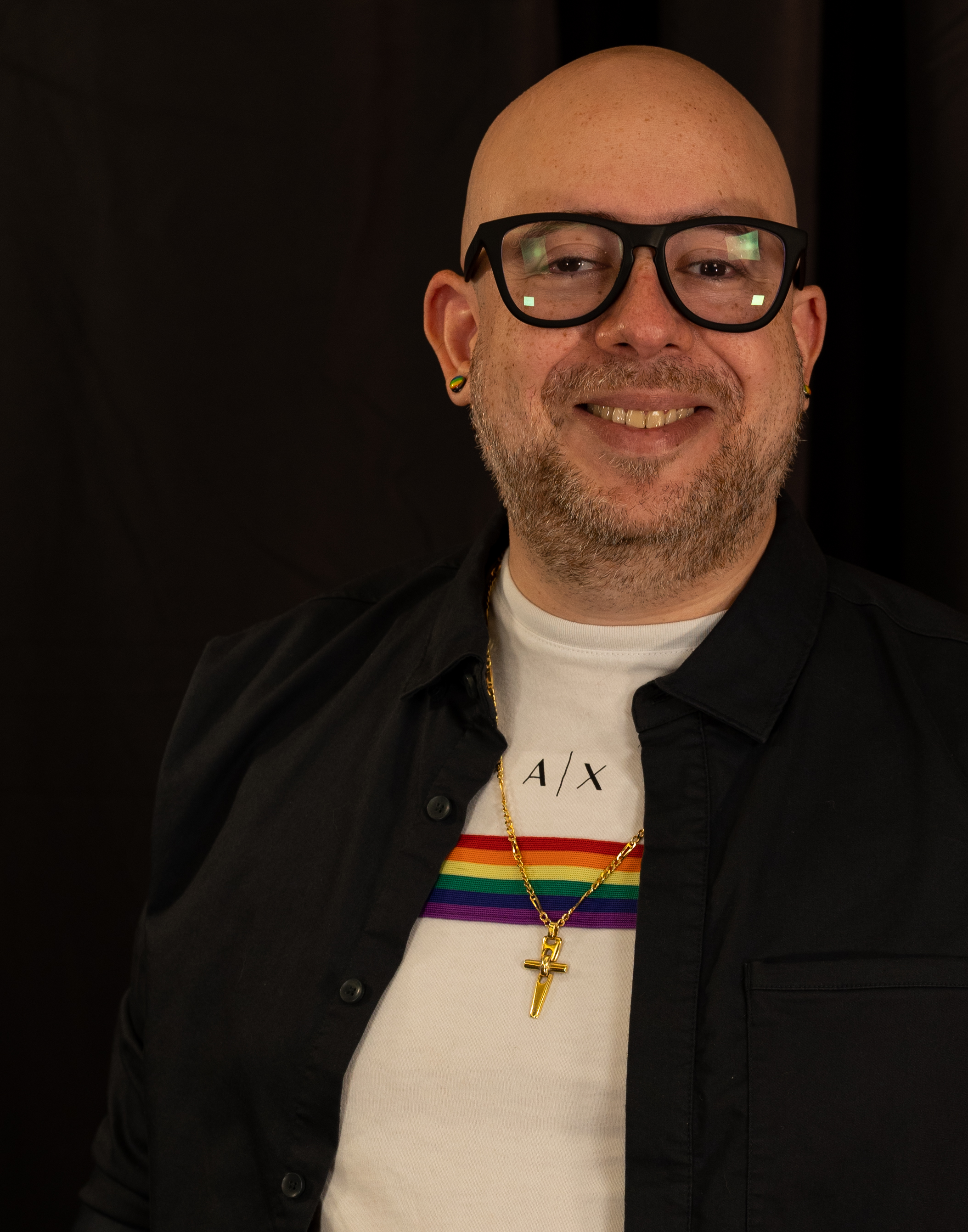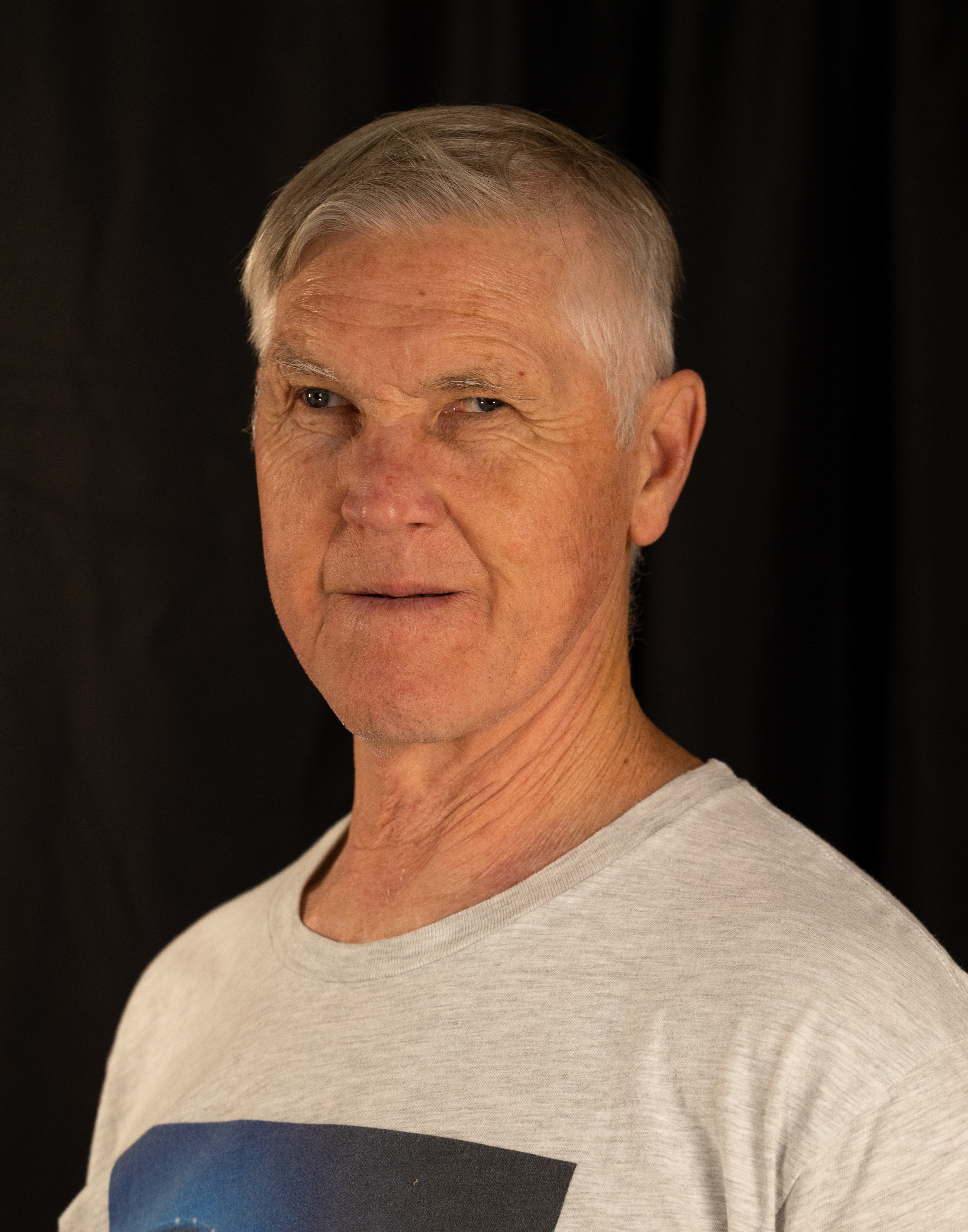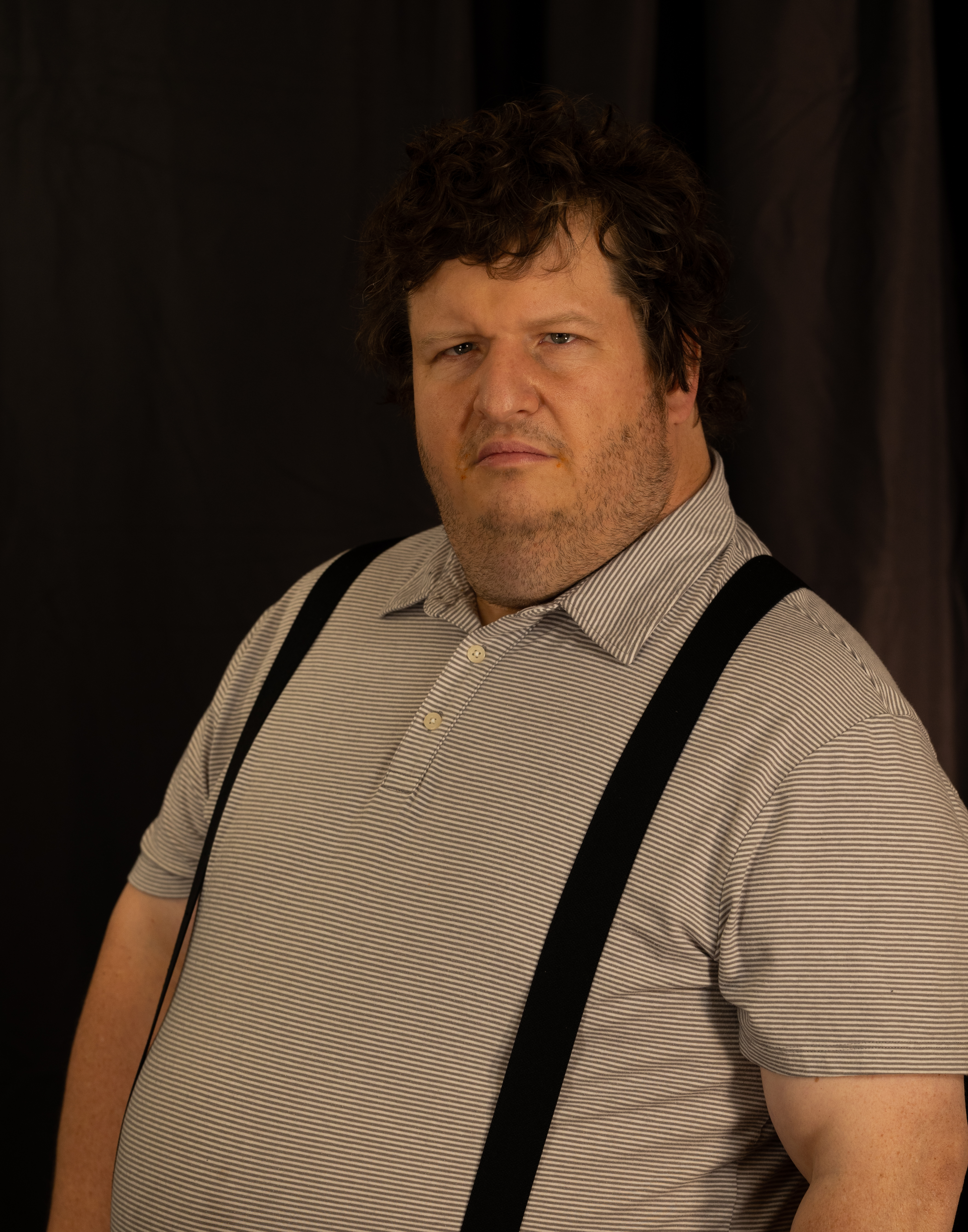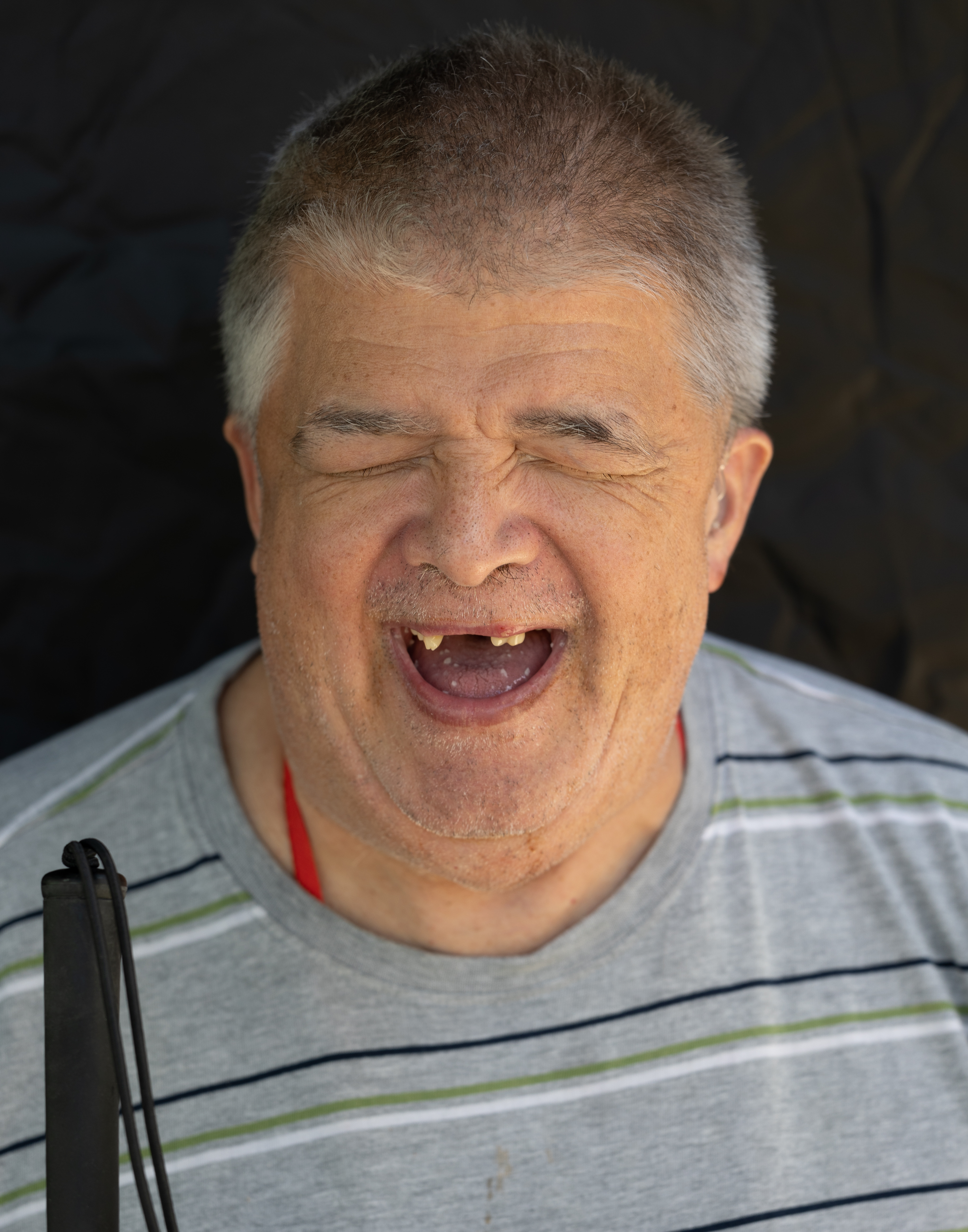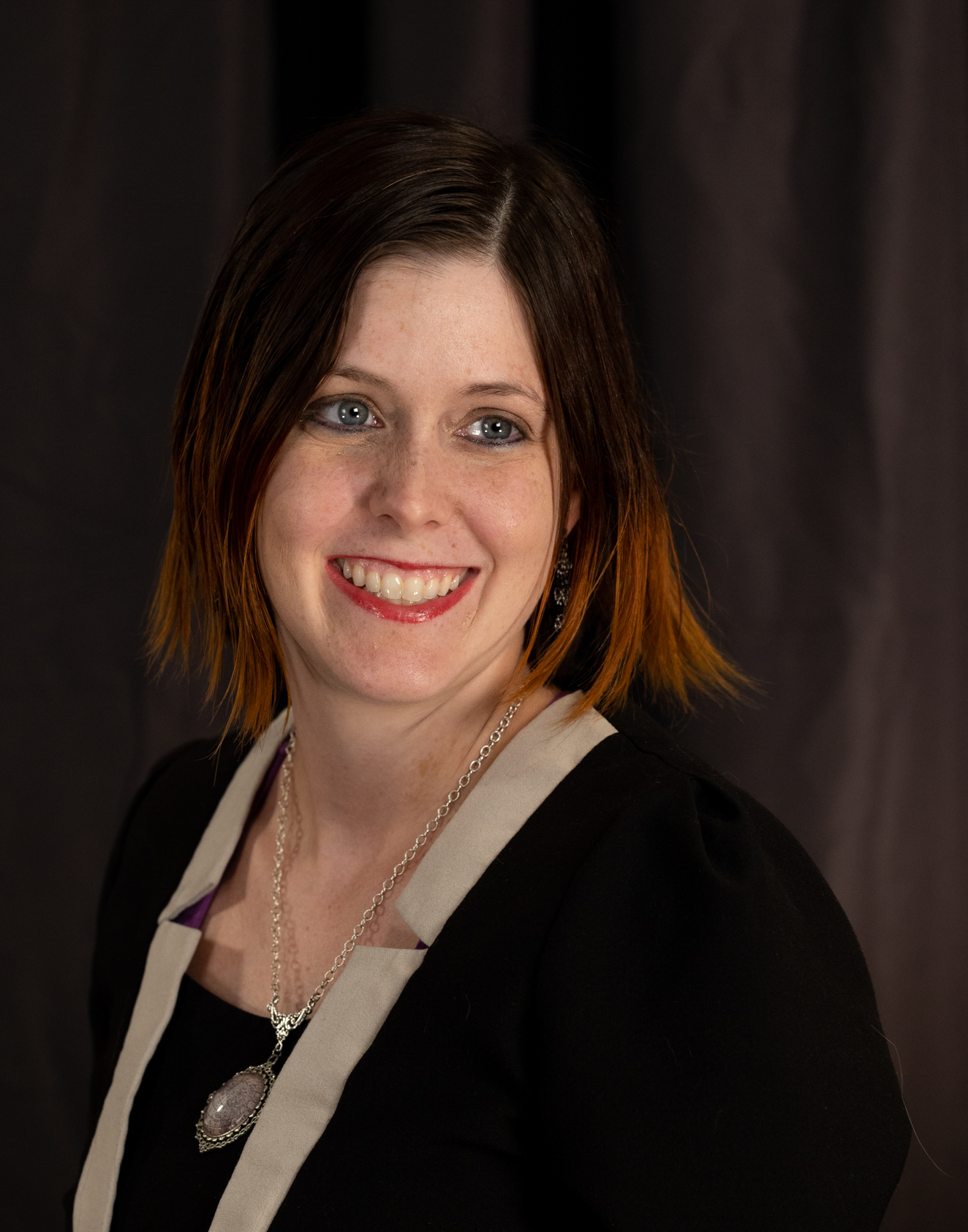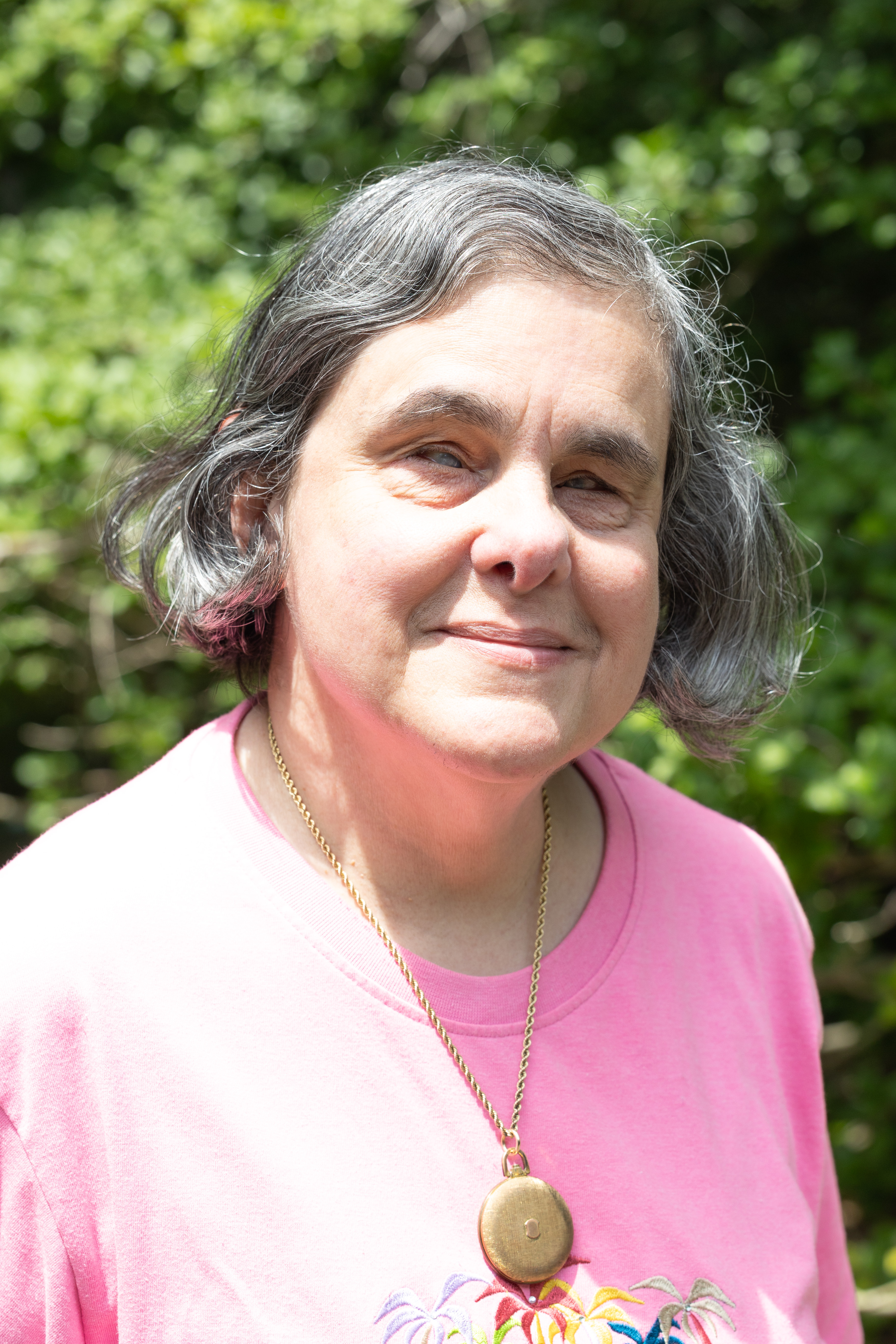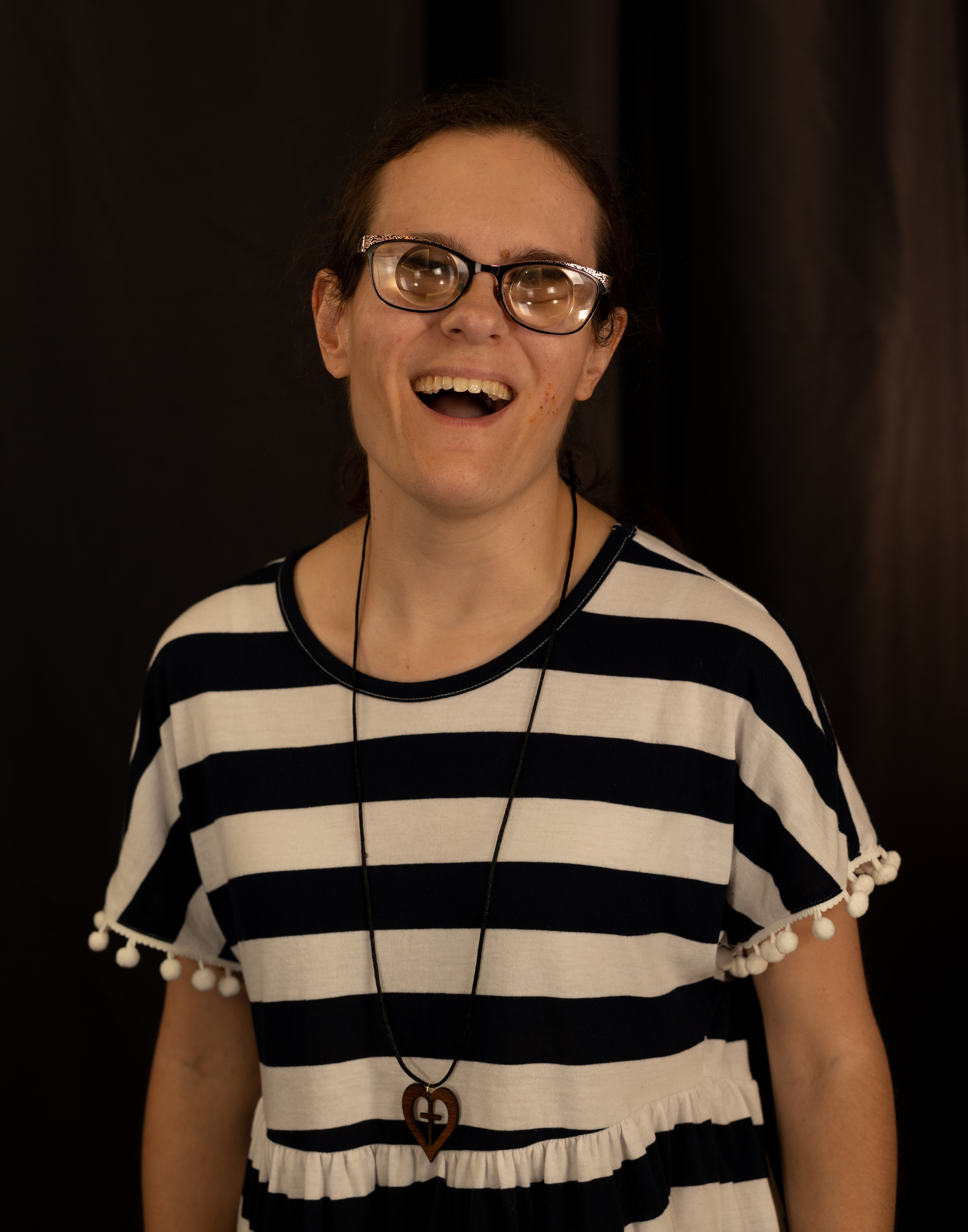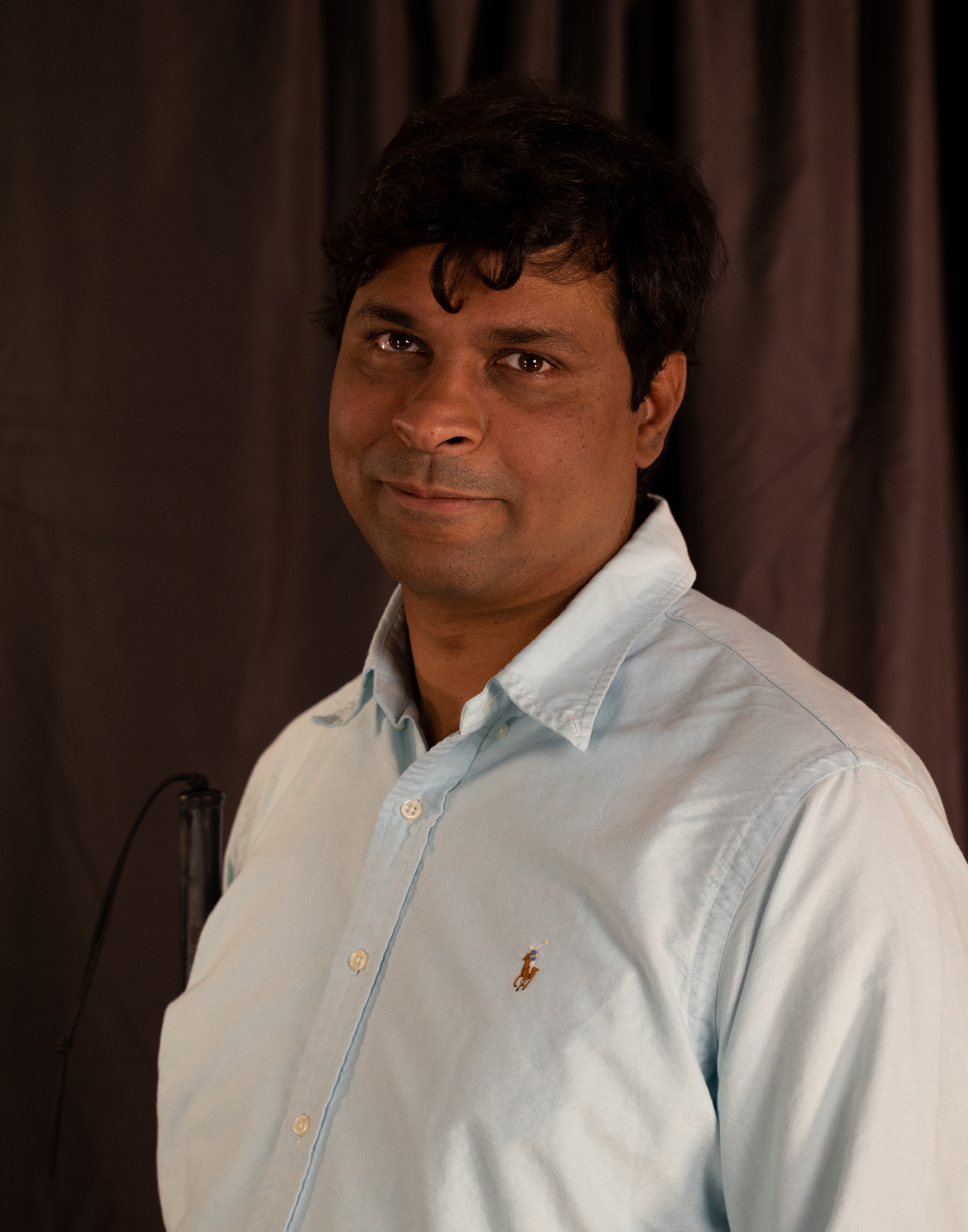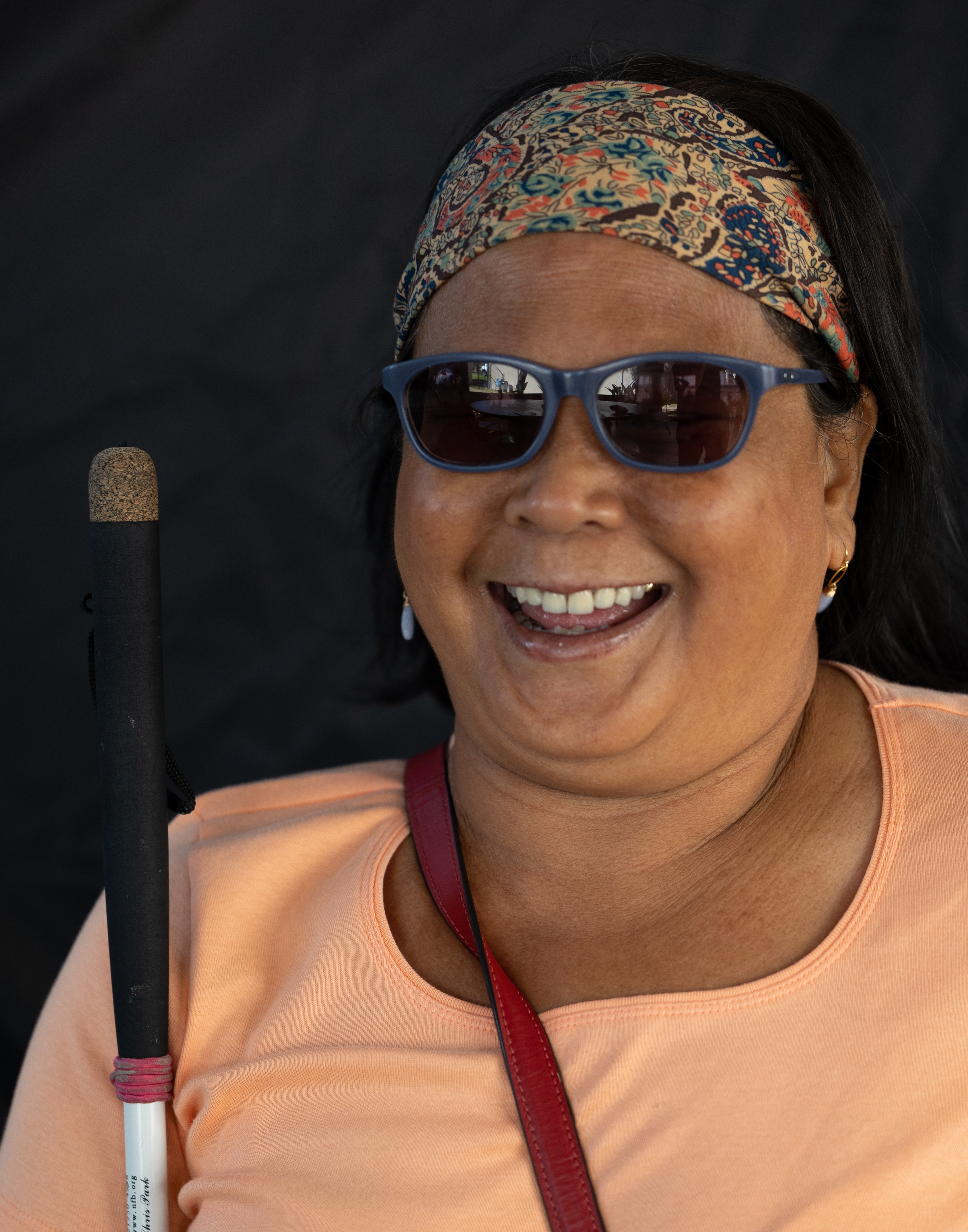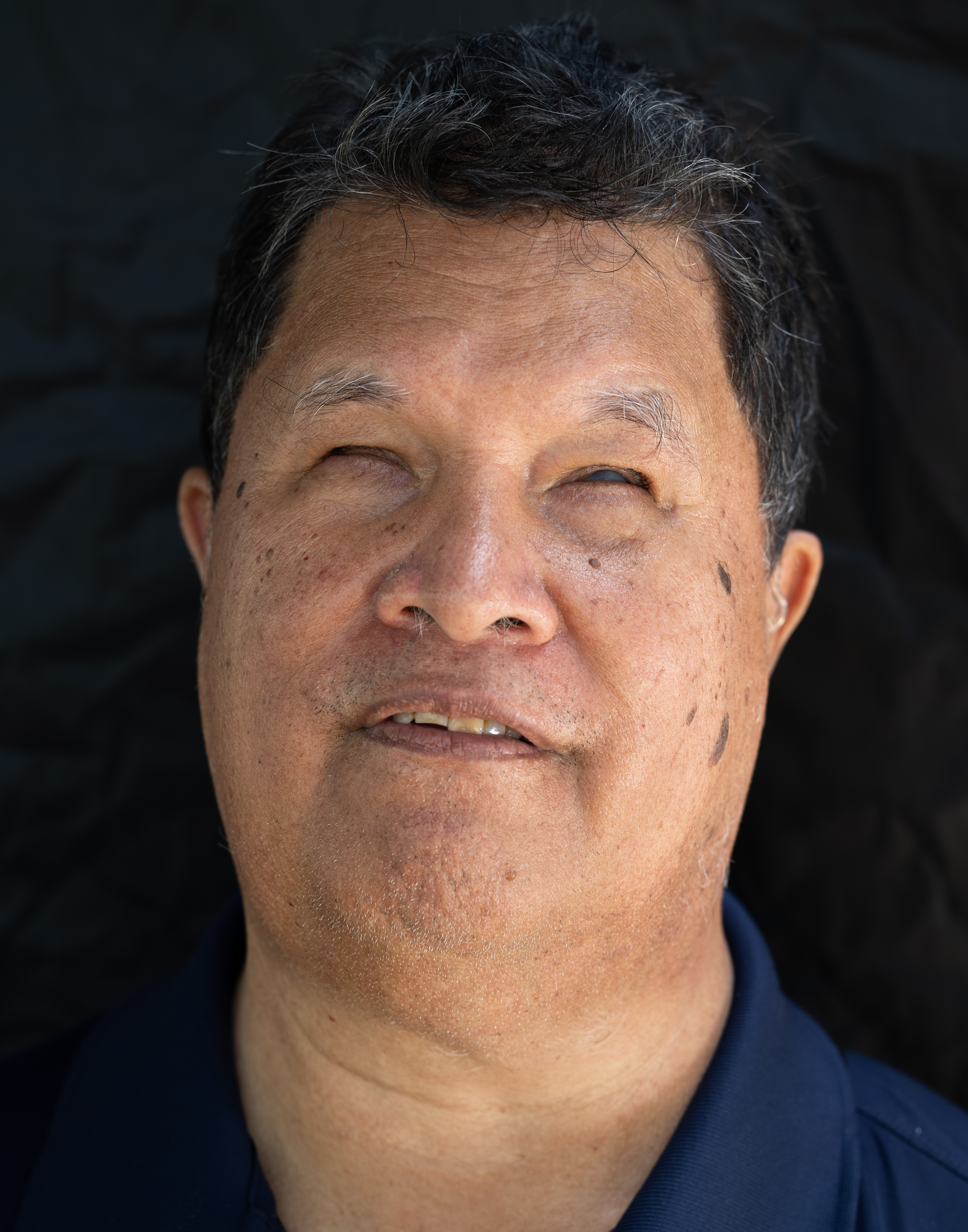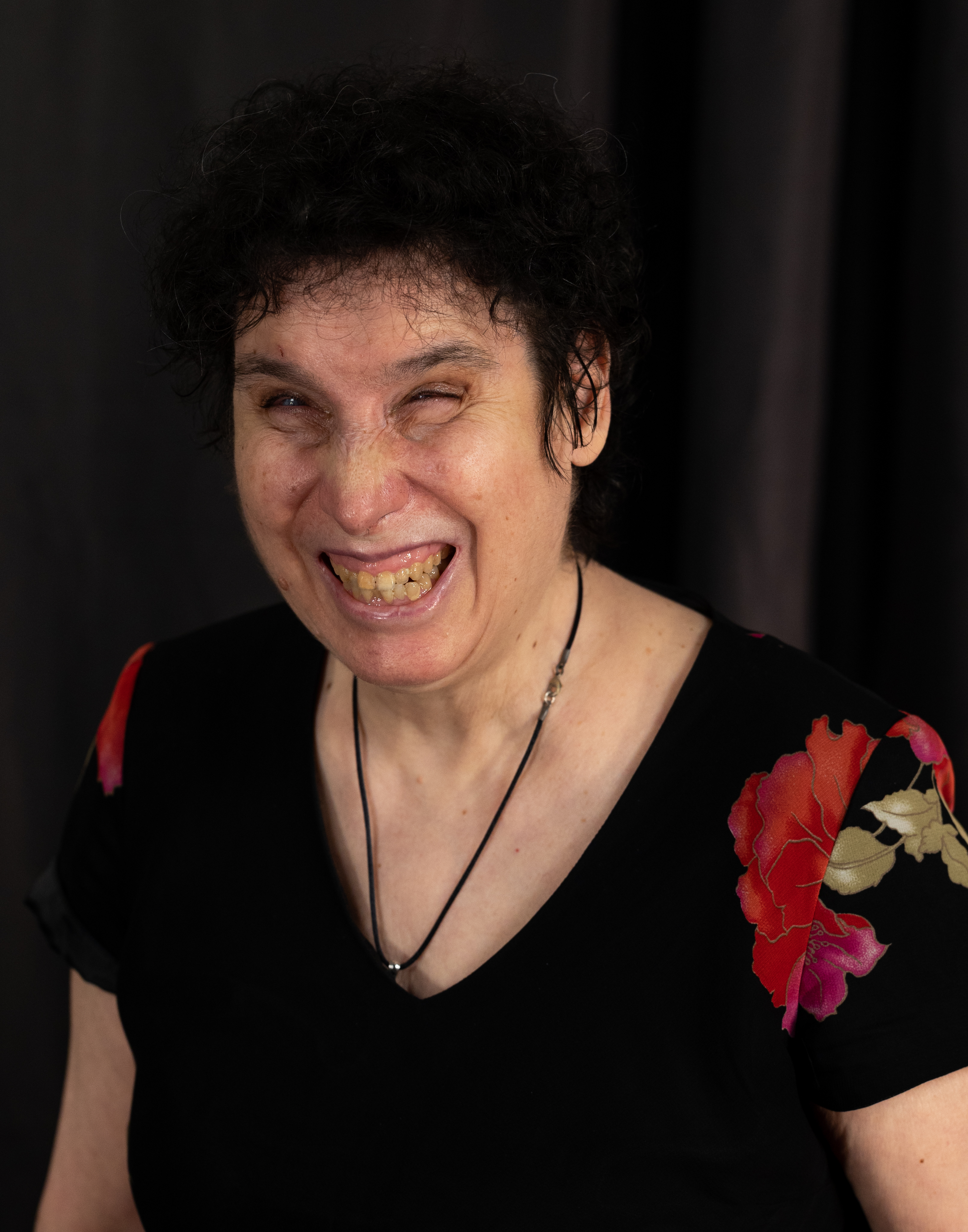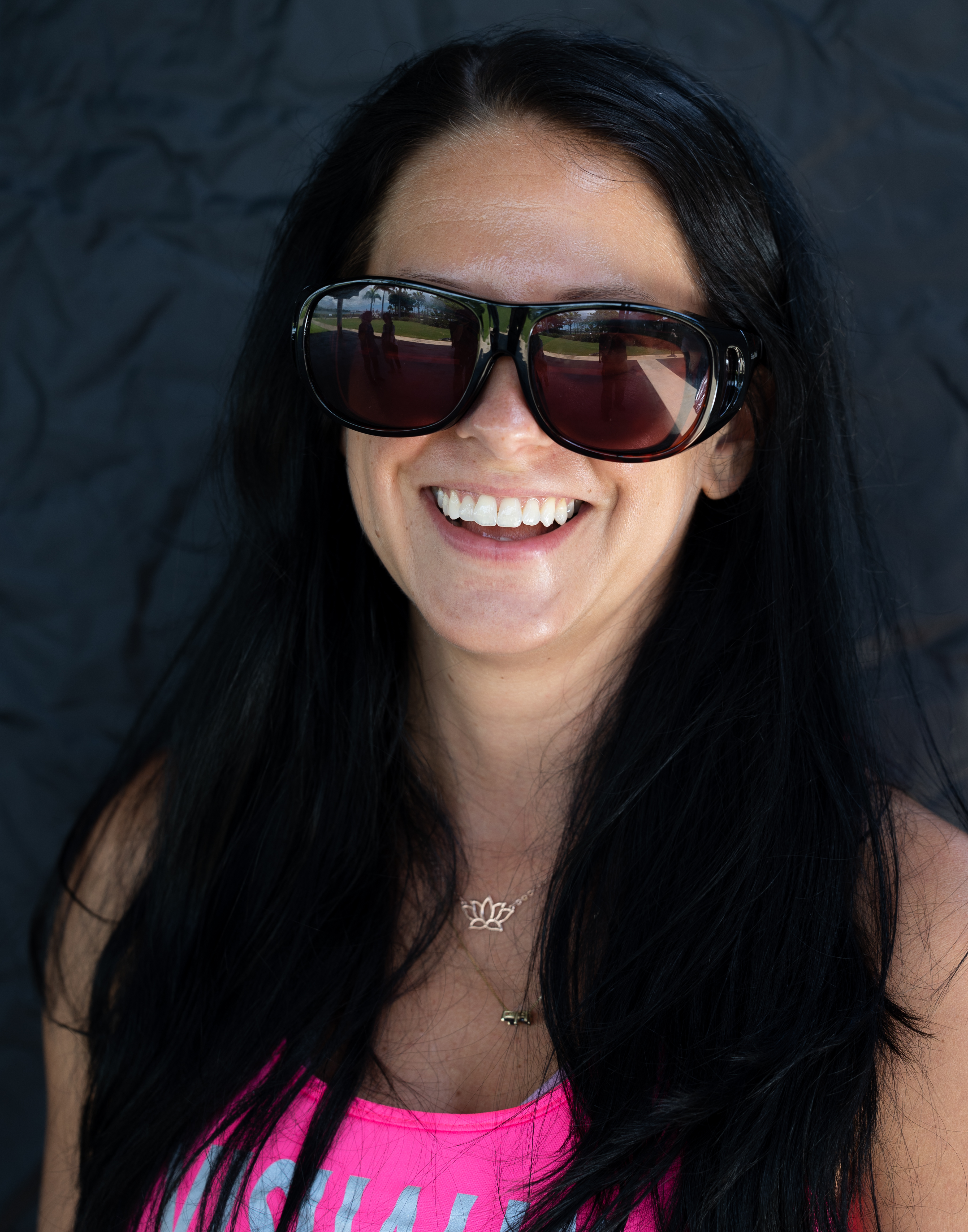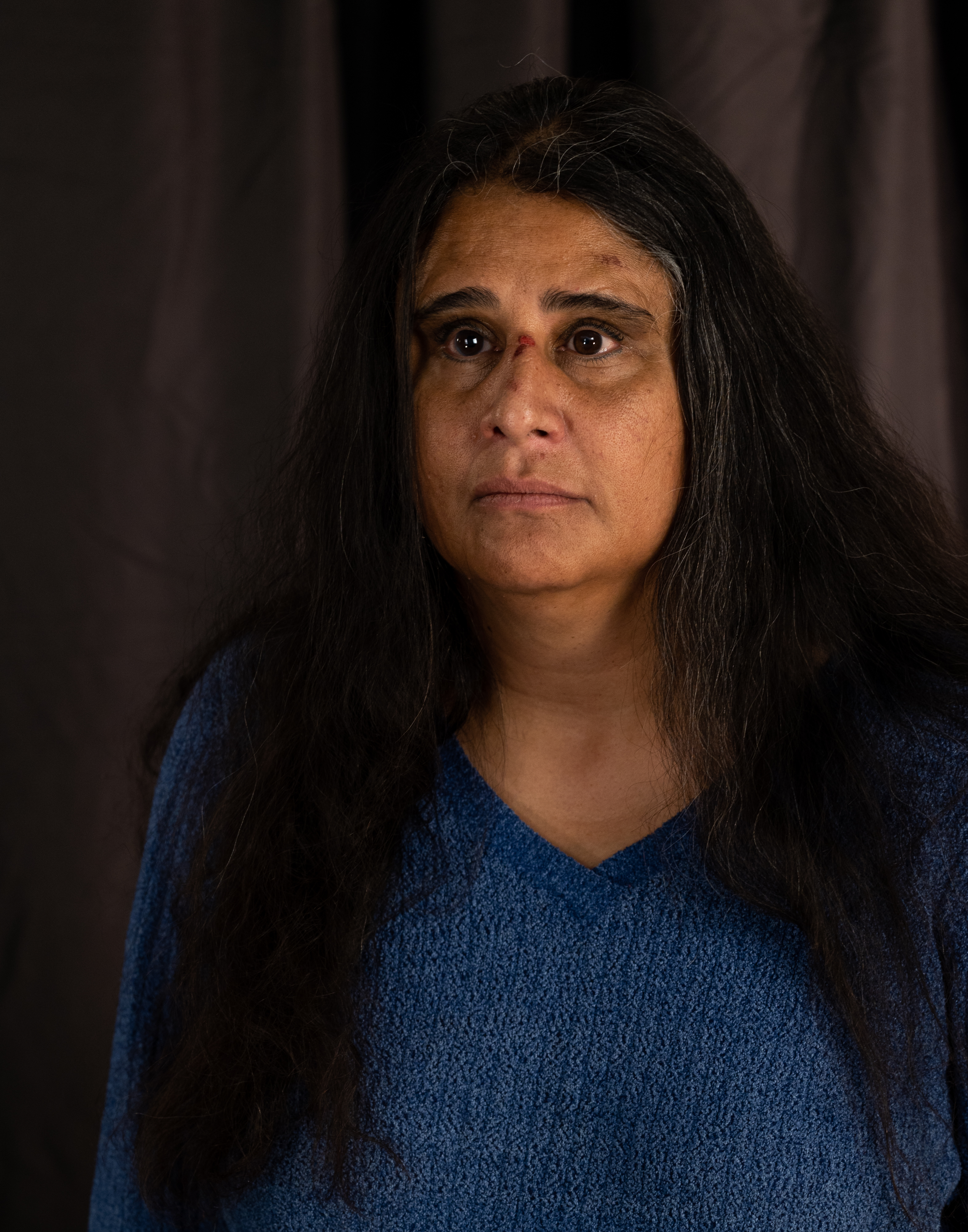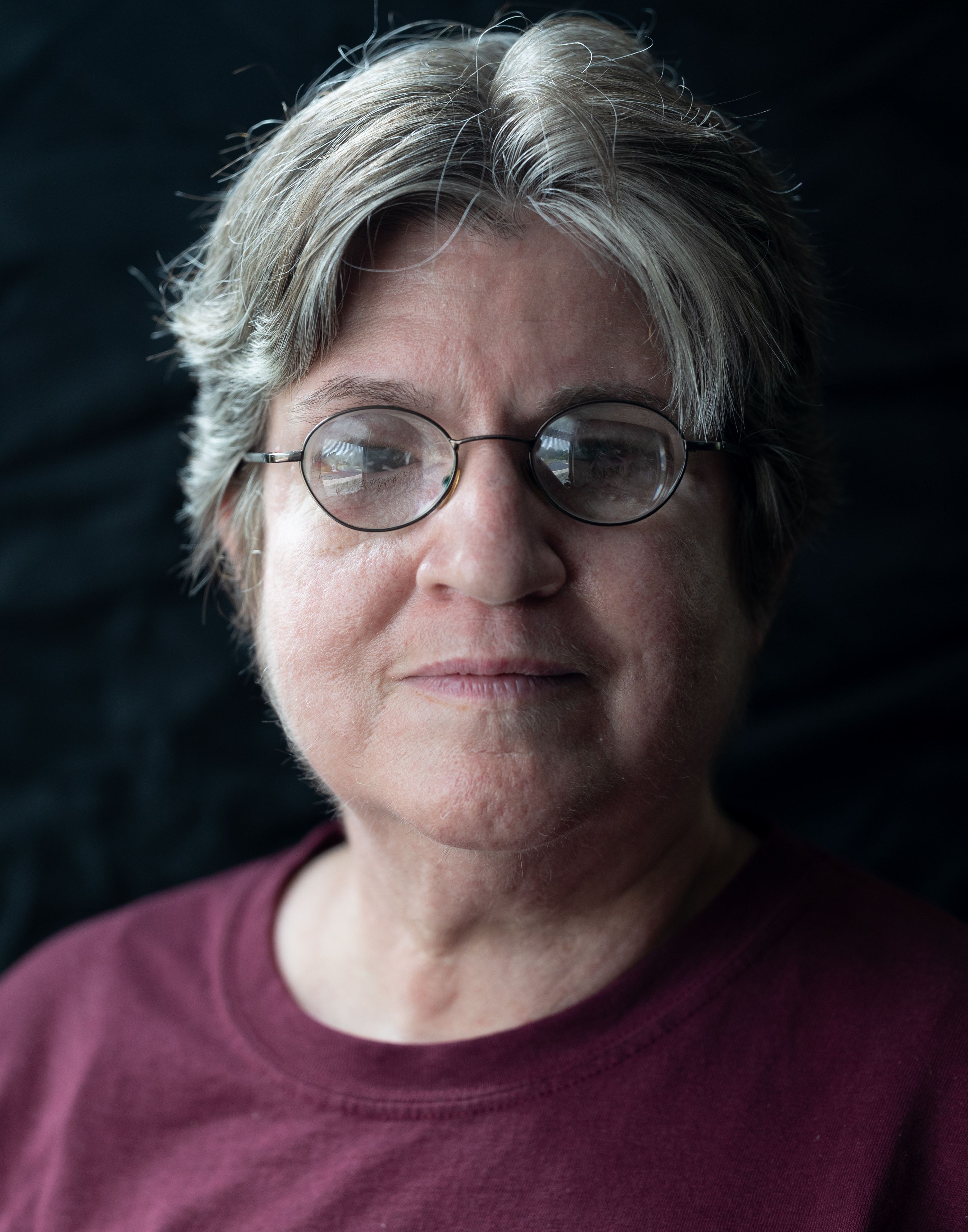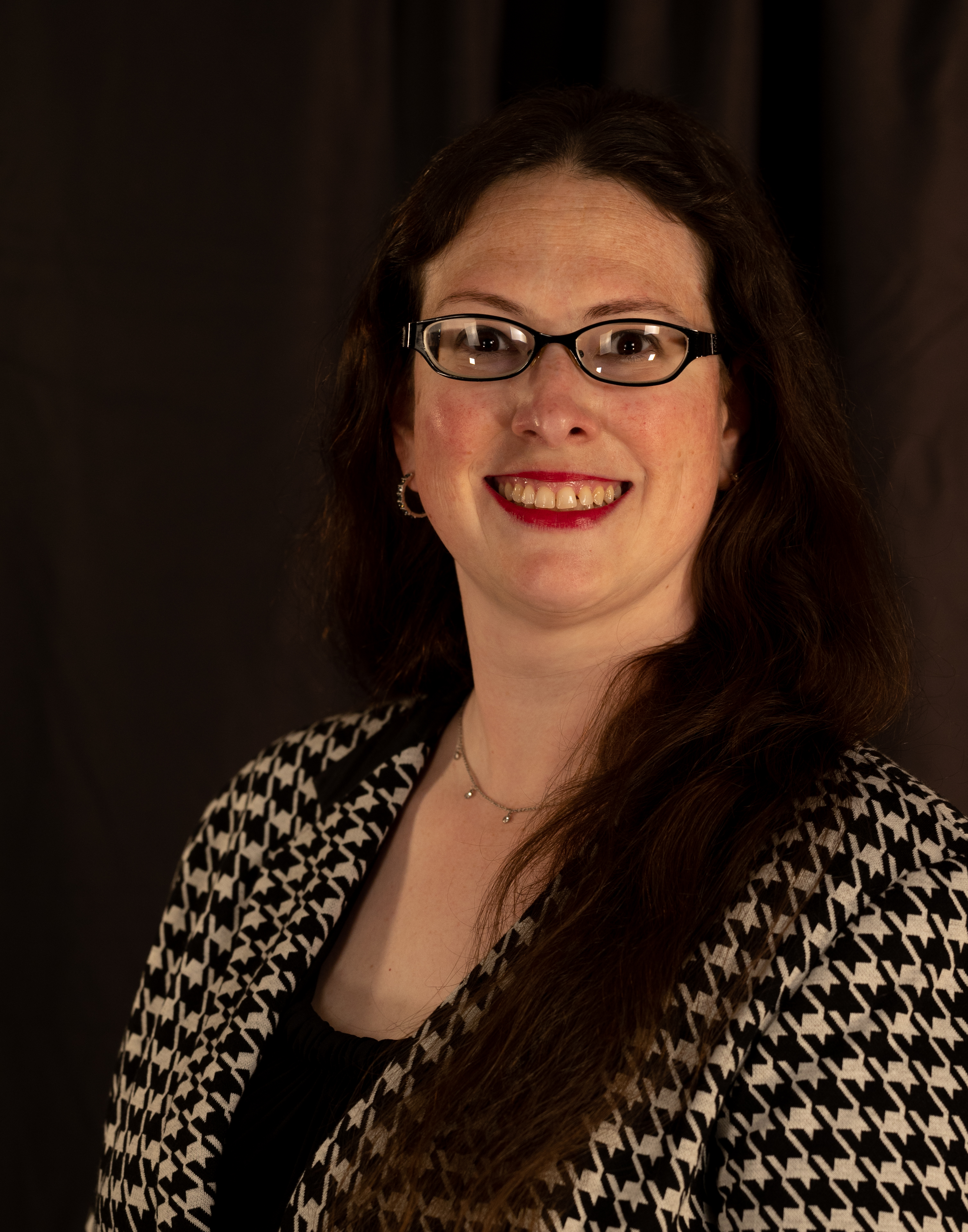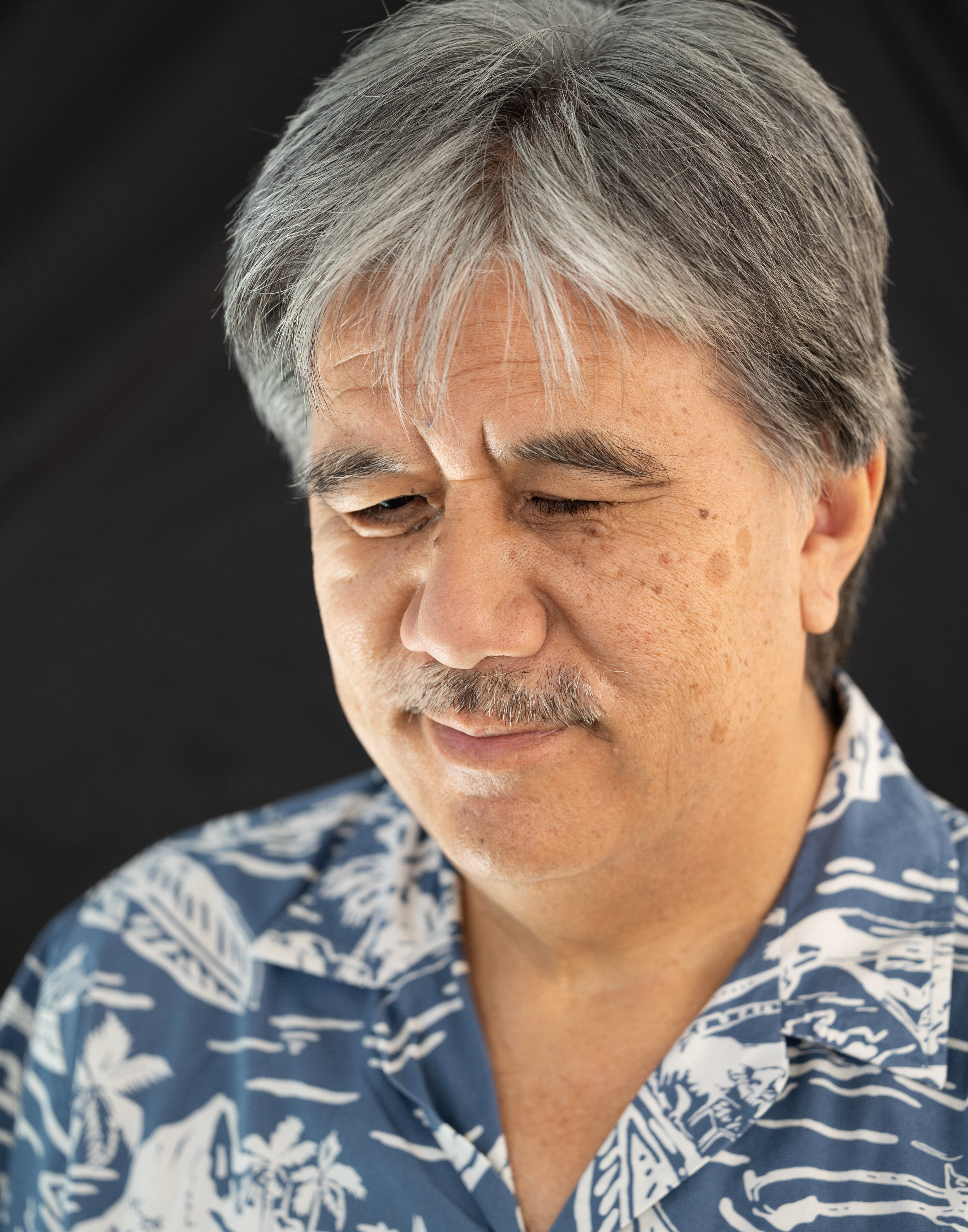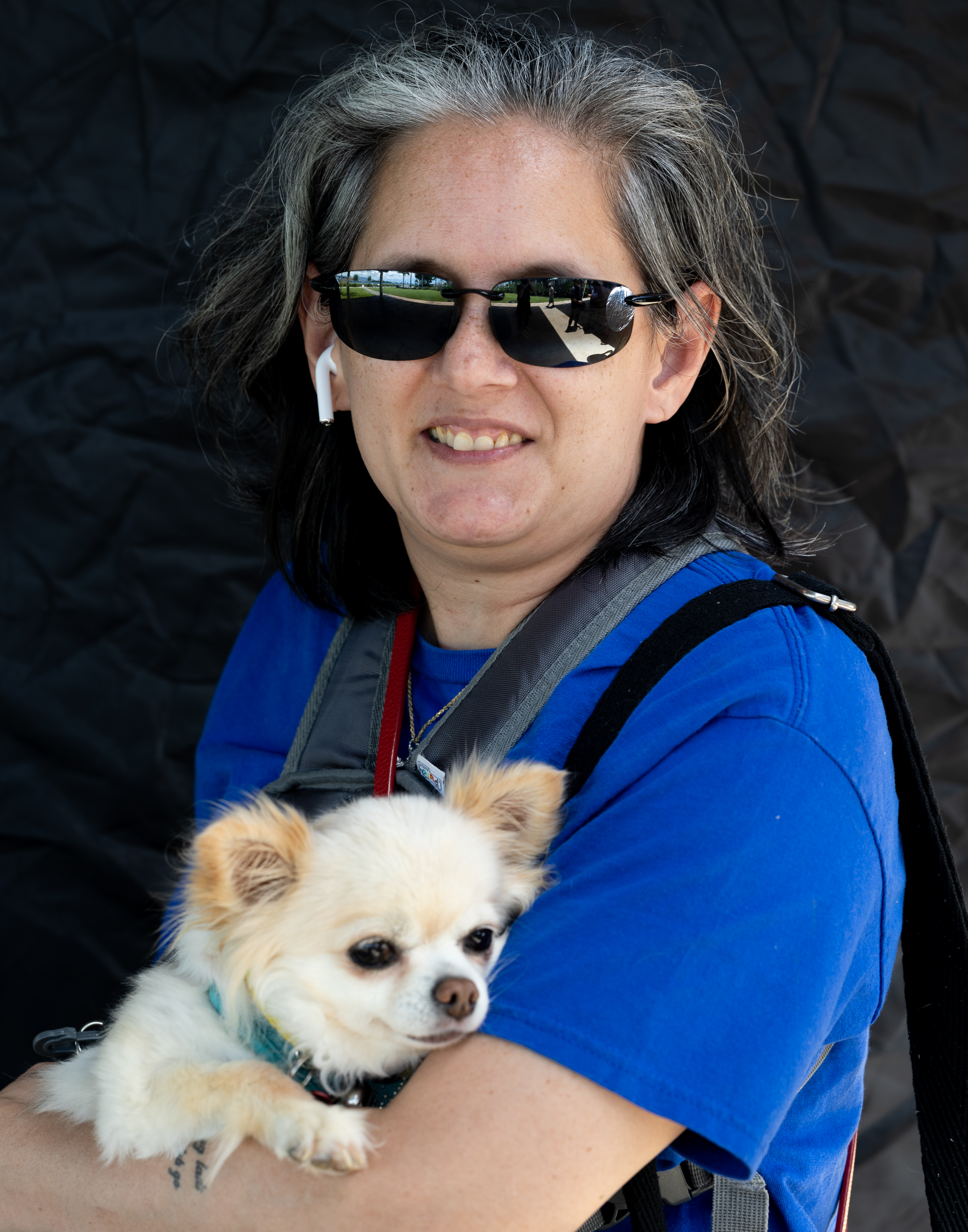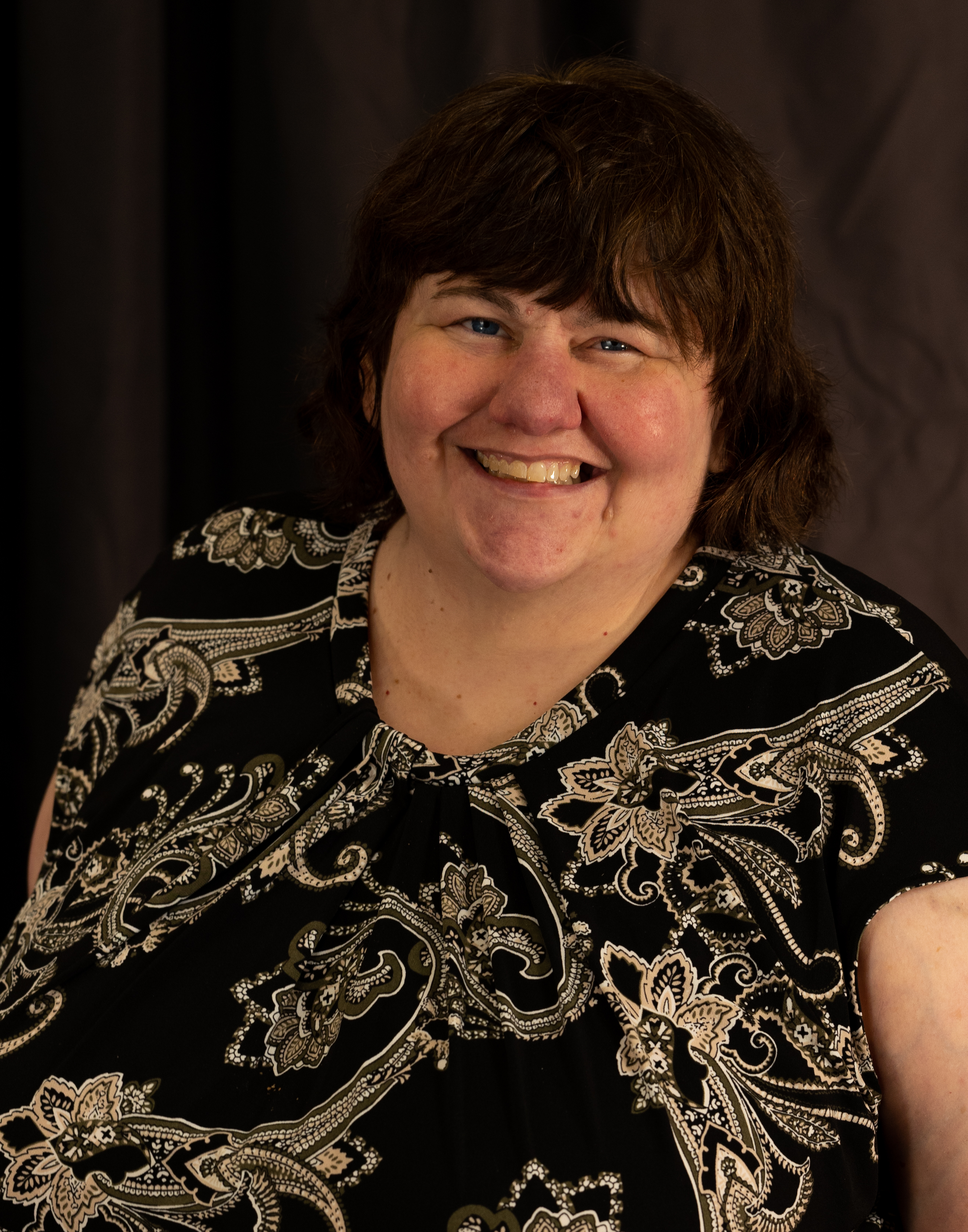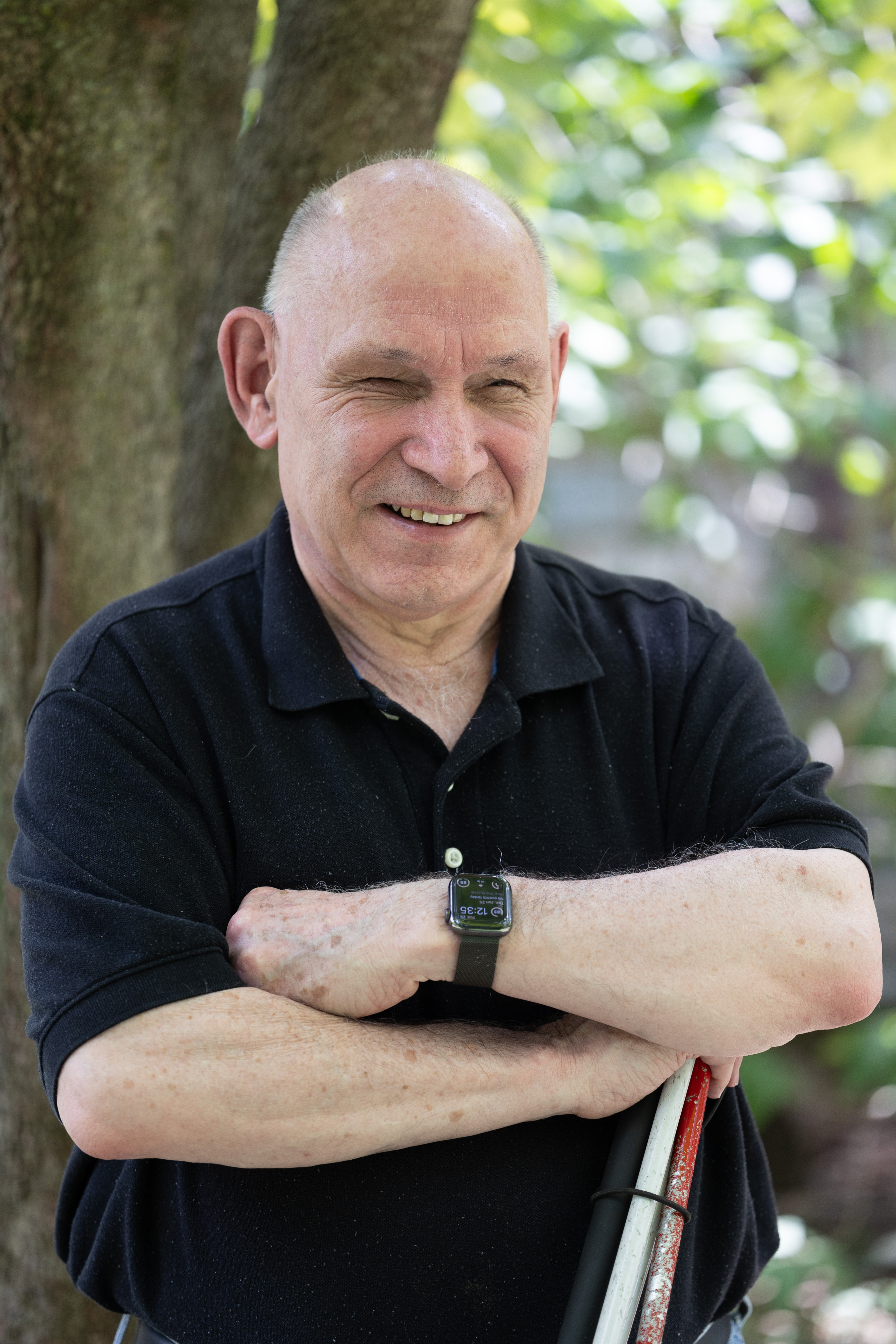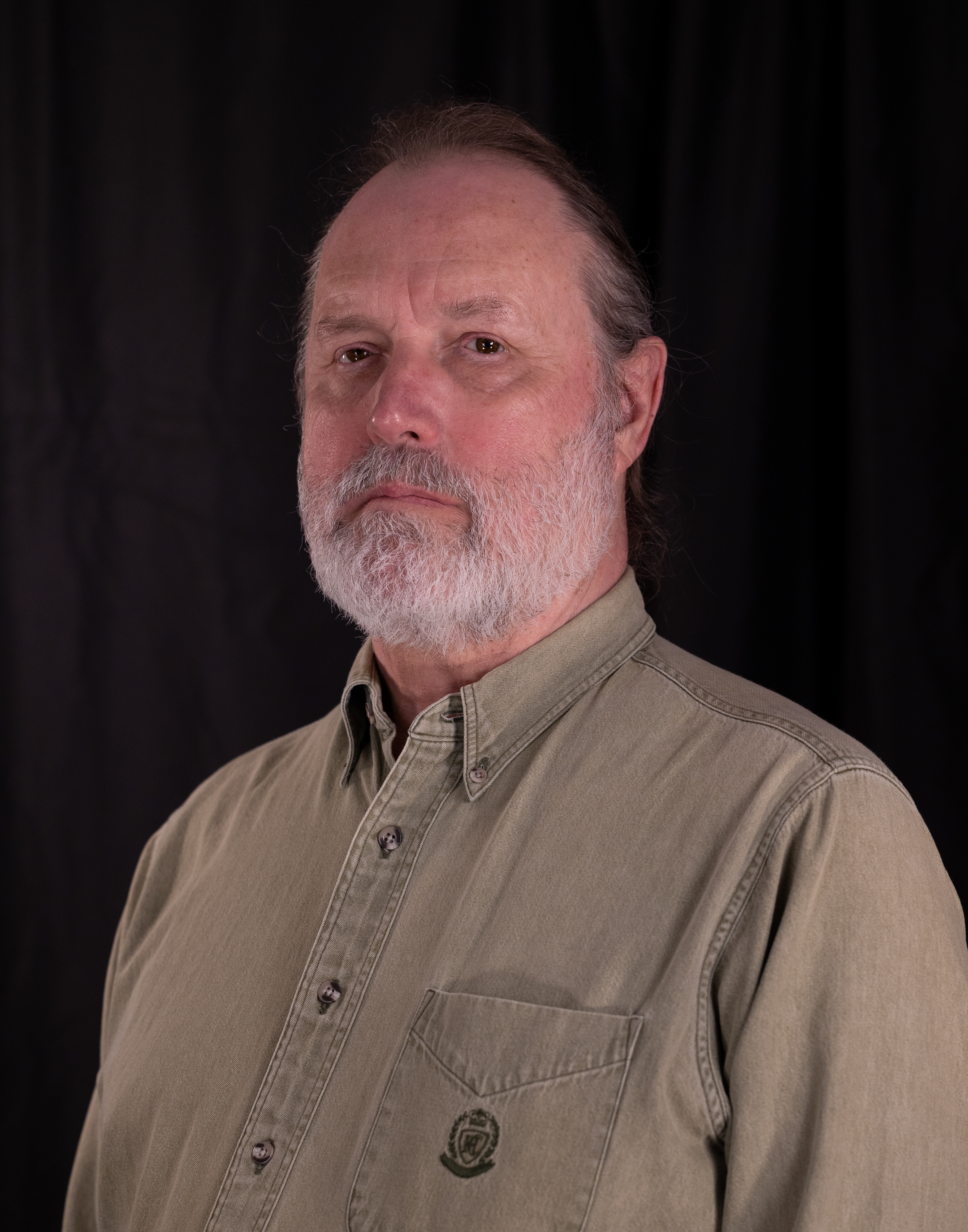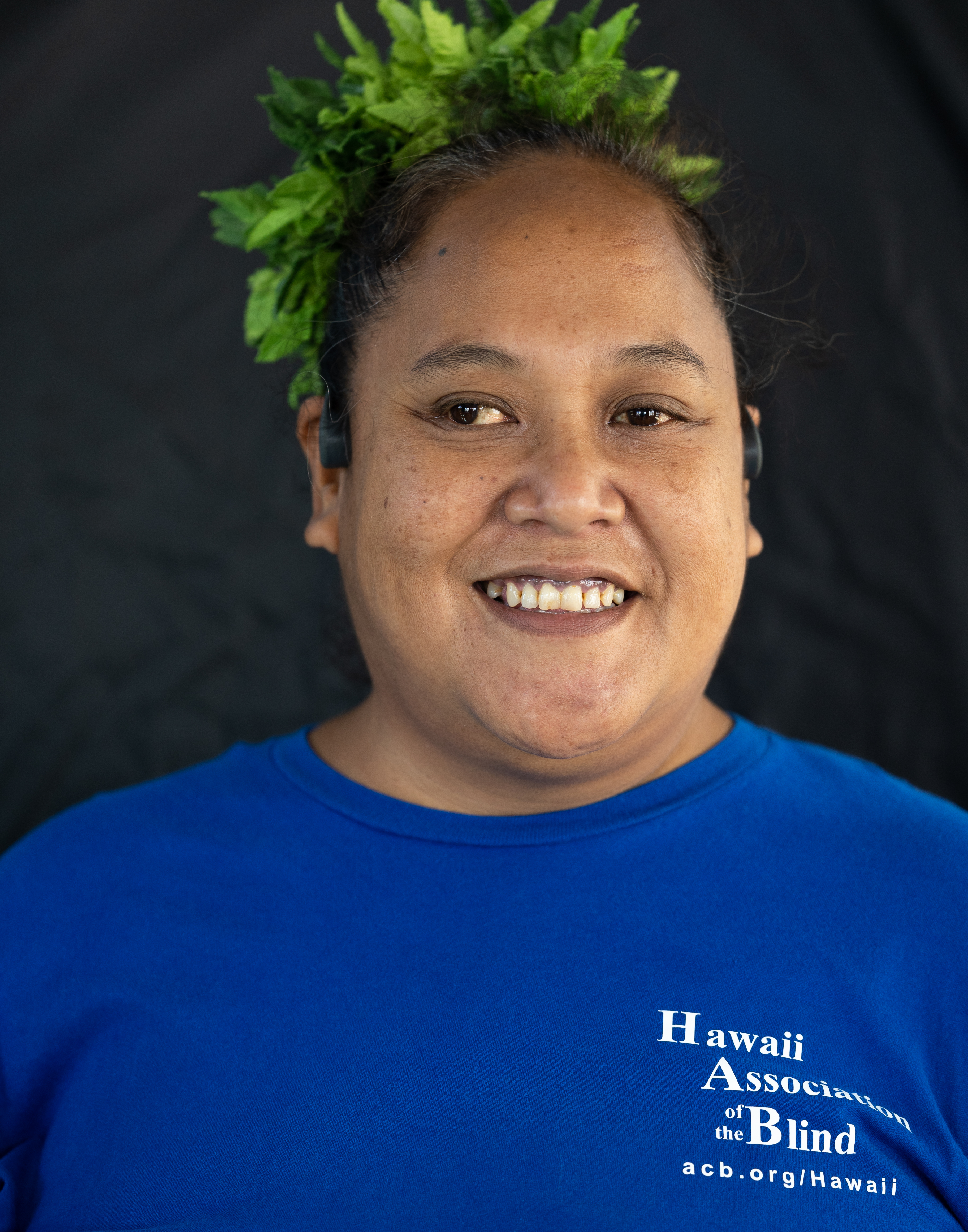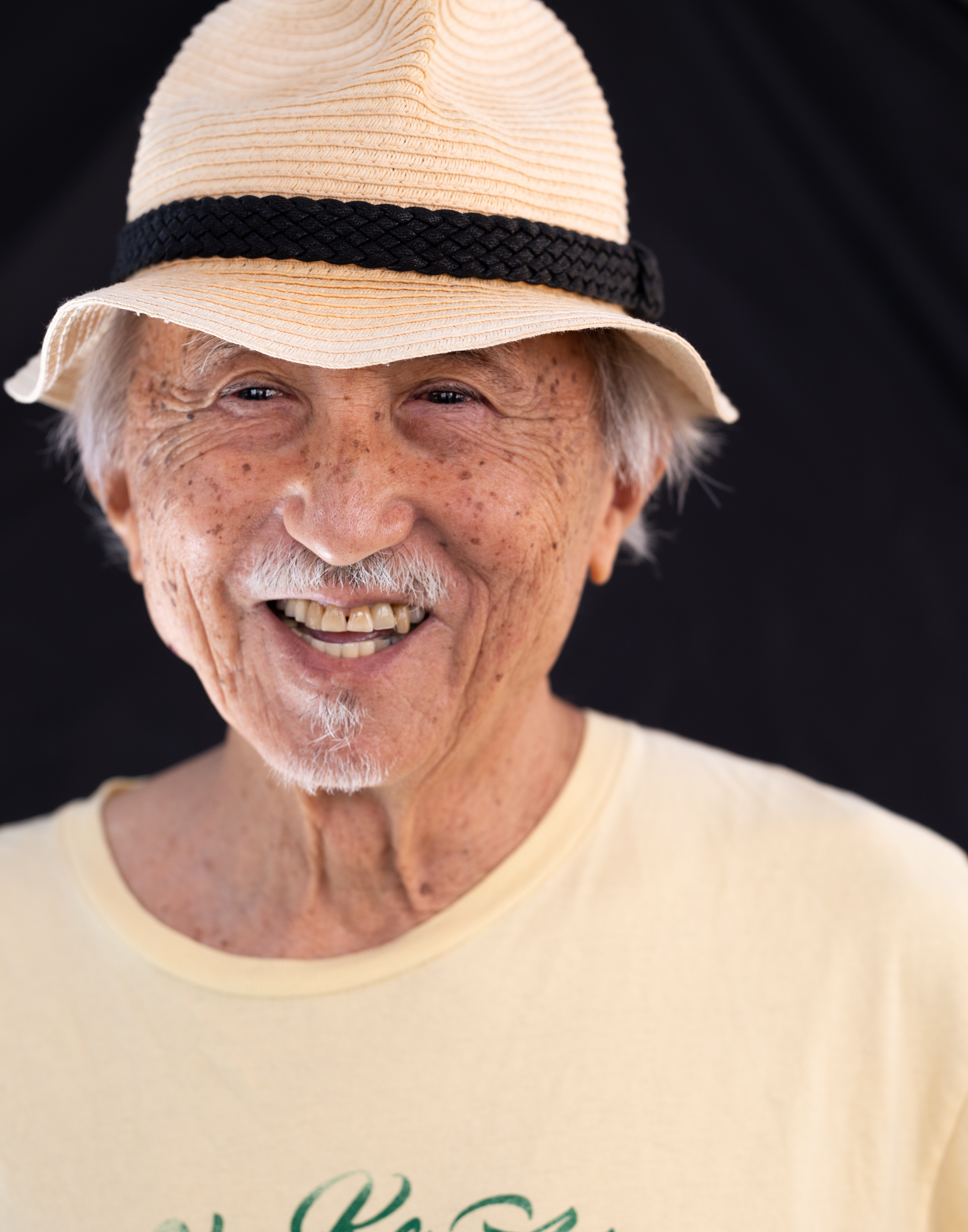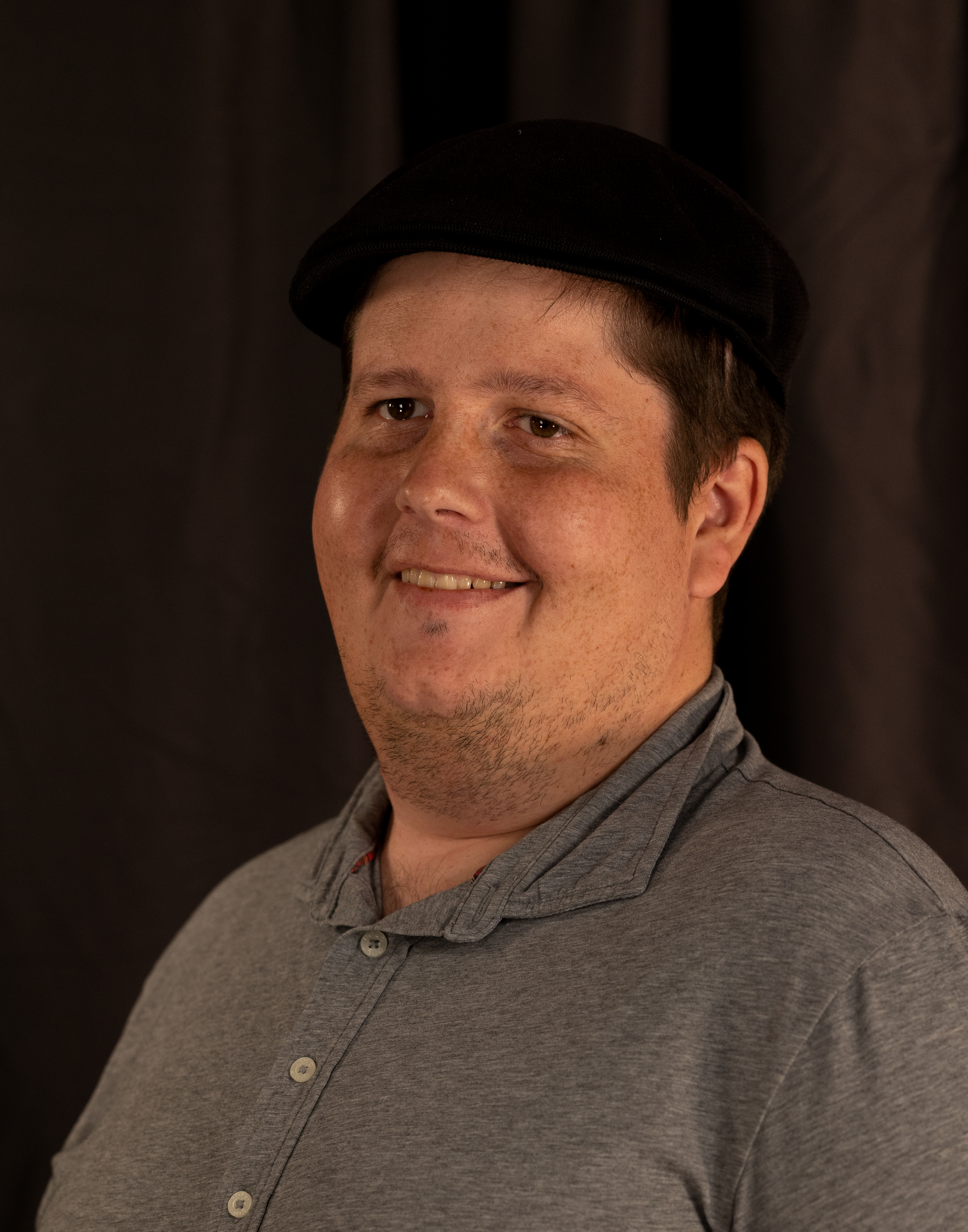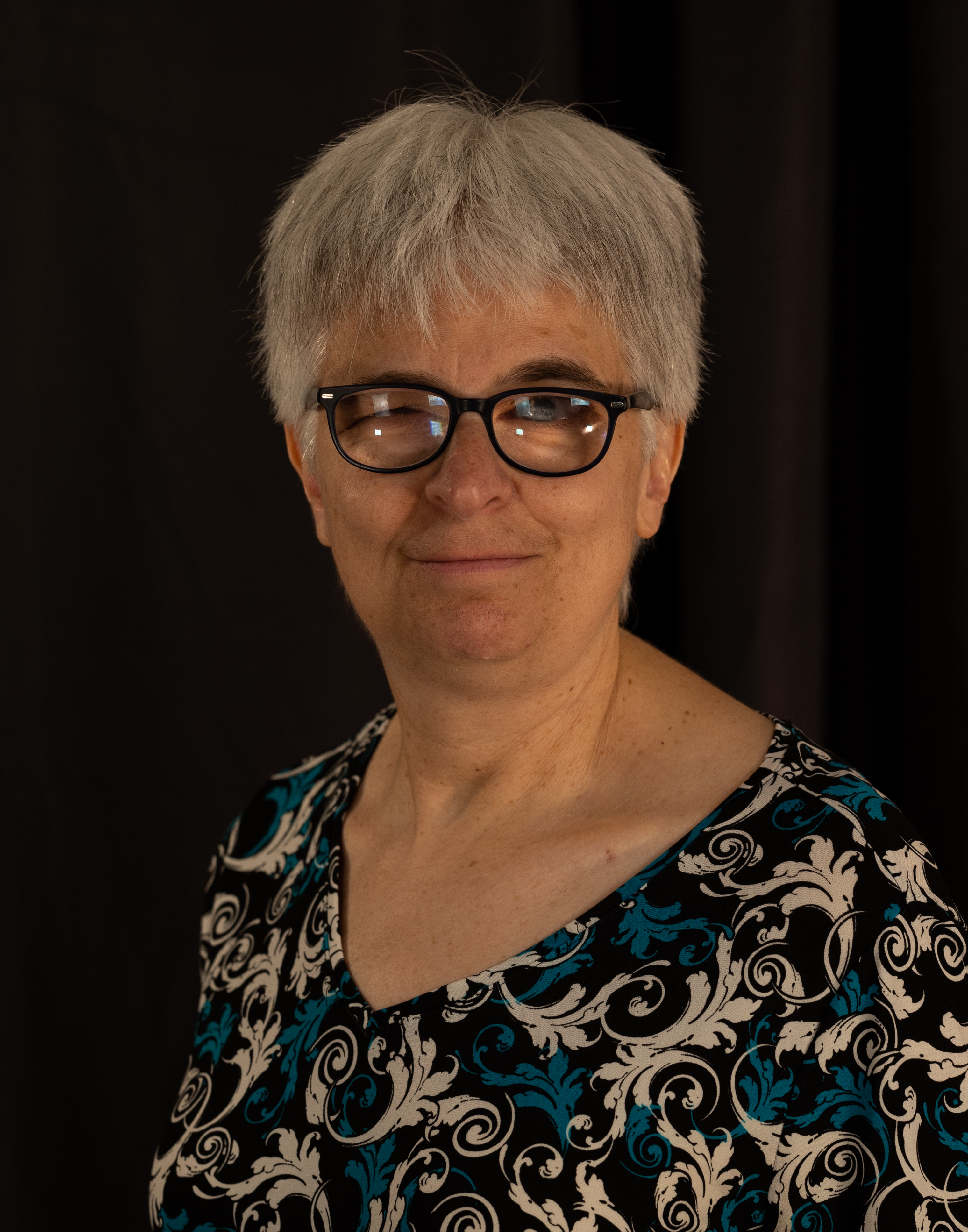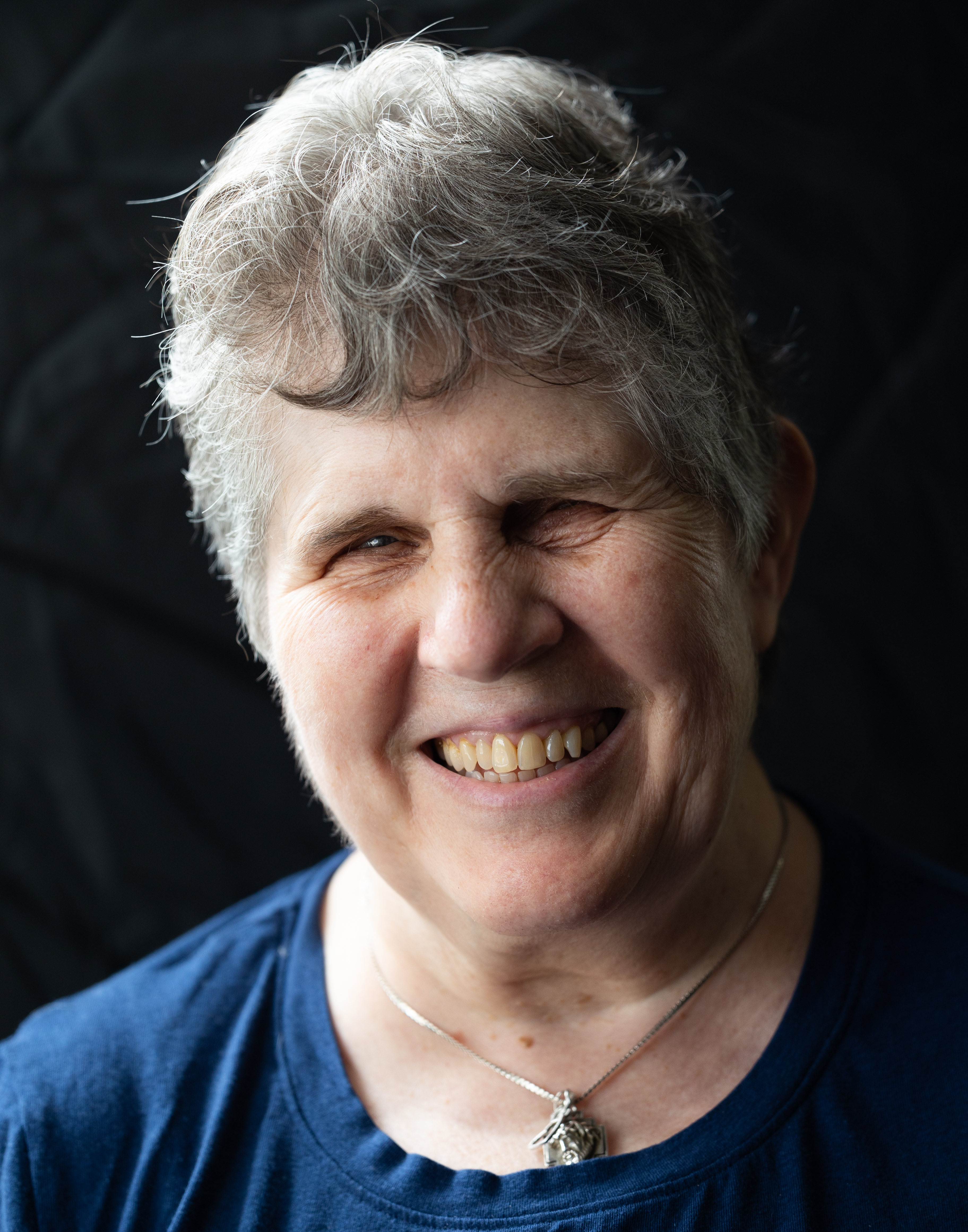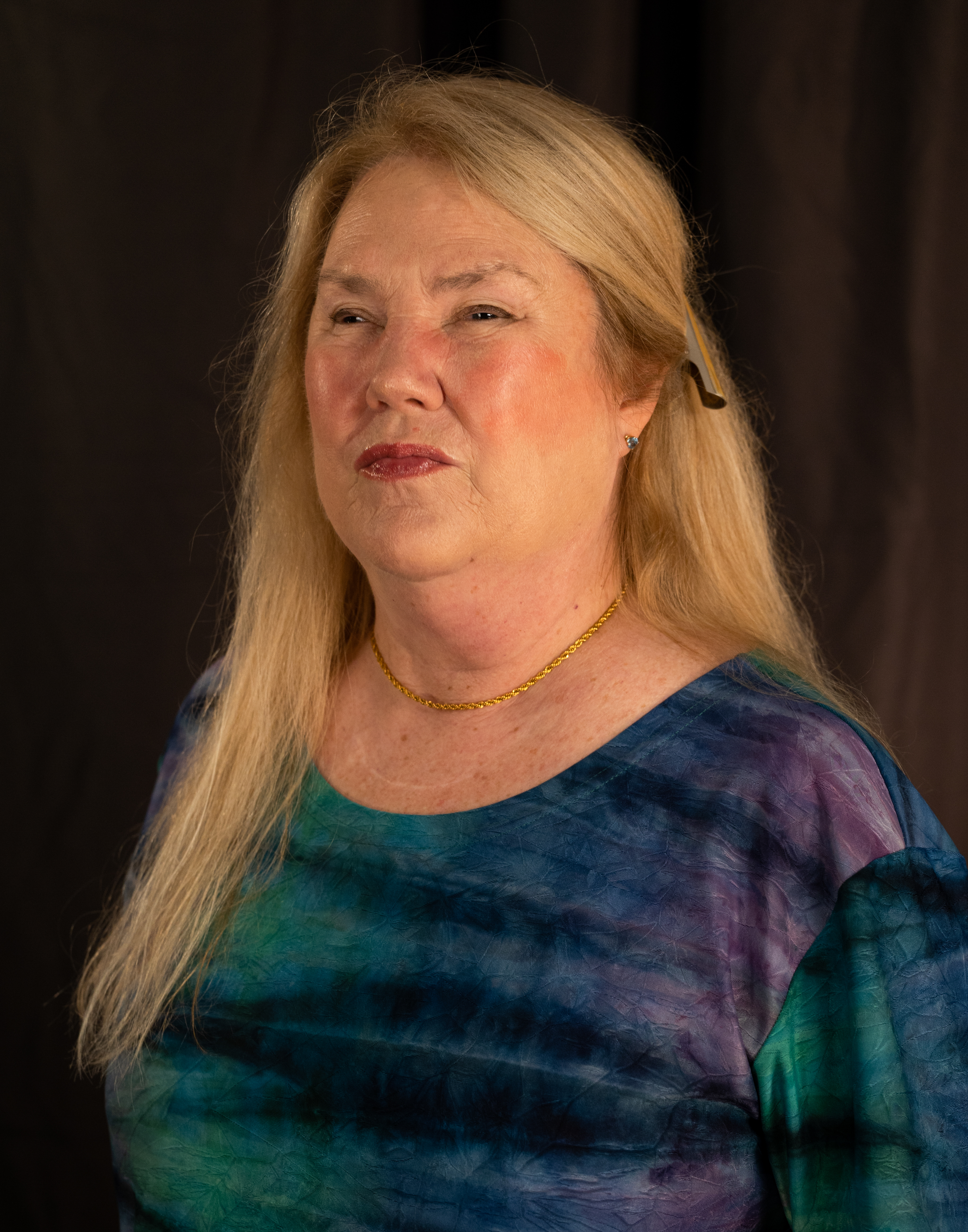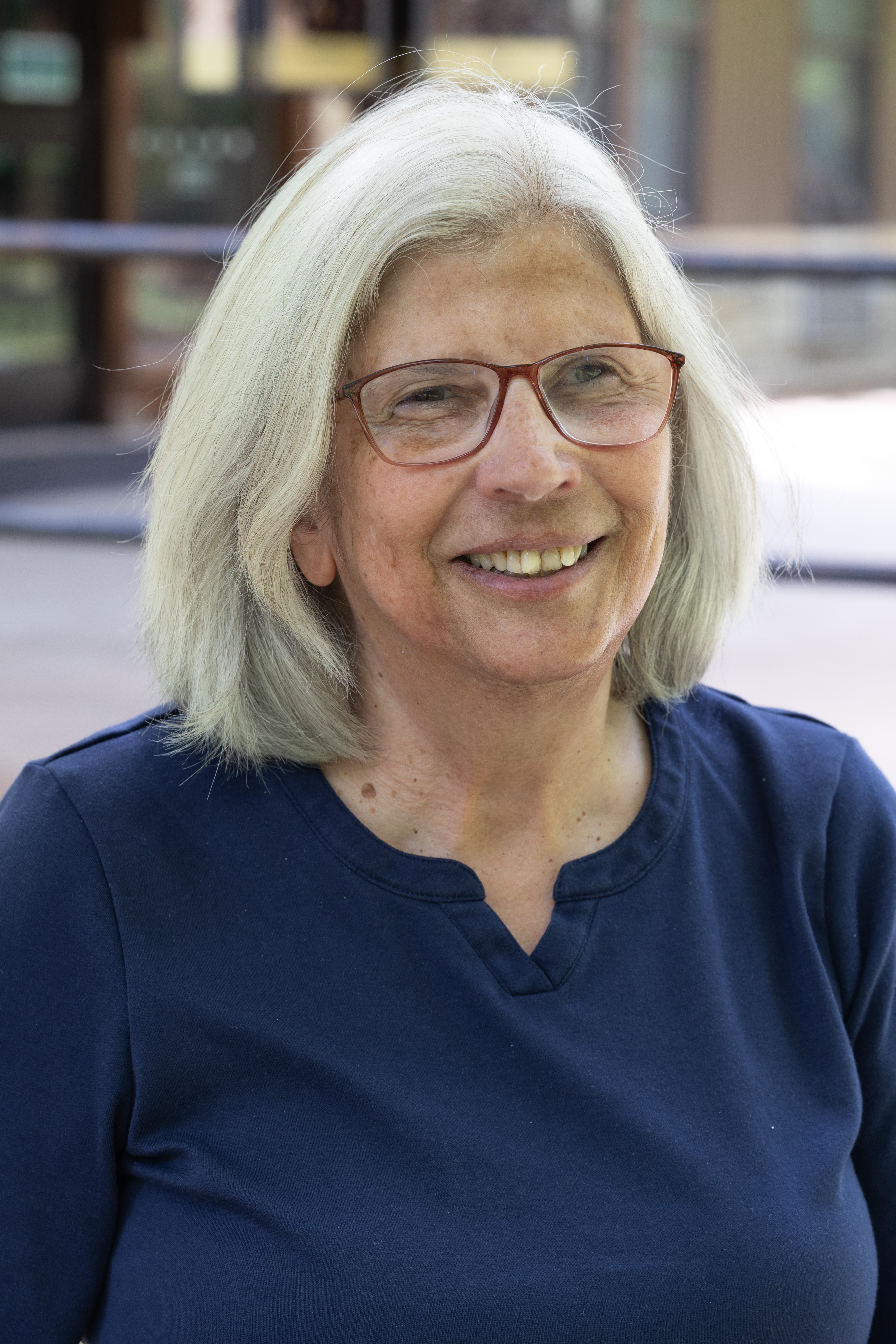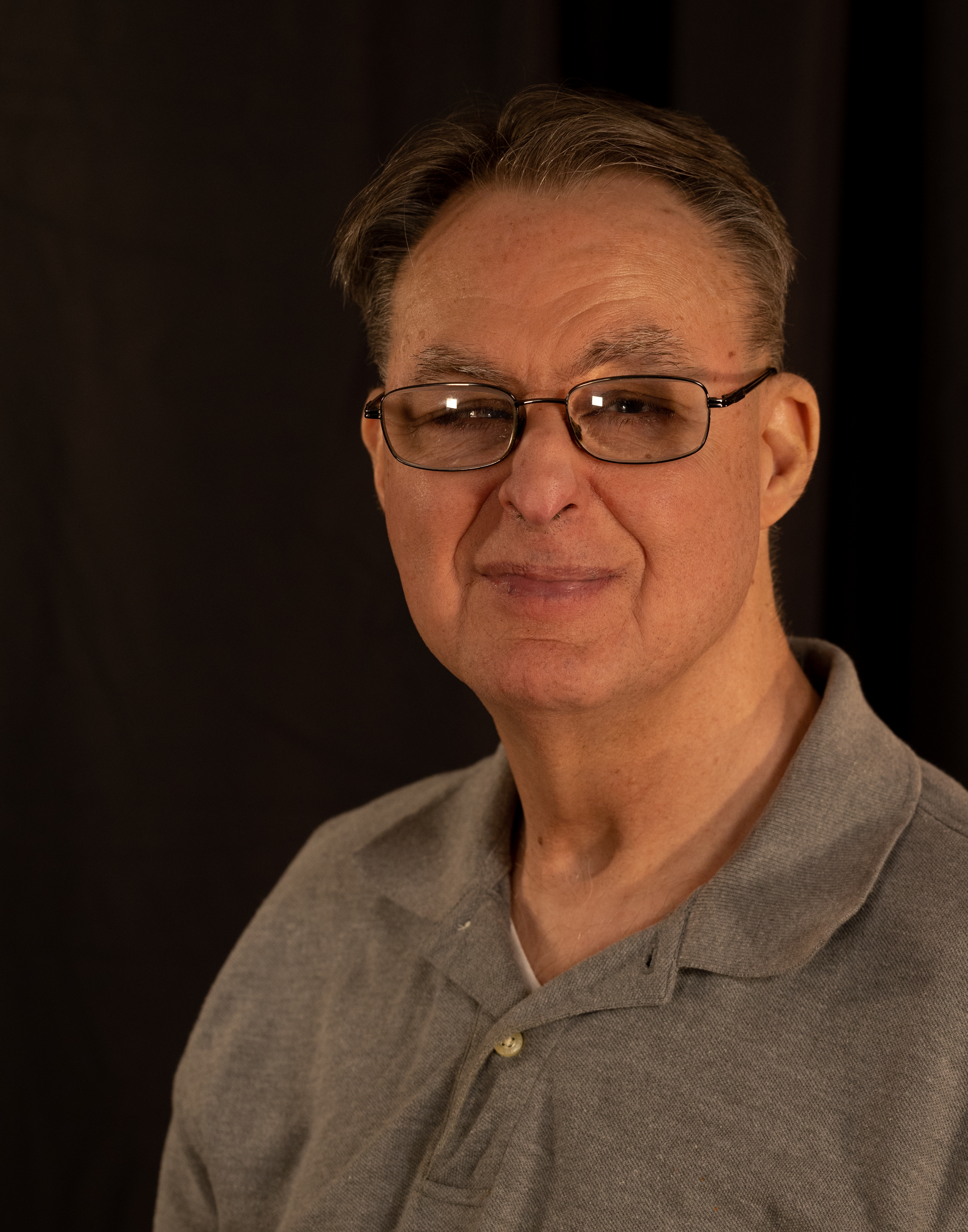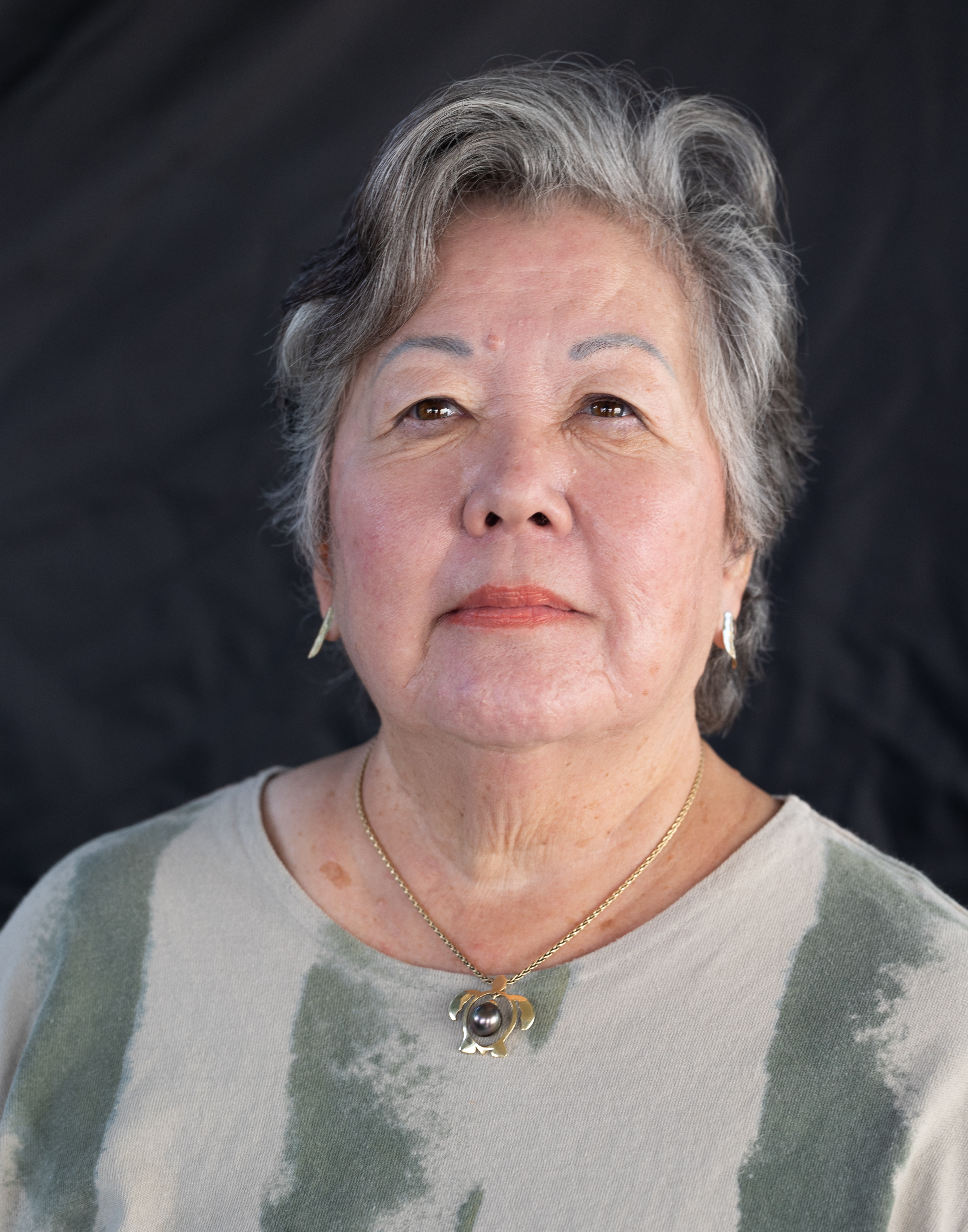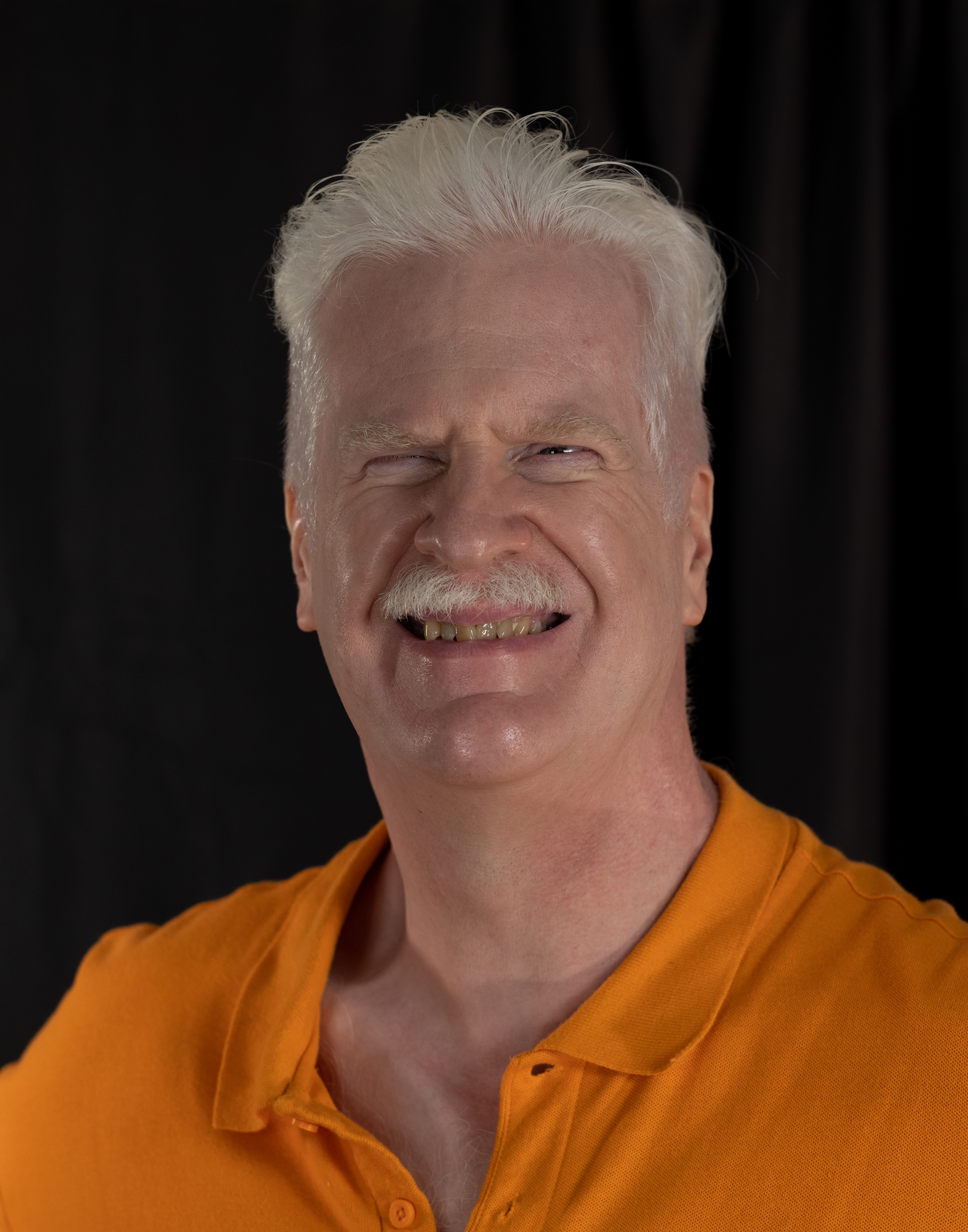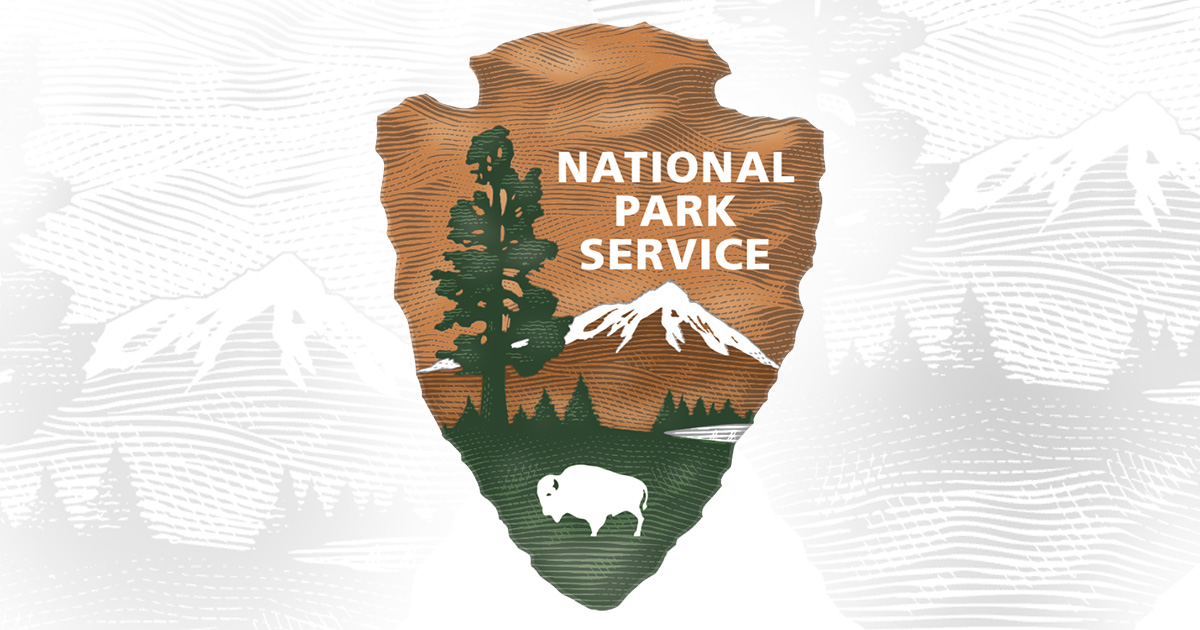Making a Difference
Where we've been. What we've done.
The UniDescription Project has made a lot of significant progress recently on its initiatives, including:
- Springfield Armory National Historic Site releases its audio-described brochure (December 2025). Jackie Cullen, a Youth Empowerment Steward intern from Conservation Legacy, spent the past few months working with Program Manager of Interpretation and Education Alan Amelinckx, and many others, at the Springfield Armory to audio describe its primary visitor brochure, which they released to the public on Dec. 15, with additional information about the project coming soon.
- The Forest of Marston Vale in the UK adds AD for Millennium Country Park (July 2025): Our team of collaborators at National Parks UK — Jo Roberts, who is the NP UK Community Engagement Officer, Samantha Leftwich of the Thomas Pocklington Trust, and UH Ph.D. student and UniD RA Daniel Bergin — has added a great new piece of AD for Millennium Country Park in the Forest of Marston Vale, in Bedfordshire, England, roughly between Bedford and Milton Keynes. This park is a multiple-time Green Flag Award winner, which represents the benchmark international standard for publicly accessible parks and green spaces in the United Kingdom. The 225-hectacre park also is home to thousands of species of birds, insects, and other wildlife. For those interested in hearing more about the Forest of Marston Vale itself, this same team audio described a brochure about it, too. What's next? This group of go-getters is considering a project focused on a local community rail line. If you want more AD in this area, please contact NP UK and make your requests. They are happy to help!
- Welcoming the Bureau of Land Management to UniD, via the Fort Craig Historic Site (May 2025): Camisha Cordova from the Public Lands Interpretive Association recently led a hearty effort to use UniD to audio describe the Fort Craig Historic Site visitor brochure in New Mexico. This is the first Bureau of Land Management description we have offered, and it has a distinct approach to the description, helping to orient listeners to the paper product, by describing that printed version section by section, which should be really helpful to orient people with low-vision to the brochure. If you enjoy hearing about historic forts, Fort Craig is the 10th one we have described, also including Fort Larned National Historic Site, Fort Moultrie National Historical Park, Fort Point National Historic Site, Fort Raleigh National Historic Site, Fort Scott National Historic Site, Fort Smith National Historic Site, Fort Stanwix National Monument, Fort Sumter National Historical Park, and Fort Vancouver National Historic Site. You can listen to them all either on the UniD app (search your app store for "UniDescription") or via the web on this UniD Impact page.
- Reconstruction Era National Historical Park adds AD for its "Lay of the Land" visitor center exhibit (May 2025): After finishing the Descriptathon 11 workshop in February (her second Descriptathon), and the AD for Reconstruction Era's UniGrid brochure, the park's Visual Information Specialist, Elena De Marco, led a small team on a major additional project over the past few months. With the help of NPS staffers Emma Novak Murphy and Chanda Powell, plus American Council of the Blind volunteer Lucas Cain, the team fully described the site's new "Lay of the Land" exhibit in the park's visitor center. On top of the hour-long brochure description already available via the UniD app, this exhibit adds an additional two hours of audio-described content to the site, making it one of the most thoroughly described sites in the National Park Service system.
- Pearl Harbor research at the 40th Annual Pacific Rim International Conference on Disability and Diversity in Honolulu (April 2025): This milestone conference will feature a complex and collaborative work combining insights by Dr. Brett Oppegaard and those of Portland State University professor Dr. Amy Parker and several of her students and colleagues related to our UniD-based studies of Audio Description + tactile objects at Pearl Harbor National Memorial: Parker, A., Oppegaard, B., Hopper, H., Swearingen, K., Neumann, L. & Cable, M. (2025, April 15-16). Accessibility at Pearl Harbor National Park Using Wayfinding Tools and Audio Descriptions for Visitors who are Blind, DeafBlind or have Low Vision. [Poster presentation]. Pacific Rim International Conference on Disability and Diversity, Honolulu, HI, U.S.
- Novel GenAI research aimed for the international Audio Description conference (March 2025): This presentation accepted to the Advanced Research Seminar on Audio Description (ARSAD), the primary AD research conference in the world (the only one completely focused on AD), starts with data Dr. Brett Oppegaard and research assistant Daniel Bergin gathered pre-ChatGPT and extends to new work and ideas that will be emerging right until the moment Dr. Oppegaard takes the stage: Oppegaard, B. (2025, March 19-21). A Strange New World. Behind the Scenes of Designing Novel Gen-AI Approaches to Audio Description. [Paper presentation]. Advanced Research Seminar on Audio Description (ARSAD), Barcelona, Spain.
- Descriptathon 11 (Feb. 25-27, 2025): We completed another major workshop in Audio Description this month, featuring about 180 people from around the world (including representatives from Canada, the U.K, Spain, Peru, Italy, and Hungary) who joined teams in California, Florida, Idaho, Louisiana, Maryland, Michigan, North Carolina, South Carolina, Texas, Washington state, Washington, D.C., West Virginia, and Wyoming to span the country and to help make the U.S. more-accessible for people who cannot see or cannot see well. We also had about 50 representatives from the American Council of the Blind, the Blinded Veterans Association, the Canadian Council of the Blind, and the Royal National Institute of Blind People. The public places made more accessible in this Descriptathon were:
Cape Hatteras National Seashore (North Carolina),
Chesapeake and Ohio Canal National Historical Park (District of Columbia, Maryland, and West Virginia),
Craters of the Moon National Monument and Preserve (Idaho),
Eisenhower National Historic Site (Pennsylvania),
Everglades National Park (Florida),
Fort Raleigh National Historic Site (North Carolina),
Grand Teton National Park (Wyoming),
Guilford Courthouse National Military Park (North Carolina),
Jean Lafitte National Historical Park and Preserve (Louisiana),
Moores Creek National Battlefield (North Carolina),
Olympic National Park (Washington),
Reconstruction Era National Historical Park (South Carolina),
San Antonio Missions National Historical Park (Texas),
Seney National Wildlife Refuge (Michigan),
White House and President's Park (District of Columbia),
Wright Brothers National Memorial (North Carolina),
and Yosemite National Park (California).
- Kalaupapa National Historical Park brochure audio described by independent team (January 2025): Miki’ala Pescaia, an Interpretive Park Ranger for the U.S. National Park Service, a former Descriptathon participant, and a descendant of a long line of kanaka maoli storytellers on Moloka‘i island, collaborated with a couple of long-time UniDescription volunteers and Descriptathon veterans, Vickie and Jim Kennedy, and a UniDescription research assistant, Daniel Bergin, to complete these descriptions for the Kalaupapa National Historical Park brochure this month. They now are available online or in the free UniD mobile app (just search for "unidescription" in your app market for the app). While all national parks have unique stories, this particular park is unusually difficult to access, and because of its complicated history, has an extremely nuanced story to tell, requiring master storytellers. We had the right team, and they did a phenomenal job with this brochure. If you can't make it to Moloka‘i to hear them emplaced, they still help to create a great audio experience to help learn about the island and its past. The Hawaii Catholic Reporter covered the effort, too, focusing on the great backstory by the Kennedys.
- Montréal media organizations welcome UniD, Guidedogs, and Access Hound to the center of French Canada (December 2024): Starting with a nationally broadcast event through Radio Canada, "Accessibilité des médias: Perspectives et enjeux," featuring Dr. Brett Oppegaard, media organizations and universities throughout Montréal learned about Audio Description, the UniDescription project, the UniD Guidedogs, the Access Hound Guidedogs, and other related research projects led by Dr. Oppegaard with the shared goal of making more-accessible and more-inclusive media. The AI-powered 'Dogs, for example, are part of a suite of online tools developed by Dr. Oppegaard to help anyone create better Audio Description. They can serve as writing coaches and as "personas," providing model descriptions as well as robust and diverse feedback about descriptions.
- Council of Citizens with Low Vision International joins effort to boost Descriptathon 11 (November 2024): Vision Access, the monthly publication of the Council of Citizens with Low Vision International, invited Dr. Brett Oppegaard to contribute the piece "Make National Parks More Accessible by Joining Descriptathon 11” as a way to recruit its members to participate, and the call worked, with several CCLVI members signing up shortly after the piece was published.
- Canaveral National Seashore brochure audio described by the Young Sound Seekers (June 2024): A community collaboration with UniD — led by Eve Payor, the Community Arts Director of the Atlantic Center for the Arts, and Nathan Wolek, Ph.D., a Professor of Digital Arts and Music Technology at Stetson University — led this month to the audio description of the visitor brochure for Canaveral National Seashore in Florida. Payor and Wolek worked on this project with the Young Sound Seekers, an environmental arts program at the ACA for young people who are blind or who have low-vision.
- Audio Description and GenAI, what should we make of it? A panel discussion at the Audio Description Project Conference (June 2024): Dr. Brett Oppegaard participated in a panel about the pros and cons of GenAI making headway in Audio Description production contexts, trying to put all of this into a historical media-ecology perspective: Oppegaard, B., Miele, J., Snyder, T., & Snyder, J. (2024, June 28). Audio Description and Artificial Intelligence: What Can and Can’t It Do? [Panel presentation]. American Council of the Blind’s Audio Description Project Conference, online.
- Half-day workshop for geographers is a hit (April 2024): Dr. Brett Oppegaard led a half-day, hands-on workshop for geographers at this prime international conference: Oppegaard, B. (2024, April 17). The Unidescription Project: Better Describing Maps for the Visually Impaired [Workshop presentation]. American Association of Geographers, Honolulu, HI.
- Descriptathon 10 (Feb. 6-8, 2024): Our Descriptathons just keep getting bigger, more-diverse, and better, with more than 150 people participating in D10 (a new record), including participants from throughout North America (in the U.S., Canada and Mexico) and in Western Europe (in the United Kingdom and Italy), including representatives from the U.S. National Park Service, the American Council of the Blind, the Blinded Veterans Association, the Canadian Council of the Blind, the Royal National Institute of Blind People, and many other organizations. The public places made more accessible in this Descriptathon were:
Abraham Lincoln Birthplace National Historical Park (Kentucky),
Acadia National Park (Maine),
Aquariums and Zoos of America (Multiple Sites, U.S.), Aquarium of the Pacific (California), for example,
Big Hole National Battlefield (Montana),
Ice Age Floods National Geologic Trail (Washington, Oregon, Idaho, Montana),
Joshua Tree National Park (California),
Klondike Gold Rush National Historical Park (Washington),
Natchez Trace Parkway (Alabama, Mississippi, Tennessee),
Nicodemus National Historic Site (Kansas),
Pinnacles National Park (California),
Rock Creek Park (District of Columbia),
Rocky Mountain National Park (Colorado),
Saint Croix Island International Historic Site (Maine),
Saint Croix National Scenic Riverway (Wisconsin, Minnesota),
Scotts Bluff National Monument (Nebraska),
Sands Point Preserve Conservancy (New York)
- A return visit to Cuyahoga Valley National Park, and a new data-collection site in California (January 2024): Sajja Koirala, a UniD Research Assistant and a Ph.D. student at UH Manoa, wrapped up the data-collection phase of her dissertation by producing one more study in Ohio about how people who are blind or people who have low-vision prepare to visit a national park. She also made a stop at the Rosie the Riveter World War II Home Front National Historical Park in California to test her hypotheses on visitors to a different park site.
- Parks Canada collaborates with The UniDescription Project on its national brochure, in both English and French (January 2024): With the upgrade of our new synthetic French voice, Parks Canada has authorized our release of an audio-described version of its countrywide brochure in both French and are English, in collaboration with members of the Canadian Council of the Blind.
- The UniDescription Project inspires a second song about its accessibility efforts (December 2023): Some UniD fans might recall the catchy Descriptathon song called "Hear the World" produced and performed by Research Assistant Andreas Miguel for Descriptathon 9 in 2022. Maybe that wasn't a once-in-a-lifetime moment after all. Miguel is working on a follow-up tune for D10, and research participant Lance Kamaka of Honolulu, Hawai'i, is adding to that audio collection. After spending a day at Pearl Harbor National Memorial in November 2023 collaborating with our research team, Kamaka went home and composed a reggae-sounding song that thanked us and Pearl Harbor for our work in making that place more accessible to people who cannot see or cannot see well. The song is called "Pearl Harbor Park," and weʻre predicting it will be another hit, at least among audio describers around the world.
- Research about planning a park visit (November 2023): UniD Research Assistant (and UH Manoa Ph.D. Student) Sajja Koirala is studying the preparation stage of visiting national parks within the "Complete Trip" model. She has been spending the past several months gathering data about her ideas, including in November 2023 at Cuyahoga Valley National Park in Ohio. She plans to return to this site in early 2024 as well to gather more data about how people who are blind or who have low-vision get themselves ready to visit a national park.
- Testing tactile objects with Audio Description at Pearl Harbor National Memorial (November 2023): We were back at Pearl Harbor in November to spend more time working on ideas we are developing about the force-multiplying effects of tactile objects combined with Audio Description. This part of the study was led by co-PI Dr. Amy Parker of Portland State University and certified orientation & mobility specialist Leah Neumann, and it combined in extremely unusual ways tactile maps, tactile objects, and Audio Description. We are breaking new ground in this method, for certain, and we expect to process the results of all of this work in 2024.
- Research about Audio Description of tables and charts published (September 2023): Dr. Brett Oppegaard, Qiang Xu, and Dr. Thomas Hurtut co-authored "Audio describing tables and charts: A re-visualization process for sharing complex data sets with people who are blind or who have low-vision" in the academic journal STC Intercom.
- Field research conducted in national parks (April and June 2023): We had two major field-research events in the summer of 2023. The first one was in April, when we conducted studies on tactile and locative Audio Description at the Pearl Harbor National Memorial in Honolulu, HI, with the help of collaborators in the Hawaii Association of the Blind. The second one was in June at the Pullman National Historical Park in Chicago, IL, supported by the American Council of the Blind and led by UniD Research Assistant (and Ph.D. Student) Sajja Koirala, who is studying the preparation stage of visiting national parks and how AD can support such preparation.
- Research presented at the international Audio Description conference (April 2023): The Advanced Research Seminar on Audio Description (ARSAD) is the primary AD research conference in the world (the only one completely focused on AD). This was the first year UniD had a presence, and it went well, with the presentation of this paper, sharing the results of our National Endowment for the Arts’ research into Audio Description: Oppegaard, B. (2023, April 19-20). Is it Art? Or is it Audio Description? Experiments on the boundaries of media accessibility [Paper presentation]. Advanced Research Seminar on Audio Description (ARSAD), Barcelona, Spain.
- Our first collaboration with a state park, Fremont Indian State Park in Utah (Feburary 2023): One of our dreams when starting this project many years ago was that we would build such a robust online system and such an intuitive interface that anyone, anywhere could use it. We pictured the people who would just open up the UniD website, learn about Audio Description, make their descriptions, and then share them with the world, all independently, and tailored the programming toward that goal. This exact process happens from time to time, but we've never had it happen in a state park before. So you can imagine our delight when we were told about the independent UniD project at Fremont Indian State Park directed by Monica Stamm, Graphic Design and Interpretive Media Specialist in the Utah Department of Natural Resources' Division of State Parks. Stamm and her team signed up for free accounts on UniD, signed in, learned about AD, wrote AD about their site's printed park newspaper guide, and then released that content to the world. Easy to do. You can do it, too. Thanks for being such a media-accessibility inspiration Team Fremont Indian State Park (and Monica)!
- The Hawaii Association of the Blind's print brochure has been audio described (January 2023): Our Hawaii-based group of audio-description enthusiasts (including Vickie and Jim Kennedy) and Maine-based Research Assistant Beth Arnold thought it only made sense to have the Hawaii Association of the Blind brochure accessible to people who can't see it or see it well. So what did they do? They used UniD to describe it, and here are the results.
- Research about "Audio Describing People and Portraits" published (December 2022): Drs. Megan Conway and Brett Oppegaard collaborated with graduate students Matt Bullen, Andreas Miguel, and T. Brown-Ogilvie to co-author "Describing people and portraits through audio description: Preferences of people who are blind, low vision, and DeafBlind" for Helen Keller Services.
- Research about "the Descriptathon Way" published (November 2022): Dr. Brett Oppegaard and Dr. Michael Rabby co-authored "Gamifying Good Deeds: User Experience, Agency, and Values in Play During a Descriptathon" in the academic journal Technical Communication.
- Research about gender expressions in Audio Description published (October 2022): Dr. Brett Oppegaard and UniD Research Assistant Andreas Miguel co-authored "Audio description of gender: self-description as an evocation of identity" in the academic journal Perspectives.
- Descriptathon 9 (October 18-20, 2022): In the largest Descriptathon to date (in terms of number of participants), our Audio Description workshop attacted about 140 people from throughout North America (U.S. and Canada) and also including Royal National Institute of Blind People members in the United Kingdom. We collaborated with organizations such as the U.S. National Park Service, the American Council of the Blind, Parks Canada, the Blinded Veterans Association, and the U.S. Fish & Wildlife Service, plus others. The public places made more accessible in this Descriptathon were:
Agate Fossil Beds National Monument (Nebraska),
Aquarium of the Pacific (California),
Big Thicket National Preserve (Texas),
Bighorn Canyon National Recreation Area (Montana),
Brooklyn Botanic Garden (New York),
Bryce Canyon National Park (Utah),
Cape Breton Highlands National Park (Nova Scotia, Canada),
Fort Union Trading Post National Historic Site (Missouri),
George Washington Carver National Monument (Missouri),
Great Basin National Park (Nevada),
Lewis and Clark National Historic Trail (Iowa, Idaho, Illinois, Kansas, Kentucky, Missouri, Montana, Nebraska, North Dakota, Ohio, Oregon, Pennsylvania, South Dakota, Washington, and West Virginia),
Mount Rushmore National Monument (South Dakota),
Pahranagat National Wildlife Refuge (Nevada),
Pullman National Monument (Illinois),
Sequoia and Kings Canyon National Parks (California),
and Zion National Park (Utah).
- Presenting a panel discussion at IAAF about our project (October 2022): A trio of UniDescription contributors (Michele Hartley of the U.S. National Park Service, Dr. Brett Oppegaard of the University of Hawaii, and Pat Sheehan, Section 508 Program Manager of the U.S. Department of Veterans Affairs) provided a panel discussion Oct. 12 at the Interagency Accessibility Forum (IAAF) about "The UniDescription Project: Audio Describing the World, One Brochure at a Time."
- Cedar Creek and Belle Grove National Historical Park in Virginia joins UniD (September 2022): A creative team at Cedar Creek and Belle Grove — led by Adam C. Prato, Program Manager for Interpretation, Education, & Visitor Services, and professional audio-describer Christine Lowe — developed and released a new audio-described brochure for the site, which includes Lowe's vocal performance of the descriptions.
- Added Hawai'i's Puʻuhonua o Hōnaunau National Historical Park's audio-described brochure (September 2022): In addition to formal workshops, we also collaborate with public sites in informal ways to improve accessibility. In the case of Puʻuhonua o Hōnaunau NHP, the UniD research team and NPS staff on the Big Island, including Keola Awong and Kala Holiday, worked together outside of a Descriptathon context and were able to complete the park's audio-described brochure with the additional bonus of human-voiced descriptions created by Holiday.
- Helen Keller Services chose The UniDescription Project for an AccessAbility Award (June 2022): The UniDescription Project was picked for this national award in recognition of our efforts "to support individuals who are DeafBlind, blind or have low vision and make the society more accessible and inclusive through ... services, practices, products and workforce diversity efforts."
- Pearl Harbor memorials (May 2022): In collaboration with the Oahu-based NPS site, we have audio described brochures for:
Pearl Harbor National Memorial, Pearl Harbor National Memorial – USS Arizona,
Pearl Harbor National Memorial – USS Utah,
and the Pearl Harbor National Memorial – USS Oklahoma. - Goldsworthy in the Presidio (March 2022): We have completed the production work on a novel National Endowment for the Arts-funded Audio Description project within the Presidio in San Francisco, on a public- art walk featuring the work of Andy Goldsworthy. Here are the experimental variations:
Goldsworthy in the Presidio – Traditional Version, Machine Voice, Goldsworthy in the Presidio – Traditional Version, Alexa Voice,
Goldsworthy in the Presidio – Traditional Version, Human Voice,
Goldsworthy in the Presidio – Sound Art Version, Machine Voice, Goldsworthy in the Presidio – Sound Art Version, Alexa Voice,
Goldsworthy in the Presidio – Sound Art Version, Human Voice,
Goldsworthy in the Presidio – Sound Art Version, Human Voice (No Screenreader Text),
- Descriptathon 8 (Oct. 26-28, 2021): This event featured more than 100 participants and several new international partners, such as National Parks UK (which manages sites in England, Northern Ireland, Scotland, and Wales), the Royal National Institute of Blind People (England), Nigeria National Park Service, and the Canadian Council of the Blind. We collaborated once again with our U.S.-based partners in the U.S. National Park Service, and we also brought into the mix The Kennedy Center in Washington, D.C., one of the nation’s premiere performing arts facilities. In addition, we supported bilingual creation of Audio Description in English, French, Spanish, and Ojibwe. The public places made more accessible in this Descriptathon were:
Ala Kahakai National Historic Trail (Hawaii),
Apostle Islands National Lakeshore (Wisconsin),
Brown v. Board of Education National Historic Site (Kansas), Cave and Basin National Historic Site (Alberta, Canada),
Banff Park Museum National Historic Site (Alberta, Canada), Derwent Dam - Peak District National Park (Derbyshire, England, United Kingdom),
Fort Vancouver National Historic Site (Washington),
Fort Vancouver National Historic Site - McLoughlin House (Oregon), Gateway Arch National Park (Missouri),
Indiana Dunes National Park (Indiana), Isle Royale National Park (Michigan),
Kennedy Center Visitors Guide (Washington, D.C.),
Lake Roosevelt National Recreation Area (Washington),
Lewis and Clark National Historical Park (Oregon), Little Rock Central High School National Historic Site (Arkansas),
Santa Monica Mountains National Recreation Area (California),
South Downs National Park, Ditchling Beacon and The Chattri (West Sussex, England, United Kingdom),
and Whitman Mission National Historic Site (Washington). - Heritage Award, The Best in Heritage (October 2021): The UniDescription Project was chosen this year for an international award, as a “Project of Influence,” at The Best in Heritage conference in Dubrovnik, Croatia. The Best in Heritage is an annual and global gathering to celebrate award-winning museum, heritage and conservation projects.
- HKNC's Deaf-Blind Immersion Experience (March 2021): The Helen Keller National Center (HKNC) for Deaf-Blind Youths and Adults created a print brochure for its Deaf-Blind Immersion Experience (DBIE). They audio described it through UniD, too.
-
IMAGES: Goldsworthy in the Presidio
IMAGE 1 of 4: Spire
DESCRIPTION:
The top left is the Spire, constructed in 2006. 15" wide at the base and 100' tall, the Spire stands sharply vertical in a forest landscape. Facing towards the sunrise, and in the shadows there is a tall, pointed cone shaped structure in the distance, this is the Spire. The surrounding trees are much shorter than the Spire, showing the enormity of the structure. In the foreground, the view is partially obscured by three, skinny, bare trees.
IMAGE 2 of 4: Wood Line
DESCRIPTION:
Top right is the Wood Line, begun in 2010 and completed a year later. Where Spire is vertical, Wood Line is horizontal. Snaking 1200' through the forest near Lover's Lane, the Wood Line is assembled from eucalyptus trunks. Set in a grove of trees forming an arched tunnel are tree trunks arranged end to end winding back and forth along its entire length. Fog covers the tree lined path partially hiding the far end. Along the forest floor are patches of bright green grass mixed in with fallen, brown leaves.
IMAGE 3 of 4: Tree Fall
DESCRIPTION:
Bottom left is Tree Fall, created in 2013. Installed in a small nearly square powder magazine with an arched ceiling, the piece is a large multi limbed tree trunk suspended overhead and looking like it grows into and back out of the walls. The entire surface of the tree and the inside of the ceiling is covered with a dry, cracked, sand colored clay. This photo shows a closeup looking straight overhead at the center of the room. Two thicker branches enter from the right, split into 4 smaller branches, and wander out of sight. The tree and ceiling beyond all have the same color and texture with the cracks in the clay brushed over them clearly visible.
IMAGE 4 of 4: Earth Wall
DESCRIPTION:
Bottom right is Earth Wall. Centered in the image is a 6' diameter ball of tree trunks and branches embedded in a rammed earth wall. The ball has been dug out and carved from where it was cast into the surrounding wall, with deep gouged tool marks radiating around it. The branches have patches of dark brown to pale red bark exposed from the caked mud that holds them together. The mud of the wall is darker and slightly grayer than the clay used in Tree Fall.
Field Research
These photos show some of the research activities we have done in the field around the world.
Portraits of People in the American Council of the Blind
In this Portrait project, American Council of the Blind members — who are blind or who have low-vision — were invited to have a portrait taken of them, from the shoulders up, on a black background. The images are shot very tightly, as a way to position the viewer to focus on the person's face and humanity. The participants also were guided through the process of making an Audio Description of the portrait. The descriptions provided here are based on what the person in the image wanted to say about themselves, after being guided through a series of prompts about potential topics of interest for their viewers/listeners, including name, gender, age, race/ethnicity, fashion/attire, facial expression, body shape/size, and any other aspects of their appearance they wanted to mention. The people in the portrait also were asked if they wanted to share the description with a first-person or third-person point of view.
Behind-the-Scenes
How do we do what we do? These photos will give you a behind-the-scenes look at our work.


